Fencing materials and techniques Stock Photos and Images
(155)See fencing materials and techniques stock video clipsQuick filters:
Fencing materials and techniques Stock Photos and Images
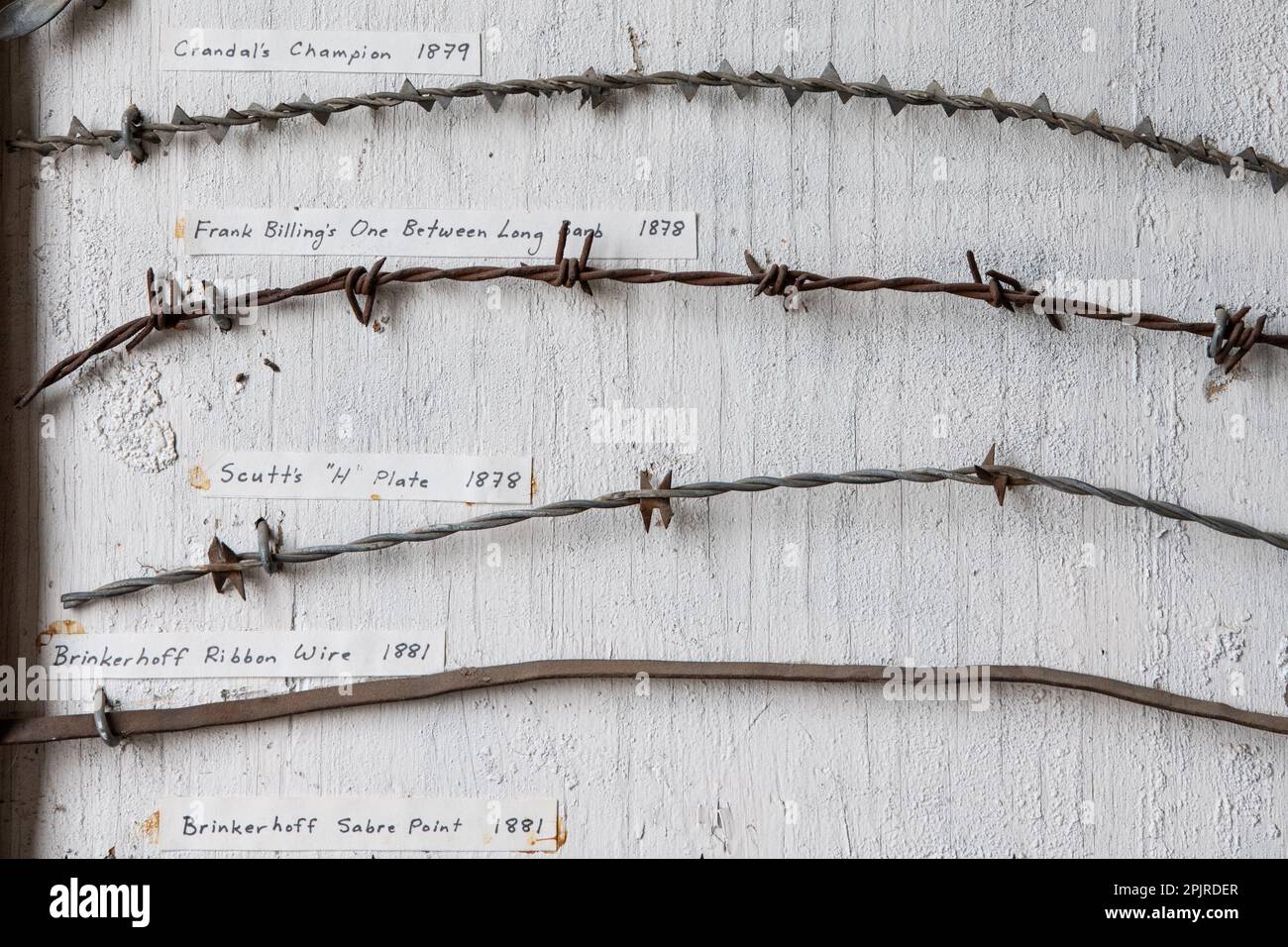 A mounted display of different antique barbed wire fencing varieties that were used in the American West and California in the 1800s. Stock Photohttps://www.alamy.com/image-license-details/?v=1https://www.alamy.com/a-mounted-display-of-different-antique-barbed-wire-fencing-varieties-that-were-used-in-the-american-west-and-california-in-the-1800s-image545100719.html
A mounted display of different antique barbed wire fencing varieties that were used in the American West and California in the 1800s. Stock Photohttps://www.alamy.com/image-license-details/?v=1https://www.alamy.com/a-mounted-display-of-different-antique-barbed-wire-fencing-varieties-that-were-used-in-the-american-west-and-california-in-the-1800s-image545100719.htmlRM2PJRDER–A mounted display of different antique barbed wire fencing varieties that were used in the American West and California in the 1800s.
 Rapier possibly German or Italian, Venice 1580 The rapier was the principal civilian sidearm throughout the sixteenth and seventeenth centuries. Designed for cut-and-thrust fencing of progressively complex techniques, the rapier is characterized by a double-edged blade with an acute point and an elaborate guard for the hand. The guards, usually of iron or steel, were subject to a variety of embellishment. They were engraved, chiseled, gilded, damascened, and encrusted in gold and silver in keeping with fashionable styles. Unless otherwise noted, the materials, attributions, and dating given he Stock Photohttps://www.alamy.com/image-license-details/?v=1https://www.alamy.com/rapier-possibly-german-or-italian-venice-1580-the-rapier-was-the-principal-civilian-sidearm-throughout-the-sixteenth-and-seventeenth-centuries-designed-for-cut-and-thrust-fencing-of-progressively-complex-techniques-the-rapier-is-characterized-by-a-double-edged-blade-with-an-acute-point-and-an-elaborate-guard-for-the-hand-the-guards-usually-of-iron-or-steel-were-subject-to-a-variety-of-embellishment-they-were-engraved-chiseled-gilded-damascened-and-encrusted-in-gold-and-silver-in-keeping-with-fashionable-styles-unless-otherwise-noted-the-materials-attributions-and-dating-given-he-image569500425.html
Rapier possibly German or Italian, Venice 1580 The rapier was the principal civilian sidearm throughout the sixteenth and seventeenth centuries. Designed for cut-and-thrust fencing of progressively complex techniques, the rapier is characterized by a double-edged blade with an acute point and an elaborate guard for the hand. The guards, usually of iron or steel, were subject to a variety of embellishment. They were engraved, chiseled, gilded, damascened, and encrusted in gold and silver in keeping with fashionable styles. Unless otherwise noted, the materials, attributions, and dating given he Stock Photohttps://www.alamy.com/image-license-details/?v=1https://www.alamy.com/rapier-possibly-german-or-italian-venice-1580-the-rapier-was-the-principal-civilian-sidearm-throughout-the-sixteenth-and-seventeenth-centuries-designed-for-cut-and-thrust-fencing-of-progressively-complex-techniques-the-rapier-is-characterized-by-a-double-edged-blade-with-an-acute-point-and-an-elaborate-guard-for-the-hand-the-guards-usually-of-iron-or-steel-were-subject-to-a-variety-of-embellishment-they-were-engraved-chiseled-gilded-damascened-and-encrusted-in-gold-and-silver-in-keeping-with-fashionable-styles-unless-otherwise-noted-the-materials-attributions-and-dating-given-he-image569500425.htmlRM2T2EYGW–Rapier possibly German or Italian, Venice 1580 The rapier was the principal civilian sidearm throughout the sixteenth and seventeenth centuries. Designed for cut-and-thrust fencing of progressively complex techniques, the rapier is characterized by a double-edged blade with an acute point and an elaborate guard for the hand. The guards, usually of iron or steel, were subject to a variety of embellishment. They were engraved, chiseled, gilded, damascened, and encrusted in gold and silver in keeping with fashionable styles. Unless otherwise noted, the materials, attributions, and dating given he
 The traditional Scandinavian wooden fence for an animal enclosure features slanted slats and double posts made from different types of wood. Stock Photohttps://www.alamy.com/image-license-details/?v=1https://www.alamy.com/the-traditional-scandinavian-wooden-fence-for-an-animal-enclosure-features-slanted-slats-and-double-posts-made-from-different-types-of-wood-image622251854.html
The traditional Scandinavian wooden fence for an animal enclosure features slanted slats and double posts made from different types of wood. Stock Photohttps://www.alamy.com/image-license-details/?v=1https://www.alamy.com/the-traditional-scandinavian-wooden-fence-for-an-animal-enclosure-features-slanted-slats-and-double-posts-made-from-different-types-of-wood-image622251854.htmlRF2Y4A0GE–The traditional Scandinavian wooden fence for an animal enclosure features slanted slats and double posts made from different types of wood.
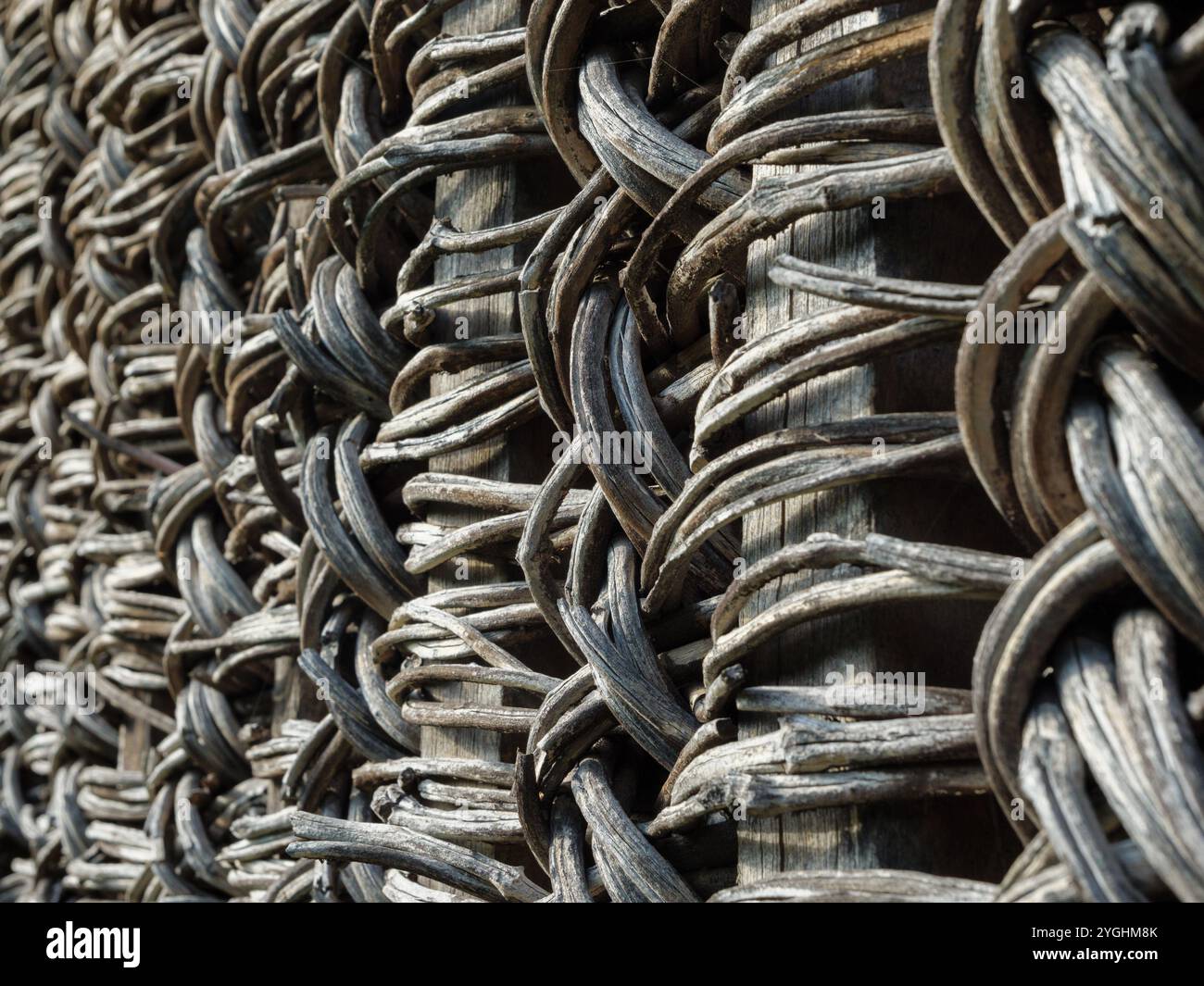 A close view of an old rustic fence made from intertwined natural materials. The rustic fence showcases woven branches, highlighting natural craftsmanship and age. Stock Photohttps://www.alamy.com/image-license-details/?v=1https://www.alamy.com/a-close-view-of-an-old-rustic-fence-made-from-intertwined-natural-materials-the-rustic-fence-showcases-woven-branches-highlighting-natural-craftsmanship-and-age-image629796851.html
A close view of an old rustic fence made from intertwined natural materials. The rustic fence showcases woven branches, highlighting natural craftsmanship and age. Stock Photohttps://www.alamy.com/image-license-details/?v=1https://www.alamy.com/a-close-view-of-an-old-rustic-fence-made-from-intertwined-natural-materials-the-rustic-fence-showcases-woven-branches-highlighting-natural-craftsmanship-and-age-image629796851.htmlRF2YGHM8K–A close view of an old rustic fence made from intertwined natural materials. The rustic fence showcases woven branches, highlighting natural craftsmanship and age.
 blue metal and glass lit water feature in modern landscaped garden Stock Photohttps://www.alamy.com/image-license-details/?v=1https://www.alamy.com/stock-photo-blue-metal-and-glass-lit-water-feature-in-modern-landscaped-garden-19495948.html
blue metal and glass lit water feature in modern landscaped garden Stock Photohttps://www.alamy.com/image-license-details/?v=1https://www.alamy.com/stock-photo-blue-metal-and-glass-lit-water-feature-in-modern-landscaped-garden-19495948.htmlRMB3M37T–blue metal and glass lit water feature in modern landscaped garden
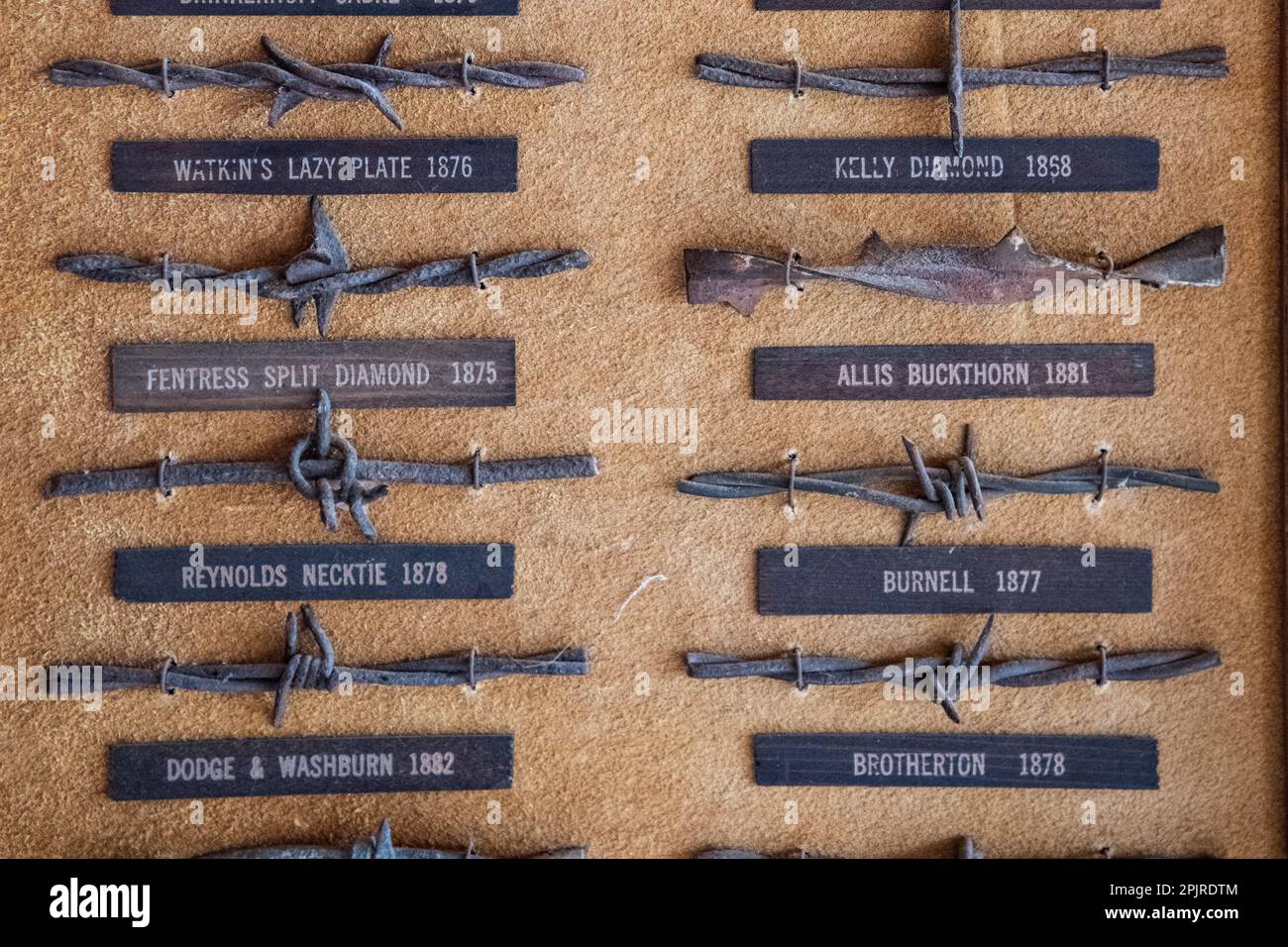 A mounted display of different antique barbed wire fencing varieties that were used in the American West and California in the 1800s. Stock Photohttps://www.alamy.com/image-license-details/?v=1https://www.alamy.com/a-mounted-display-of-different-antique-barbed-wire-fencing-varieties-that-were-used-in-the-american-west-and-california-in-the-1800s-image545100996.html
A mounted display of different antique barbed wire fencing varieties that were used in the American West and California in the 1800s. Stock Photohttps://www.alamy.com/image-license-details/?v=1https://www.alamy.com/a-mounted-display-of-different-antique-barbed-wire-fencing-varieties-that-were-used-in-the-american-west-and-california-in-the-1800s-image545100996.htmlRM2PJRDTM–A mounted display of different antique barbed wire fencing varieties that were used in the American West and California in the 1800s.
 Rapier Italian ca. 1600 The rapier was the principal civilian sidearm throughout the sixteenth and seventeenth centuries. Designed for cut-and-thrust fencing of progressively complex techniques, the rapier is characterized by a double-edged blade with an acute point and an elaborate guard for the hand. The guards, usually of iron or steel, were subject to a variety of embellishment. They were engraved, chiseled, gilded, damascened, and encrusted in gold and silver in keeping with fashionable styles. Unless otherwise noted, the materials, attributions, and dating given here refer to the hilts. Stock Photohttps://www.alamy.com/image-license-details/?v=1https://www.alamy.com/rapier-italian-ca-1600-the-rapier-was-the-principal-civilian-sidearm-throughout-the-sixteenth-and-seventeenth-centuries-designed-for-cut-and-thrust-fencing-of-progressively-complex-techniques-the-rapier-is-characterized-by-a-double-edged-blade-with-an-acute-point-and-an-elaborate-guard-for-the-hand-the-guards-usually-of-iron-or-steel-were-subject-to-a-variety-of-embellishment-they-were-engraved-chiseled-gilded-damascened-and-encrusted-in-gold-and-silver-in-keeping-with-fashionable-styles-unless-otherwise-noted-the-materials-attributions-and-dating-given-here-refer-to-the-hilts-image569499951.html
Rapier Italian ca. 1600 The rapier was the principal civilian sidearm throughout the sixteenth and seventeenth centuries. Designed for cut-and-thrust fencing of progressively complex techniques, the rapier is characterized by a double-edged blade with an acute point and an elaborate guard for the hand. The guards, usually of iron or steel, were subject to a variety of embellishment. They were engraved, chiseled, gilded, damascened, and encrusted in gold and silver in keeping with fashionable styles. Unless otherwise noted, the materials, attributions, and dating given here refer to the hilts. Stock Photohttps://www.alamy.com/image-license-details/?v=1https://www.alamy.com/rapier-italian-ca-1600-the-rapier-was-the-principal-civilian-sidearm-throughout-the-sixteenth-and-seventeenth-centuries-designed-for-cut-and-thrust-fencing-of-progressively-complex-techniques-the-rapier-is-characterized-by-a-double-edged-blade-with-an-acute-point-and-an-elaborate-guard-for-the-hand-the-guards-usually-of-iron-or-steel-were-subject-to-a-variety-of-embellishment-they-were-engraved-chiseled-gilded-damascened-and-encrusted-in-gold-and-silver-in-keeping-with-fashionable-styles-unless-otherwise-noted-the-materials-attributions-and-dating-given-here-refer-to-the-hilts-image569499951.htmlRM2T2EXYY–Rapier Italian ca. 1600 The rapier was the principal civilian sidearm throughout the sixteenth and seventeenth centuries. Designed for cut-and-thrust fencing of progressively complex techniques, the rapier is characterized by a double-edged blade with an acute point and an elaborate guard for the hand. The guards, usually of iron or steel, were subject to a variety of embellishment. They were engraved, chiseled, gilded, damascened, and encrusted in gold and silver in keeping with fashionable styles. Unless otherwise noted, the materials, attributions, and dating given here refer to the hilts.
 outdoor dining set in modern landscaped garden Stock Photohttps://www.alamy.com/image-license-details/?v=1https://www.alamy.com/stock-photo-outdoor-dining-set-in-modern-landscaped-garden-19499957.html
outdoor dining set in modern landscaped garden Stock Photohttps://www.alamy.com/image-license-details/?v=1https://www.alamy.com/stock-photo-outdoor-dining-set-in-modern-landscaped-garden-19499957.htmlRMB3M8B1–outdoor dining set in modern landscaped garden
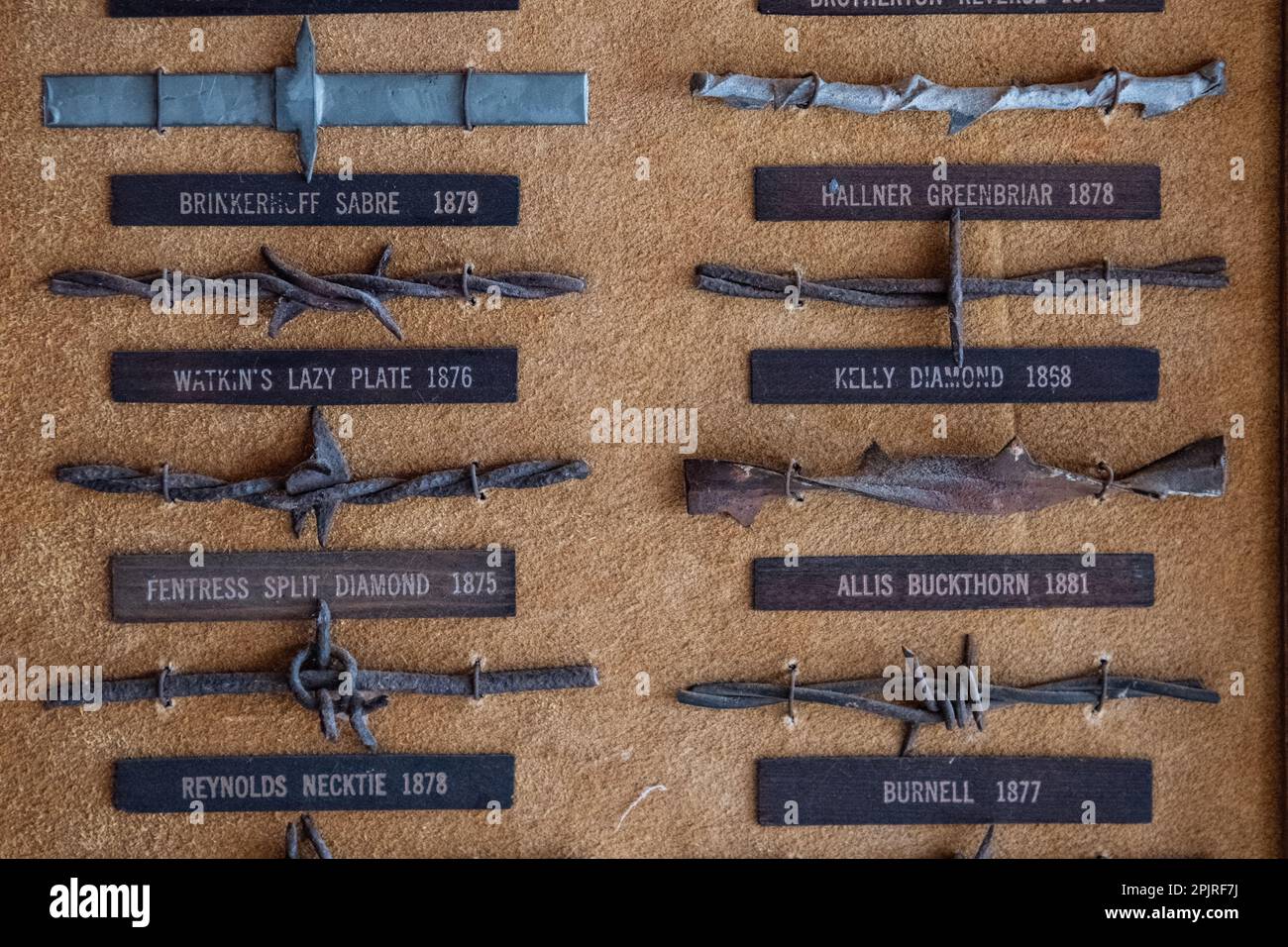 A mounted display of different antique barbed wire fencing varieties that were used in the American West and California in the 1800s. Stock Photohttps://www.alamy.com/image-license-details/?v=1https://www.alamy.com/a-mounted-display-of-different-antique-barbed-wire-fencing-varieties-that-were-used-in-the-american-west-and-california-in-the-1800s-image545102086.html
A mounted display of different antique barbed wire fencing varieties that were used in the American West and California in the 1800s. Stock Photohttps://www.alamy.com/image-license-details/?v=1https://www.alamy.com/a-mounted-display-of-different-antique-barbed-wire-fencing-varieties-that-were-used-in-the-american-west-and-california-in-the-1800s-image545102086.htmlRM2PJRF7J–A mounted display of different antique barbed wire fencing varieties that were used in the American West and California in the 1800s.
 Rapier Italian ca. 1580 The rapier was the principal civilian sidearm throughout the sixteenth and seventeenth centuries. Designed for cut-and-thrust fencing of progressively complex techniques, the rapier is characterized by a double-edged blade with an acute point and an elaborate guard for the hand. The guards, usually of iron or steel, were subject to a variety of embellishment. They were engraved, chiseled, gilded, damascened, and encrusted in gold and silver in keeping with fashionable styles. Unless otherwise noted, the materials, attributions, and dating given here refer to the hilts. Stock Photohttps://www.alamy.com/image-license-details/?v=1https://www.alamy.com/rapier-italian-ca-1580-the-rapier-was-the-principal-civilian-sidearm-throughout-the-sixteenth-and-seventeenth-centuries-designed-for-cut-and-thrust-fencing-of-progressively-complex-techniques-the-rapier-is-characterized-by-a-double-edged-blade-with-an-acute-point-and-an-elaborate-guard-for-the-hand-the-guards-usually-of-iron-or-steel-were-subject-to-a-variety-of-embellishment-they-were-engraved-chiseled-gilded-damascened-and-encrusted-in-gold-and-silver-in-keeping-with-fashionable-styles-unless-otherwise-noted-the-materials-attributions-and-dating-given-here-refer-to-the-hilts-image569500462.html
Rapier Italian ca. 1580 The rapier was the principal civilian sidearm throughout the sixteenth and seventeenth centuries. Designed for cut-and-thrust fencing of progressively complex techniques, the rapier is characterized by a double-edged blade with an acute point and an elaborate guard for the hand. The guards, usually of iron or steel, were subject to a variety of embellishment. They were engraved, chiseled, gilded, damascened, and encrusted in gold and silver in keeping with fashionable styles. Unless otherwise noted, the materials, attributions, and dating given here refer to the hilts. Stock Photohttps://www.alamy.com/image-license-details/?v=1https://www.alamy.com/rapier-italian-ca-1580-the-rapier-was-the-principal-civilian-sidearm-throughout-the-sixteenth-and-seventeenth-centuries-designed-for-cut-and-thrust-fencing-of-progressively-complex-techniques-the-rapier-is-characterized-by-a-double-edged-blade-with-an-acute-point-and-an-elaborate-guard-for-the-hand-the-guards-usually-of-iron-or-steel-were-subject-to-a-variety-of-embellishment-they-were-engraved-chiseled-gilded-damascened-and-encrusted-in-gold-and-silver-in-keeping-with-fashionable-styles-unless-otherwise-noted-the-materials-attributions-and-dating-given-here-refer-to-the-hilts-image569500462.htmlRM2T2EYJ6–Rapier Italian ca. 1580 The rapier was the principal civilian sidearm throughout the sixteenth and seventeenth centuries. Designed for cut-and-thrust fencing of progressively complex techniques, the rapier is characterized by a double-edged blade with an acute point and an elaborate guard for the hand. The guards, usually of iron or steel, were subject to a variety of embellishment. They were engraved, chiseled, gilded, damascened, and encrusted in gold and silver in keeping with fashionable styles. Unless otherwise noted, the materials, attributions, and dating given here refer to the hilts.
 Rapier Italian 1580 The rapier was the principal civilian sidearm throughout the sixteenth and seventeenth centuries. Designed for cut-and-thrust fencing of progressively complex techniques, the rapier is characterized by a double-edged blade with an acute point and an elaborate guard for the hand. The guards, usually of iron or steel, were subject to a variety of embellishment. They were engraved, chiseled, gilded, damascened, and encrusted in gold and silver in keeping with fashionable styles. Unless otherwise noted, the materials, attributions, and dating given here refer to the hilts. Rapi Stock Photohttps://www.alamy.com/image-license-details/?v=1https://www.alamy.com/rapier-italian-1580-the-rapier-was-the-principal-civilian-sidearm-throughout-the-sixteenth-and-seventeenth-centuries-designed-for-cut-and-thrust-fencing-of-progressively-complex-techniques-the-rapier-is-characterized-by-a-double-edged-blade-with-an-acute-point-and-an-elaborate-guard-for-the-hand-the-guards-usually-of-iron-or-steel-were-subject-to-a-variety-of-embellishment-they-were-engraved-chiseled-gilded-damascened-and-encrusted-in-gold-and-silver-in-keeping-with-fashionable-styles-unless-otherwise-noted-the-materials-attributions-and-dating-given-here-refer-to-the-hilts-rapi-image569500108.html
Rapier Italian 1580 The rapier was the principal civilian sidearm throughout the sixteenth and seventeenth centuries. Designed for cut-and-thrust fencing of progressively complex techniques, the rapier is characterized by a double-edged blade with an acute point and an elaborate guard for the hand. The guards, usually of iron or steel, were subject to a variety of embellishment. They were engraved, chiseled, gilded, damascened, and encrusted in gold and silver in keeping with fashionable styles. Unless otherwise noted, the materials, attributions, and dating given here refer to the hilts. Rapi Stock Photohttps://www.alamy.com/image-license-details/?v=1https://www.alamy.com/rapier-italian-1580-the-rapier-was-the-principal-civilian-sidearm-throughout-the-sixteenth-and-seventeenth-centuries-designed-for-cut-and-thrust-fencing-of-progressively-complex-techniques-the-rapier-is-characterized-by-a-double-edged-blade-with-an-acute-point-and-an-elaborate-guard-for-the-hand-the-guards-usually-of-iron-or-steel-were-subject-to-a-variety-of-embellishment-they-were-engraved-chiseled-gilded-damascened-and-encrusted-in-gold-and-silver-in-keeping-with-fashionable-styles-unless-otherwise-noted-the-materials-attributions-and-dating-given-here-refer-to-the-hilts-rapi-image569500108.htmlRM2T2EY5G–Rapier Italian 1580 The rapier was the principal civilian sidearm throughout the sixteenth and seventeenth centuries. Designed for cut-and-thrust fencing of progressively complex techniques, the rapier is characterized by a double-edged blade with an acute point and an elaborate guard for the hand. The guards, usually of iron or steel, were subject to a variety of embellishment. They were engraved, chiseled, gilded, damascened, and encrusted in gold and silver in keeping with fashionable styles. Unless otherwise noted, the materials, attributions, and dating given here refer to the hilts. Rapi
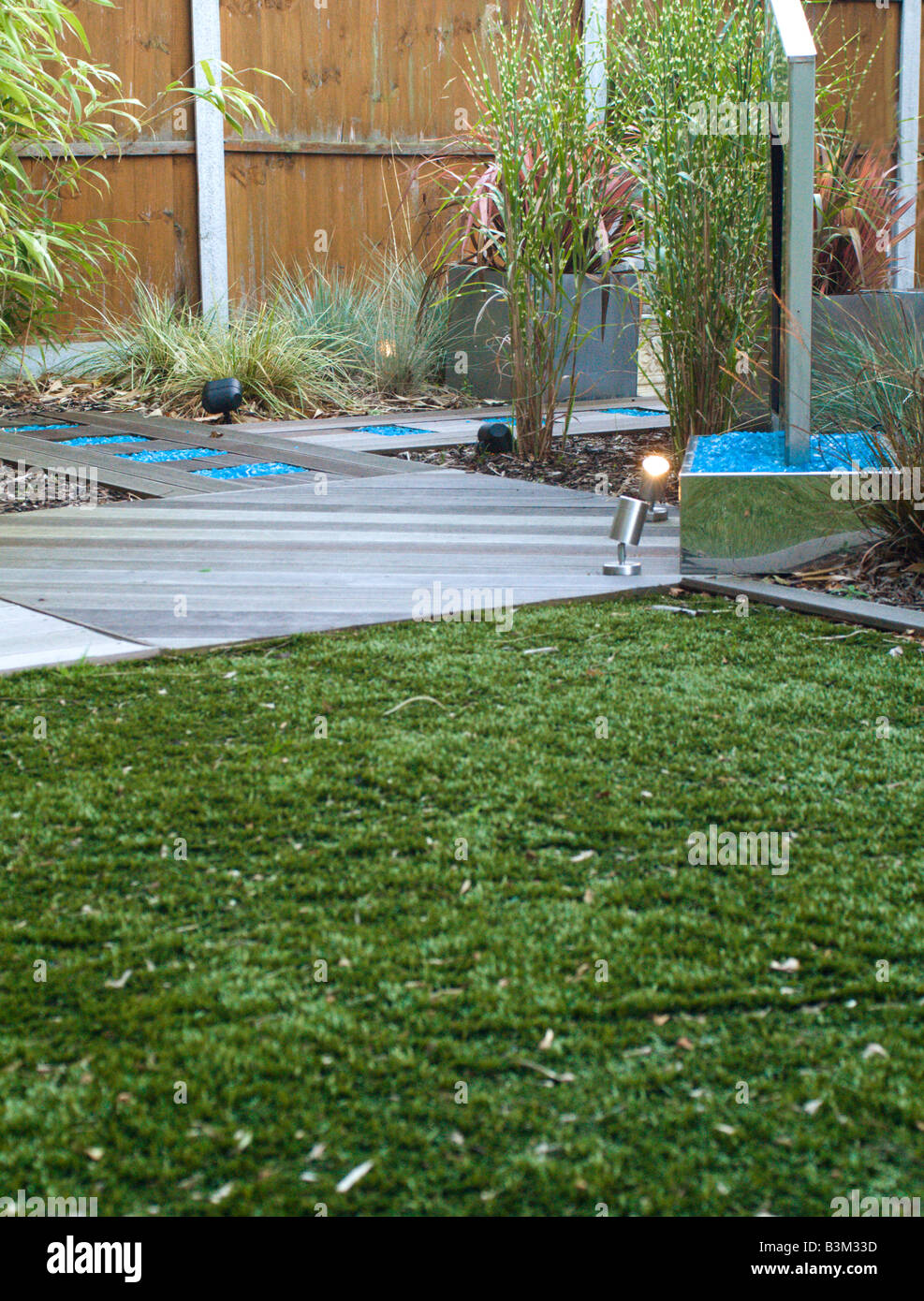 modern landscaped garden with water feature and astro-turf lawn and decking Stock Photohttps://www.alamy.com/image-license-details/?v=1https://www.alamy.com/stock-photo-modern-landscaped-garden-with-water-feature-and-astro-turf-lawn-and-19495825.html
modern landscaped garden with water feature and astro-turf lawn and decking Stock Photohttps://www.alamy.com/image-license-details/?v=1https://www.alamy.com/stock-photo-modern-landscaped-garden-with-water-feature-and-astro-turf-lawn-and-19495825.htmlRMB3M33D–modern landscaped garden with water feature and astro-turf lawn and decking
 Rapier Spanish ca. 1600 The rapier was the principal civilian sidearm throughout the sixteenth and seventeenth centuries. Designed for cut-and-thrust fencing of progressively complex techniques, the rapier is characterized by a double-edged blade with an acute point and an elaborate guard for the hand. The guards, usually of iron or steel, were subject to a variety of embellishment. They were engraved, chiseled, gilded, damascened, and encrusted in gold and silver in keeping with fashionable styles. Unless otherwise noted, the materials, attributions, and dating given here refer to the hilts. Stock Photohttps://www.alamy.com/image-license-details/?v=1https://www.alamy.com/rapier-spanish-ca-1600-the-rapier-was-the-principal-civilian-sidearm-throughout-the-sixteenth-and-seventeenth-centuries-designed-for-cut-and-thrust-fencing-of-progressively-complex-techniques-the-rapier-is-characterized-by-a-double-edged-blade-with-an-acute-point-and-an-elaborate-guard-for-the-hand-the-guards-usually-of-iron-or-steel-were-subject-to-a-variety-of-embellishment-they-were-engraved-chiseled-gilded-damascened-and-encrusted-in-gold-and-silver-in-keeping-with-fashionable-styles-unless-otherwise-noted-the-materials-attributions-and-dating-given-here-refer-to-the-hilts-image569498414.html
Rapier Spanish ca. 1600 The rapier was the principal civilian sidearm throughout the sixteenth and seventeenth centuries. Designed for cut-and-thrust fencing of progressively complex techniques, the rapier is characterized by a double-edged blade with an acute point and an elaborate guard for the hand. The guards, usually of iron or steel, were subject to a variety of embellishment. They were engraved, chiseled, gilded, damascened, and encrusted in gold and silver in keeping with fashionable styles. Unless otherwise noted, the materials, attributions, and dating given here refer to the hilts. Stock Photohttps://www.alamy.com/image-license-details/?v=1https://www.alamy.com/rapier-spanish-ca-1600-the-rapier-was-the-principal-civilian-sidearm-throughout-the-sixteenth-and-seventeenth-centuries-designed-for-cut-and-thrust-fencing-of-progressively-complex-techniques-the-rapier-is-characterized-by-a-double-edged-blade-with-an-acute-point-and-an-elaborate-guard-for-the-hand-the-guards-usually-of-iron-or-steel-were-subject-to-a-variety-of-embellishment-they-were-engraved-chiseled-gilded-damascened-and-encrusted-in-gold-and-silver-in-keeping-with-fashionable-styles-unless-otherwise-noted-the-materials-attributions-and-dating-given-here-refer-to-the-hilts-image569498414.htmlRM2T2EW12–Rapier Spanish ca. 1600 The rapier was the principal civilian sidearm throughout the sixteenth and seventeenth centuries. Designed for cut-and-thrust fencing of progressively complex techniques, the rapier is characterized by a double-edged blade with an acute point and an elaborate guard for the hand. The guards, usually of iron or steel, were subject to a variety of embellishment. They were engraved, chiseled, gilded, damascened, and encrusted in gold and silver in keeping with fashionable styles. Unless otherwise noted, the materials, attributions, and dating given here refer to the hilts.
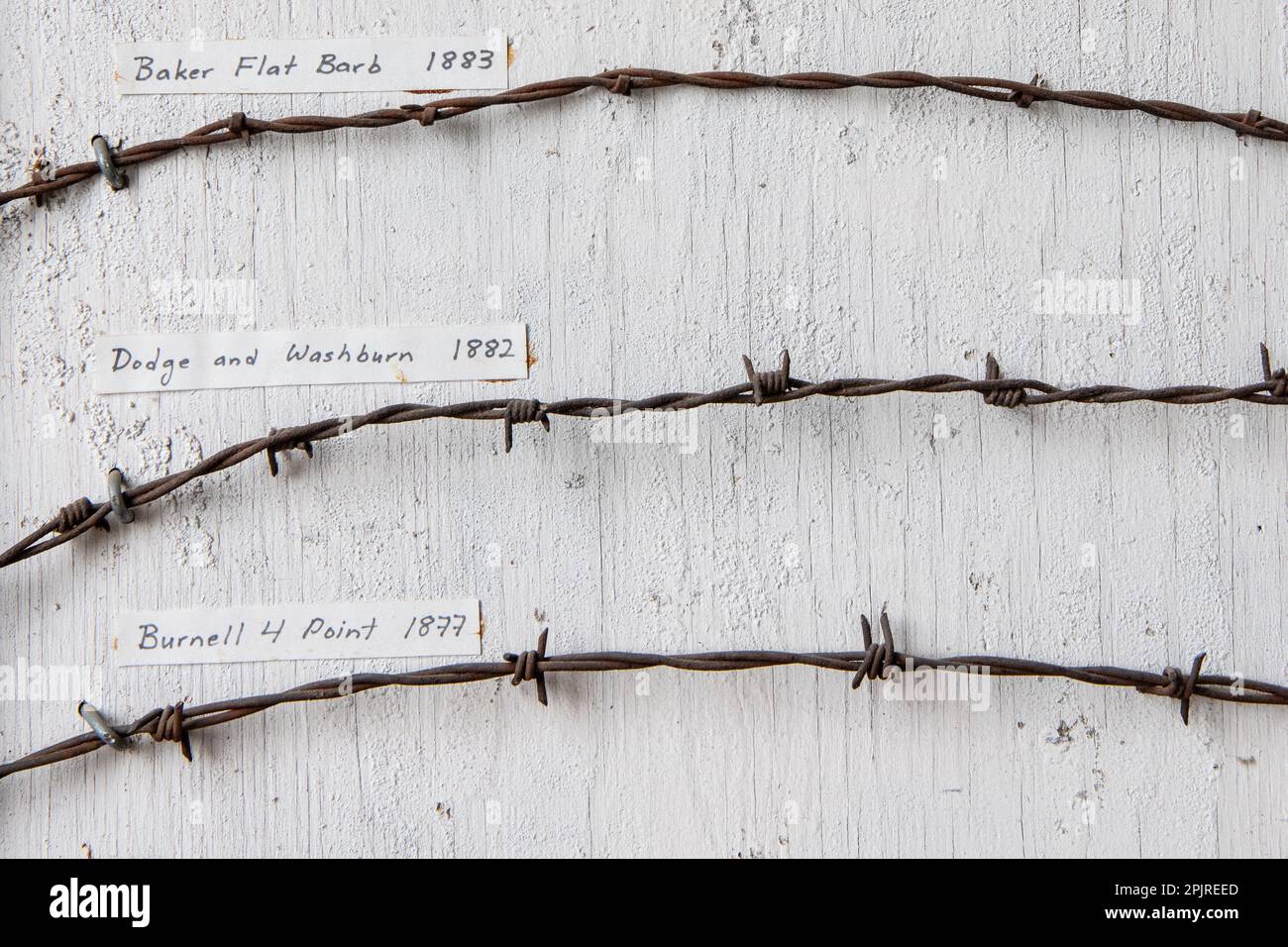 A mounted display of different antique barbed wire fencing varieties that were used in the American West and California in the 1800s. Stock Photohttps://www.alamy.com/image-license-details/?v=1https://www.alamy.com/a-mounted-display-of-different-antique-barbed-wire-fencing-varieties-that-were-used-in-the-american-west-and-california-in-the-1800s-image545101493.html
A mounted display of different antique barbed wire fencing varieties that were used in the American West and California in the 1800s. Stock Photohttps://www.alamy.com/image-license-details/?v=1https://www.alamy.com/a-mounted-display-of-different-antique-barbed-wire-fencing-varieties-that-were-used-in-the-american-west-and-california-in-the-1800s-image545101493.htmlRM2PJREED–A mounted display of different antique barbed wire fencing varieties that were used in the American West and California in the 1800s.
 outdoor dining set in modern landscaped garden Stock Photohttps://www.alamy.com/image-license-details/?v=1https://www.alamy.com/stock-photo-outdoor-dining-set-in-modern-landscaped-garden-19496842.html
outdoor dining set in modern landscaped garden Stock Photohttps://www.alamy.com/image-license-details/?v=1https://www.alamy.com/stock-photo-outdoor-dining-set-in-modern-landscaped-garden-19496842.htmlRMB3M4BP–outdoor dining set in modern landscaped garden
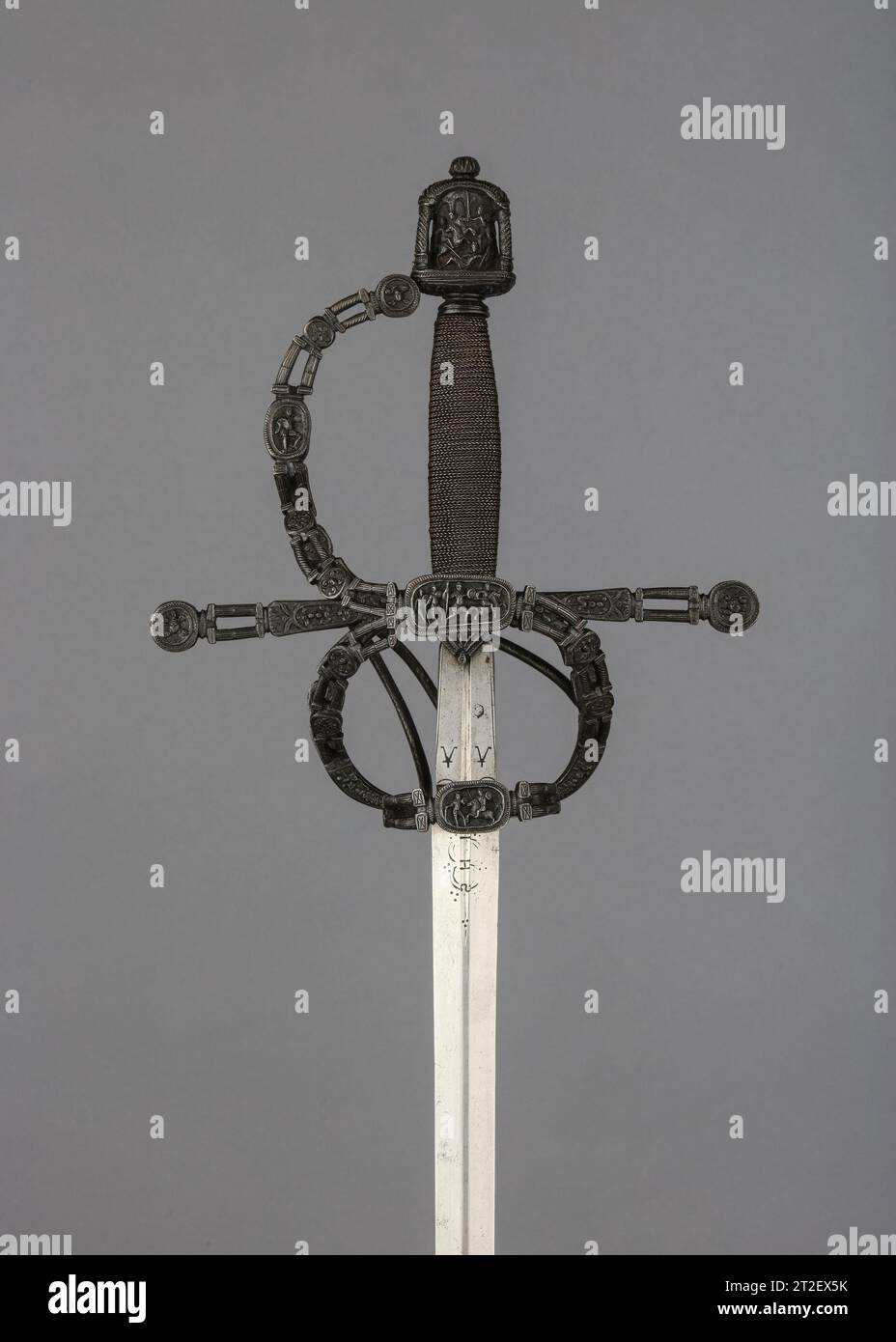 Rapier German, Saxony 1600 The rapier was the principal civilian sidearm throughout the sixteenth and seventeenth centuries. Designed for cut-and-thrust fencing of progressively complex techniques, the rapier is characterized by a double-edged blade with an acute point and an elaborate guard for the hand. The guards, usually of iron or steel, were subject to a variety of embellishment. They were engraved, chiseled, gilded, damascened, and encrusted in gold and silver in keeping with fashionable styles. Unless otherwise noted, the materials, attributions, and dating given here refer to the hilt Stock Photohttps://www.alamy.com/image-license-details/?v=1https://www.alamy.com/rapier-german-saxony-1600-the-rapier-was-the-principal-civilian-sidearm-throughout-the-sixteenth-and-seventeenth-centuries-designed-for-cut-and-thrust-fencing-of-progressively-complex-techniques-the-rapier-is-characterized-by-a-double-edged-blade-with-an-acute-point-and-an-elaborate-guard-for-the-hand-the-guards-usually-of-iron-or-steel-were-subject-to-a-variety-of-embellishment-they-were-engraved-chiseled-gilded-damascened-and-encrusted-in-gold-and-silver-in-keeping-with-fashionable-styles-unless-otherwise-noted-the-materials-attributions-and-dating-given-here-refer-to-the-hilt-image569499327.html
Rapier German, Saxony 1600 The rapier was the principal civilian sidearm throughout the sixteenth and seventeenth centuries. Designed for cut-and-thrust fencing of progressively complex techniques, the rapier is characterized by a double-edged blade with an acute point and an elaborate guard for the hand. The guards, usually of iron or steel, were subject to a variety of embellishment. They were engraved, chiseled, gilded, damascened, and encrusted in gold and silver in keeping with fashionable styles. Unless otherwise noted, the materials, attributions, and dating given here refer to the hilt Stock Photohttps://www.alamy.com/image-license-details/?v=1https://www.alamy.com/rapier-german-saxony-1600-the-rapier-was-the-principal-civilian-sidearm-throughout-the-sixteenth-and-seventeenth-centuries-designed-for-cut-and-thrust-fencing-of-progressively-complex-techniques-the-rapier-is-characterized-by-a-double-edged-blade-with-an-acute-point-and-an-elaborate-guard-for-the-hand-the-guards-usually-of-iron-or-steel-were-subject-to-a-variety-of-embellishment-they-were-engraved-chiseled-gilded-damascened-and-encrusted-in-gold-and-silver-in-keeping-with-fashionable-styles-unless-otherwise-noted-the-materials-attributions-and-dating-given-here-refer-to-the-hilt-image569499327.htmlRM2T2EX5K–Rapier German, Saxony 1600 The rapier was the principal civilian sidearm throughout the sixteenth and seventeenth centuries. Designed for cut-and-thrust fencing of progressively complex techniques, the rapier is characterized by a double-edged blade with an acute point and an elaborate guard for the hand. The guards, usually of iron or steel, were subject to a variety of embellishment. They were engraved, chiseled, gilded, damascened, and encrusted in gold and silver in keeping with fashionable styles. Unless otherwise noted, the materials, attributions, and dating given here refer to the hilt
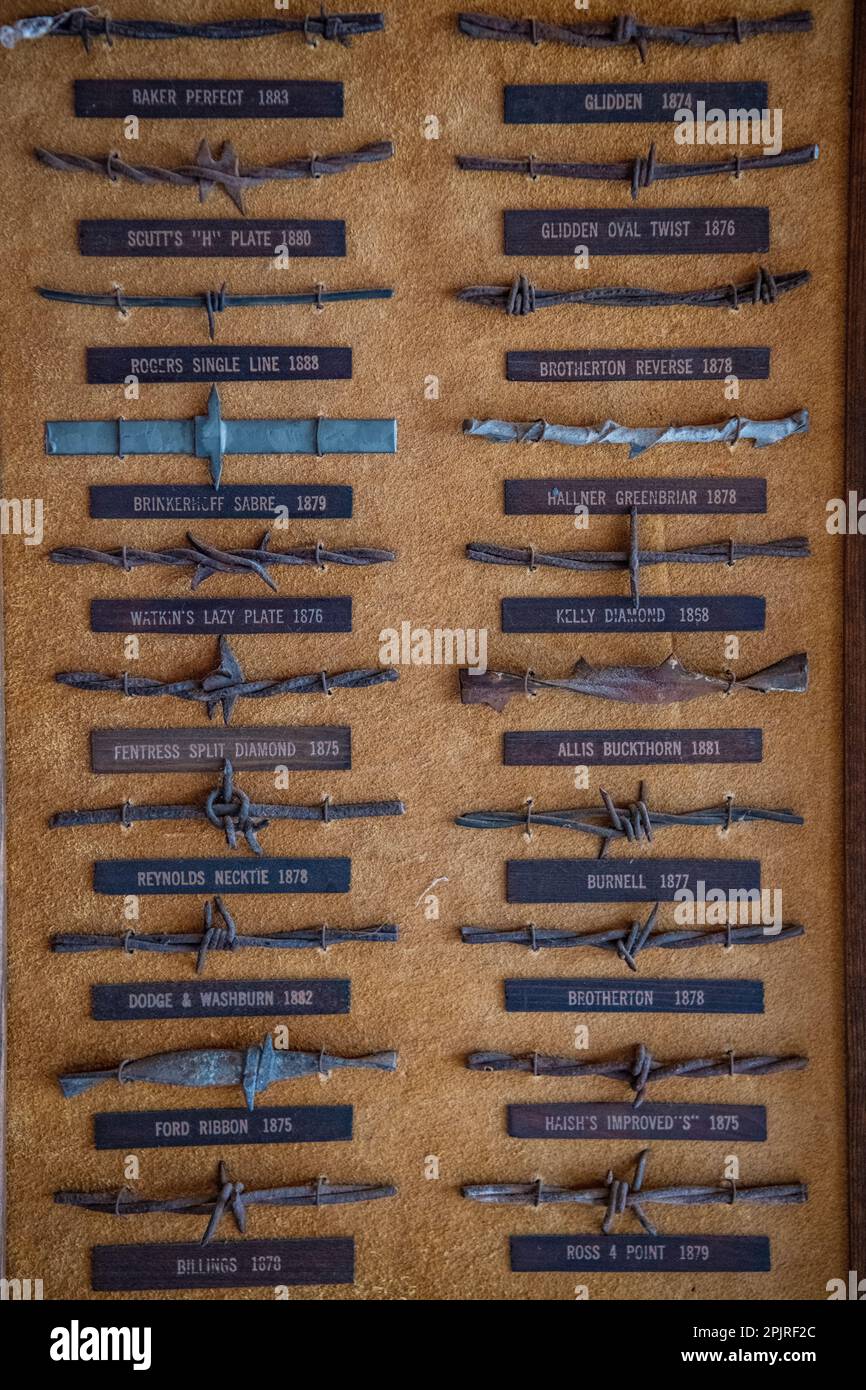 A mounted display of different antique barbed wire fencing varieties that were used in the American West and California in the 1800s. Stock Photohttps://www.alamy.com/image-license-details/?v=1https://www.alamy.com/a-mounted-display-of-different-antique-barbed-wire-fencing-varieties-that-were-used-in-the-american-west-and-california-in-the-1800s-image545101940.html
A mounted display of different antique barbed wire fencing varieties that were used in the American West and California in the 1800s. Stock Photohttps://www.alamy.com/image-license-details/?v=1https://www.alamy.com/a-mounted-display-of-different-antique-barbed-wire-fencing-varieties-that-were-used-in-the-american-west-and-california-in-the-1800s-image545101940.htmlRM2PJRF2C–A mounted display of different antique barbed wire fencing varieties that were used in the American West and California in the 1800s.
 tinted perspex and wood gazebo in landscaped garden Stock Photohttps://www.alamy.com/image-license-details/?v=1https://www.alamy.com/stock-photo-tinted-perspex-and-wood-gazebo-in-landscaped-garden-19499900.html
tinted perspex and wood gazebo in landscaped garden Stock Photohttps://www.alamy.com/image-license-details/?v=1https://www.alamy.com/stock-photo-tinted-perspex-and-wood-gazebo-in-landscaped-garden-19499900.htmlRMB3M890–tinted perspex and wood gazebo in landscaped garden
 Rapier Italian ca. 1620 The rapier was the principal civilian sidearm throughout the sixteenth and seventeenth centuries. Designed for cut-and-thrust fencing of progressively complex techniques, the rapier is characterized by a double-edged blade with an acute point and an elaborate guard for the hand. The guards, usually of iron or steel, were subject to a variety of embellishment. They were engraved, chiseled, gilded, damascened, and encrusted in gold and silver in keeping with fashionable styles. Unless otherwise noted, the materials, attributions, and dating given here refer to the hilts. Stock Photohttps://www.alamy.com/image-license-details/?v=1https://www.alamy.com/rapier-italian-ca-1620-the-rapier-was-the-principal-civilian-sidearm-throughout-the-sixteenth-and-seventeenth-centuries-designed-for-cut-and-thrust-fencing-of-progressively-complex-techniques-the-rapier-is-characterized-by-a-double-edged-blade-with-an-acute-point-and-an-elaborate-guard-for-the-hand-the-guards-usually-of-iron-or-steel-were-subject-to-a-variety-of-embellishment-they-were-engraved-chiseled-gilded-damascened-and-encrusted-in-gold-and-silver-in-keeping-with-fashionable-styles-unless-otherwise-noted-the-materials-attributions-and-dating-given-here-refer-to-the-hilts-image569499453.html
Rapier Italian ca. 1620 The rapier was the principal civilian sidearm throughout the sixteenth and seventeenth centuries. Designed for cut-and-thrust fencing of progressively complex techniques, the rapier is characterized by a double-edged blade with an acute point and an elaborate guard for the hand. The guards, usually of iron or steel, were subject to a variety of embellishment. They were engraved, chiseled, gilded, damascened, and encrusted in gold and silver in keeping with fashionable styles. Unless otherwise noted, the materials, attributions, and dating given here refer to the hilts. Stock Photohttps://www.alamy.com/image-license-details/?v=1https://www.alamy.com/rapier-italian-ca-1620-the-rapier-was-the-principal-civilian-sidearm-throughout-the-sixteenth-and-seventeenth-centuries-designed-for-cut-and-thrust-fencing-of-progressively-complex-techniques-the-rapier-is-characterized-by-a-double-edged-blade-with-an-acute-point-and-an-elaborate-guard-for-the-hand-the-guards-usually-of-iron-or-steel-were-subject-to-a-variety-of-embellishment-they-were-engraved-chiseled-gilded-damascened-and-encrusted-in-gold-and-silver-in-keeping-with-fashionable-styles-unless-otherwise-noted-the-materials-attributions-and-dating-given-here-refer-to-the-hilts-image569499453.htmlRM2T2EXA5–Rapier Italian ca. 1620 The rapier was the principal civilian sidearm throughout the sixteenth and seventeenth centuries. Designed for cut-and-thrust fencing of progressively complex techniques, the rapier is characterized by a double-edged blade with an acute point and an elaborate guard for the hand. The guards, usually of iron or steel, were subject to a variety of embellishment. They were engraved, chiseled, gilded, damascened, and encrusted in gold and silver in keeping with fashionable styles. Unless otherwise noted, the materials, attributions, and dating given here refer to the hilts.
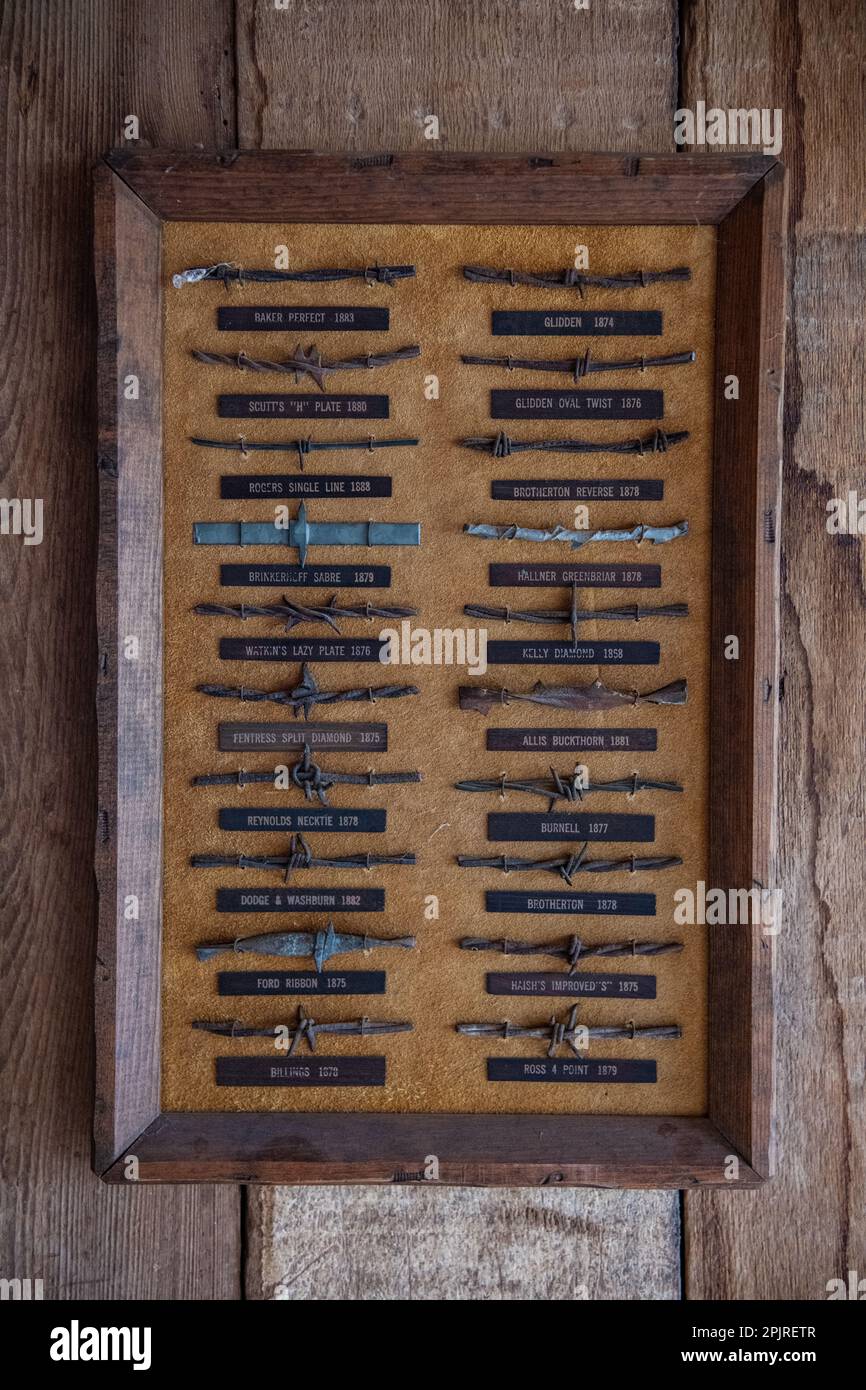 A mounted display of different antique barbed wire fencing varieties that were used in the American West and California in the 1800s. Stock Photohttps://www.alamy.com/image-license-details/?v=1https://www.alamy.com/a-mounted-display-of-different-antique-barbed-wire-fencing-varieties-that-were-used-in-the-american-west-and-california-in-the-1800s-image545101783.html
A mounted display of different antique barbed wire fencing varieties that were used in the American West and California in the 1800s. Stock Photohttps://www.alamy.com/image-license-details/?v=1https://www.alamy.com/a-mounted-display-of-different-antique-barbed-wire-fencing-varieties-that-were-used-in-the-american-west-and-california-in-the-1800s-image545101783.htmlRM2PJRETR–A mounted display of different antique barbed wire fencing varieties that were used in the American West and California in the 1800s.
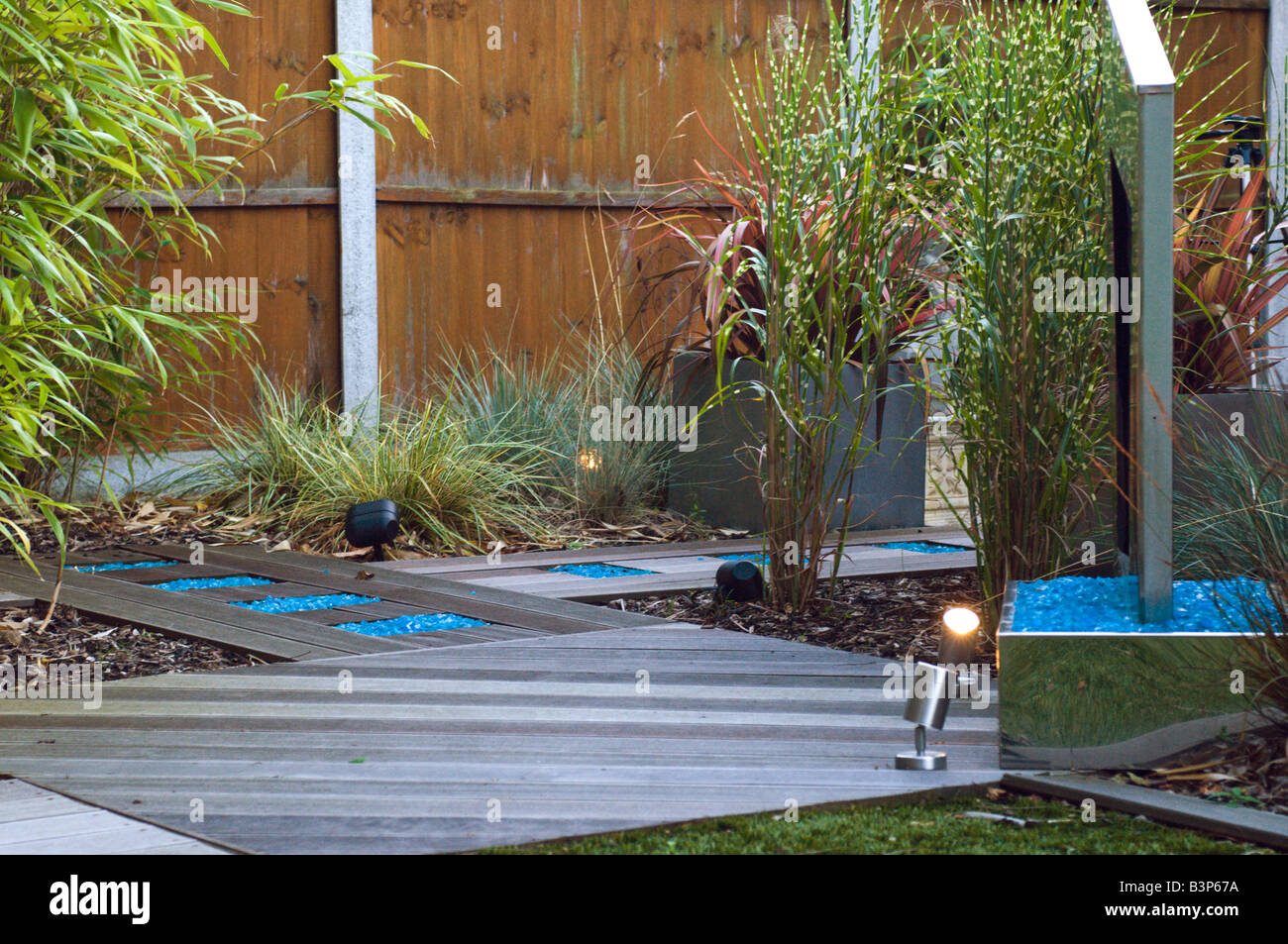 modern landscaped garden with water feature and astro-turf lawn and decking Stock Photohttps://www.alamy.com/image-license-details/?v=1https://www.alamy.com/stock-photo-modern-landscaped-garden-with-water-feature-and-astro-turf-lawn-and-19542190.html
modern landscaped garden with water feature and astro-turf lawn and decking Stock Photohttps://www.alamy.com/image-license-details/?v=1https://www.alamy.com/stock-photo-modern-landscaped-garden-with-water-feature-and-astro-turf-lawn-and-19542190.htmlRMB3P67A–modern landscaped garden with water feature and astro-turf lawn and decking
 Rapier Italian ca. 1580 The rapier was the principal civilian sidearm throughout the sixteenth and seventeenth centuries. Designed for cut-and-thrust fencing of progressively complex techniques, the rapier is characterized by a double-edged blade with an acute point and an elaborate guard for the hand. The guards, usually of iron or steel, were subject to a variety of embellishment. They were engraved, chiseled, gilded, damascened, and encrusted in gold and silver in keeping with fashionable styles. Unless otherwise noted, the materials, attributions, and dating given here refer to the hilts. Stock Photohttps://www.alamy.com/image-license-details/?v=1https://www.alamy.com/rapier-italian-ca-1580-the-rapier-was-the-principal-civilian-sidearm-throughout-the-sixteenth-and-seventeenth-centuries-designed-for-cut-and-thrust-fencing-of-progressively-complex-techniques-the-rapier-is-characterized-by-a-double-edged-blade-with-an-acute-point-and-an-elaborate-guard-for-the-hand-the-guards-usually-of-iron-or-steel-were-subject-to-a-variety-of-embellishment-they-were-engraved-chiseled-gilded-damascened-and-encrusted-in-gold-and-silver-in-keeping-with-fashionable-styles-unless-otherwise-noted-the-materials-attributions-and-dating-given-here-refer-to-the-hilts-image569499450.html
Rapier Italian ca. 1580 The rapier was the principal civilian sidearm throughout the sixteenth and seventeenth centuries. Designed for cut-and-thrust fencing of progressively complex techniques, the rapier is characterized by a double-edged blade with an acute point and an elaborate guard for the hand. The guards, usually of iron or steel, were subject to a variety of embellishment. They were engraved, chiseled, gilded, damascened, and encrusted in gold and silver in keeping with fashionable styles. Unless otherwise noted, the materials, attributions, and dating given here refer to the hilts. Stock Photohttps://www.alamy.com/image-license-details/?v=1https://www.alamy.com/rapier-italian-ca-1580-the-rapier-was-the-principal-civilian-sidearm-throughout-the-sixteenth-and-seventeenth-centuries-designed-for-cut-and-thrust-fencing-of-progressively-complex-techniques-the-rapier-is-characterized-by-a-double-edged-blade-with-an-acute-point-and-an-elaborate-guard-for-the-hand-the-guards-usually-of-iron-or-steel-were-subject-to-a-variety-of-embellishment-they-were-engraved-chiseled-gilded-damascened-and-encrusted-in-gold-and-silver-in-keeping-with-fashionable-styles-unless-otherwise-noted-the-materials-attributions-and-dating-given-here-refer-to-the-hilts-image569499450.htmlRM2T2EXA2–Rapier Italian ca. 1580 The rapier was the principal civilian sidearm throughout the sixteenth and seventeenth centuries. Designed for cut-and-thrust fencing of progressively complex techniques, the rapier is characterized by a double-edged blade with an acute point and an elaborate guard for the hand. The guards, usually of iron or steel, were subject to a variety of embellishment. They were engraved, chiseled, gilded, damascened, and encrusted in gold and silver in keeping with fashionable styles. Unless otherwise noted, the materials, attributions, and dating given here refer to the hilts.
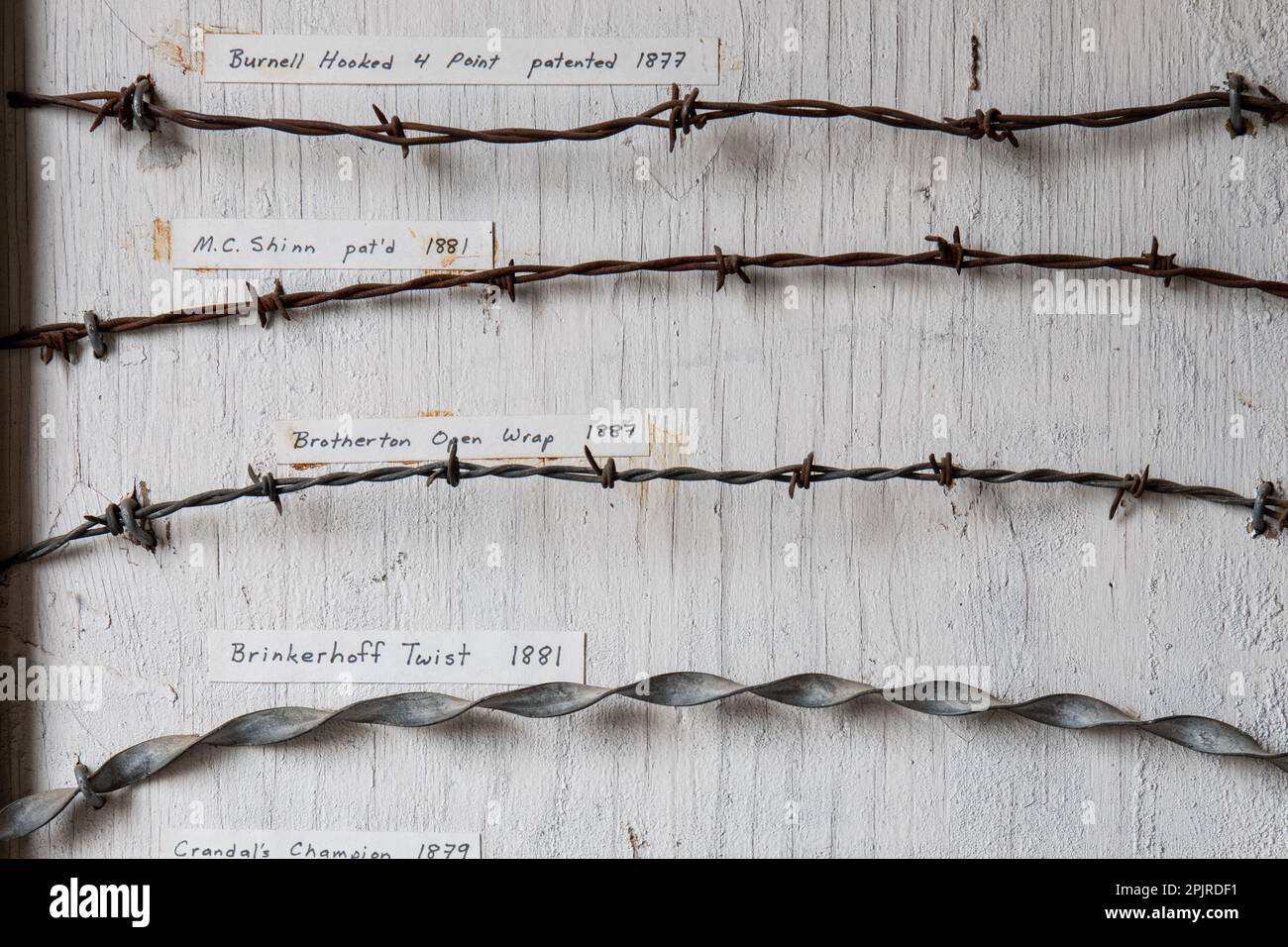 A mounted display of different antique barbed wire fencing varieties that were used in the American West and California in the 1800s. Stock Photohttps://www.alamy.com/image-license-details/?v=1https://www.alamy.com/a-mounted-display-of-different-antique-barbed-wire-fencing-varieties-that-were-used-in-the-american-west-and-california-in-the-1800s-image545100725.html
A mounted display of different antique barbed wire fencing varieties that were used in the American West and California in the 1800s. Stock Photohttps://www.alamy.com/image-license-details/?v=1https://www.alamy.com/a-mounted-display-of-different-antique-barbed-wire-fencing-varieties-that-were-used-in-the-american-west-and-california-in-the-1800s-image545100725.htmlRM2PJRDF1–A mounted display of different antique barbed wire fencing varieties that were used in the American West and California in the 1800s.
 outdoor dining set under gazebo in modern landscaped garden Stock Photohttps://www.alamy.com/image-license-details/?v=1https://www.alamy.com/stock-photo-outdoor-dining-set-under-gazebo-in-modern-landscaped-garden-19542151.html
outdoor dining set under gazebo in modern landscaped garden Stock Photohttps://www.alamy.com/image-license-details/?v=1https://www.alamy.com/stock-photo-outdoor-dining-set-under-gazebo-in-modern-landscaped-garden-19542151.htmlRMB3P65Y–outdoor dining set under gazebo in modern landscaped garden
 Rapier blade, Spanish ca. 1600 The rapier was the principal civilian sidearm throughout the sixteenth and seventeenth centuries. Designed for cut-and-thrust fencing of progressively complex techniques, the rapier is characterized by a double-edged blade with an acute point and an elaborate guard for the hand. The guards, usually of iron or steel, were subject to a variety of embellishment. They were engraved, chiseled, gilded, damascened, and encrusted in gold and silver in keeping with fashionable styles. Unless otherwise noted, the materials, attributions, and dating given here refer to the Stock Photohttps://www.alamy.com/image-license-details/?v=1https://www.alamy.com/rapier-blade-spanish-ca-1600-the-rapier-was-the-principal-civilian-sidearm-throughout-the-sixteenth-and-seventeenth-centuries-designed-for-cut-and-thrust-fencing-of-progressively-complex-techniques-the-rapier-is-characterized-by-a-double-edged-blade-with-an-acute-point-and-an-elaborate-guard-for-the-hand-the-guards-usually-of-iron-or-steel-were-subject-to-a-variety-of-embellishment-they-were-engraved-chiseled-gilded-damascened-and-encrusted-in-gold-and-silver-in-keeping-with-fashionable-styles-unless-otherwise-noted-the-materials-attributions-and-dating-given-here-refer-to-the-image569498548.html
Rapier blade, Spanish ca. 1600 The rapier was the principal civilian sidearm throughout the sixteenth and seventeenth centuries. Designed for cut-and-thrust fencing of progressively complex techniques, the rapier is characterized by a double-edged blade with an acute point and an elaborate guard for the hand. The guards, usually of iron or steel, were subject to a variety of embellishment. They were engraved, chiseled, gilded, damascened, and encrusted in gold and silver in keeping with fashionable styles. Unless otherwise noted, the materials, attributions, and dating given here refer to the Stock Photohttps://www.alamy.com/image-license-details/?v=1https://www.alamy.com/rapier-blade-spanish-ca-1600-the-rapier-was-the-principal-civilian-sidearm-throughout-the-sixteenth-and-seventeenth-centuries-designed-for-cut-and-thrust-fencing-of-progressively-complex-techniques-the-rapier-is-characterized-by-a-double-edged-blade-with-an-acute-point-and-an-elaborate-guard-for-the-hand-the-guards-usually-of-iron-or-steel-were-subject-to-a-variety-of-embellishment-they-were-engraved-chiseled-gilded-damascened-and-encrusted-in-gold-and-silver-in-keeping-with-fashionable-styles-unless-otherwise-noted-the-materials-attributions-and-dating-given-here-refer-to-the-image569498548.htmlRM2T2EW5T–Rapier blade, Spanish ca. 1600 The rapier was the principal civilian sidearm throughout the sixteenth and seventeenth centuries. Designed for cut-and-thrust fencing of progressively complex techniques, the rapier is characterized by a double-edged blade with an acute point and an elaborate guard for the hand. The guards, usually of iron or steel, were subject to a variety of embellishment. They were engraved, chiseled, gilded, damascened, and encrusted in gold and silver in keeping with fashionable styles. Unless otherwise noted, the materials, attributions, and dating given here refer to the
 A mounted display of different antique barbed wire fencing varieties that were used in the American West and California in the 1800s. Stock Photohttps://www.alamy.com/image-license-details/?v=1https://www.alamy.com/a-mounted-display-of-different-antique-barbed-wire-fencing-varieties-that-were-used-in-the-american-west-and-california-in-the-1800s-image545101367.html
A mounted display of different antique barbed wire fencing varieties that were used in the American West and California in the 1800s. Stock Photohttps://www.alamy.com/image-license-details/?v=1https://www.alamy.com/a-mounted-display-of-different-antique-barbed-wire-fencing-varieties-that-were-used-in-the-american-west-and-california-in-the-1800s-image545101367.htmlRM2PJRE9Y–A mounted display of different antique barbed wire fencing varieties that were used in the American West and California in the 1800s.
 outdoor dining set in modern landscaped garden Stock Photohttps://www.alamy.com/image-license-details/?v=1https://www.alamy.com/stock-photo-outdoor-dining-set-in-modern-landscaped-garden-19496454.html
outdoor dining set in modern landscaped garden Stock Photohttps://www.alamy.com/image-license-details/?v=1https://www.alamy.com/stock-photo-outdoor-dining-set-in-modern-landscaped-garden-19496454.htmlRMB3M3WX–outdoor dining set in modern landscaped garden
 Rapier German 16th century The rapier was the principal civilian sidearm throughout the sixteenth and seventeenth centuries. Designed for cut-and-thrust fencing of progressively complex techniques, the rapier is characterized by a double-edged blade with an acute point and an elaborate guard for the hand. The guards, usually of iron or steel, were subject to a variety of embellishment. They were engraved, chiseled, gilded, damascened, and encrusted in gold and silver in keeping with fashionable styles. Unless otherwise noted, the materials, attributions, and dating given here refer to the hilt Stock Photohttps://www.alamy.com/image-license-details/?v=1https://www.alamy.com/rapier-german-16th-century-the-rapier-was-the-principal-civilian-sidearm-throughout-the-sixteenth-and-seventeenth-centuries-designed-for-cut-and-thrust-fencing-of-progressively-complex-techniques-the-rapier-is-characterized-by-a-double-edged-blade-with-an-acute-point-and-an-elaborate-guard-for-the-hand-the-guards-usually-of-iron-or-steel-were-subject-to-a-variety-of-embellishment-they-were-engraved-chiseled-gilded-damascened-and-encrusted-in-gold-and-silver-in-keeping-with-fashionable-styles-unless-otherwise-noted-the-materials-attributions-and-dating-given-here-refer-to-the-hilt-image569499189.html
Rapier German 16th century The rapier was the principal civilian sidearm throughout the sixteenth and seventeenth centuries. Designed for cut-and-thrust fencing of progressively complex techniques, the rapier is characterized by a double-edged blade with an acute point and an elaborate guard for the hand. The guards, usually of iron or steel, were subject to a variety of embellishment. They were engraved, chiseled, gilded, damascened, and encrusted in gold and silver in keeping with fashionable styles. Unless otherwise noted, the materials, attributions, and dating given here refer to the hilt Stock Photohttps://www.alamy.com/image-license-details/?v=1https://www.alamy.com/rapier-german-16th-century-the-rapier-was-the-principal-civilian-sidearm-throughout-the-sixteenth-and-seventeenth-centuries-designed-for-cut-and-thrust-fencing-of-progressively-complex-techniques-the-rapier-is-characterized-by-a-double-edged-blade-with-an-acute-point-and-an-elaborate-guard-for-the-hand-the-guards-usually-of-iron-or-steel-were-subject-to-a-variety-of-embellishment-they-were-engraved-chiseled-gilded-damascened-and-encrusted-in-gold-and-silver-in-keeping-with-fashionable-styles-unless-otherwise-noted-the-materials-attributions-and-dating-given-here-refer-to-the-hilt-image569499189.htmlRM2T2EX0N–Rapier German 16th century The rapier was the principal civilian sidearm throughout the sixteenth and seventeenth centuries. Designed for cut-and-thrust fencing of progressively complex techniques, the rapier is characterized by a double-edged blade with an acute point and an elaborate guard for the hand. The guards, usually of iron or steel, were subject to a variety of embellishment. They were engraved, chiseled, gilded, damascened, and encrusted in gold and silver in keeping with fashionable styles. Unless otherwise noted, the materials, attributions, and dating given here refer to the hilt
 Rapier blade, Spanish ca. 1590 The rapier was the principal civilian sidearm throughout the sixteenth and seventeenth centuries. Designed for cut-and-thrust fencing of progressively complex techniques, the rapier is characterized by a double-edged blade with an acute point and an elaborate guard for the hand. The guards, usually of iron or steel, were subject to a variety of embellishment. They were engraved, chiseled, gilded, damascened, and encrusted in gold and silver in keeping with fashionable styles. Unless otherwise noted, the materials, attributions, and dating given here refer to the Stock Photohttps://www.alamy.com/image-license-details/?v=1https://www.alamy.com/rapier-blade-spanish-ca-1590-the-rapier-was-the-principal-civilian-sidearm-throughout-the-sixteenth-and-seventeenth-centuries-designed-for-cut-and-thrust-fencing-of-progressively-complex-techniques-the-rapier-is-characterized-by-a-double-edged-blade-with-an-acute-point-and-an-elaborate-guard-for-the-hand-the-guards-usually-of-iron-or-steel-were-subject-to-a-variety-of-embellishment-they-were-engraved-chiseled-gilded-damascened-and-encrusted-in-gold-and-silver-in-keeping-with-fashionable-styles-unless-otherwise-noted-the-materials-attributions-and-dating-given-here-refer-to-the-image569500046.html
Rapier blade, Spanish ca. 1590 The rapier was the principal civilian sidearm throughout the sixteenth and seventeenth centuries. Designed for cut-and-thrust fencing of progressively complex techniques, the rapier is characterized by a double-edged blade with an acute point and an elaborate guard for the hand. The guards, usually of iron or steel, were subject to a variety of embellishment. They were engraved, chiseled, gilded, damascened, and encrusted in gold and silver in keeping with fashionable styles. Unless otherwise noted, the materials, attributions, and dating given here refer to the Stock Photohttps://www.alamy.com/image-license-details/?v=1https://www.alamy.com/rapier-blade-spanish-ca-1590-the-rapier-was-the-principal-civilian-sidearm-throughout-the-sixteenth-and-seventeenth-centuries-designed-for-cut-and-thrust-fencing-of-progressively-complex-techniques-the-rapier-is-characterized-by-a-double-edged-blade-with-an-acute-point-and-an-elaborate-guard-for-the-hand-the-guards-usually-of-iron-or-steel-were-subject-to-a-variety-of-embellishment-they-were-engraved-chiseled-gilded-damascened-and-encrusted-in-gold-and-silver-in-keeping-with-fashionable-styles-unless-otherwise-noted-the-materials-attributions-and-dating-given-here-refer-to-the-image569500046.htmlRM2T2EY3A–Rapier blade, Spanish ca. 1590 The rapier was the principal civilian sidearm throughout the sixteenth and seventeenth centuries. Designed for cut-and-thrust fencing of progressively complex techniques, the rapier is characterized by a double-edged blade with an acute point and an elaborate guard for the hand. The guards, usually of iron or steel, were subject to a variety of embellishment. They were engraved, chiseled, gilded, damascened, and encrusted in gold and silver in keeping with fashionable styles. Unless otherwise noted, the materials, attributions, and dating given here refer to the
 A mounted display of different antique barbed wire fencing varieties that were used in the American West and California in the 1800s. Stock Photohttps://www.alamy.com/image-license-details/?v=1https://www.alamy.com/a-mounted-display-of-different-antique-barbed-wire-fencing-varieties-that-were-used-in-the-american-west-and-california-in-the-1800s-image545101640.html
A mounted display of different antique barbed wire fencing varieties that were used in the American West and California in the 1800s. Stock Photohttps://www.alamy.com/image-license-details/?v=1https://www.alamy.com/a-mounted-display-of-different-antique-barbed-wire-fencing-varieties-that-were-used-in-the-american-west-and-california-in-the-1800s-image545101640.htmlRM2PJREKM–A mounted display of different antique barbed wire fencing varieties that were used in the American West and California in the 1800s.
 modern landscaped garden with water feature and astro-turf lawn and decking Stock Photohttps://www.alamy.com/image-license-details/?v=1https://www.alamy.com/stock-photo-modern-landscaped-garden-with-water-feature-and-astro-turf-lawn-and-19540229.html
modern landscaped garden with water feature and astro-turf lawn and decking Stock Photohttps://www.alamy.com/image-license-details/?v=1https://www.alamy.com/stock-photo-modern-landscaped-garden-with-water-feature-and-astro-turf-lawn-and-19540229.htmlRMB3P3N9–modern landscaped garden with water feature and astro-turf lawn and decking
 Rapier Italian, Milan ca. 1590 The rapier was the principal civilian sidearm throughout the sixteenth and seventeenth centuries. Designed for cut-and-thrust fencing of progressively complex techniques, the rapier is characterized by a double-edged blade with an acute point and an elaborate guard for the hand. The guards, usually of iron or steel, were subject to a variety of embellishment. They were engraved, chiseled, gilded, damascened, and encrusted in gold and silver in keeping with fashionable styles. Unless otherwise noted, the materials, attributions, and dating given here refer to the Stock Photohttps://www.alamy.com/image-license-details/?v=1https://www.alamy.com/rapier-italian-milan-ca-1590-the-rapier-was-the-principal-civilian-sidearm-throughout-the-sixteenth-and-seventeenth-centuries-designed-for-cut-and-thrust-fencing-of-progressively-complex-techniques-the-rapier-is-characterized-by-a-double-edged-blade-with-an-acute-point-and-an-elaborate-guard-for-the-hand-the-guards-usually-of-iron-or-steel-were-subject-to-a-variety-of-embellishment-they-were-engraved-chiseled-gilded-damascened-and-encrusted-in-gold-and-silver-in-keeping-with-fashionable-styles-unless-otherwise-noted-the-materials-attributions-and-dating-given-here-refer-to-the-image569499193.html
Rapier Italian, Milan ca. 1590 The rapier was the principal civilian sidearm throughout the sixteenth and seventeenth centuries. Designed for cut-and-thrust fencing of progressively complex techniques, the rapier is characterized by a double-edged blade with an acute point and an elaborate guard for the hand. The guards, usually of iron or steel, were subject to a variety of embellishment. They were engraved, chiseled, gilded, damascened, and encrusted in gold and silver in keeping with fashionable styles. Unless otherwise noted, the materials, attributions, and dating given here refer to the Stock Photohttps://www.alamy.com/image-license-details/?v=1https://www.alamy.com/rapier-italian-milan-ca-1590-the-rapier-was-the-principal-civilian-sidearm-throughout-the-sixteenth-and-seventeenth-centuries-designed-for-cut-and-thrust-fencing-of-progressively-complex-techniques-the-rapier-is-characterized-by-a-double-edged-blade-with-an-acute-point-and-an-elaborate-guard-for-the-hand-the-guards-usually-of-iron-or-steel-were-subject-to-a-variety-of-embellishment-they-were-engraved-chiseled-gilded-damascened-and-encrusted-in-gold-and-silver-in-keeping-with-fashionable-styles-unless-otherwise-noted-the-materials-attributions-and-dating-given-here-refer-to-the-image569499193.htmlRM2T2EX0W–Rapier Italian, Milan ca. 1590 The rapier was the principal civilian sidearm throughout the sixteenth and seventeenth centuries. Designed for cut-and-thrust fencing of progressively complex techniques, the rapier is characterized by a double-edged blade with an acute point and an elaborate guard for the hand. The guards, usually of iron or steel, were subject to a variety of embellishment. They were engraved, chiseled, gilded, damascened, and encrusted in gold and silver in keeping with fashionable styles. Unless otherwise noted, the materials, attributions, and dating given here refer to the
 Rapier possibly French 16th century The rapier was the principal civilian sidearm throughout the sixteenth and seventeenth centuries. Designed for cut-and-thrust fencing of progressively complex techniques, the rapier is characterized by a double-edged blade with an acute point and an elaborate guard for the hand. The guards, usually of iron or steel, were subject to a variety of embellishment. They were engraved, chiseled, gilded, damascened, and encrusted in gold and silver in keeping with fashionable styles. Unless otherwise noted, the materials, attributions, and dating given here refer to Stock Photohttps://www.alamy.com/image-license-details/?v=1https://www.alamy.com/rapier-possibly-french-16th-century-the-rapier-was-the-principal-civilian-sidearm-throughout-the-sixteenth-and-seventeenth-centuries-designed-for-cut-and-thrust-fencing-of-progressively-complex-techniques-the-rapier-is-characterized-by-a-double-edged-blade-with-an-acute-point-and-an-elaborate-guard-for-the-hand-the-guards-usually-of-iron-or-steel-were-subject-to-a-variety-of-embellishment-they-were-engraved-chiseled-gilded-damascened-and-encrusted-in-gold-and-silver-in-keeping-with-fashionable-styles-unless-otherwise-noted-the-materials-attributions-and-dating-given-here-refer-to-image569499188.html
Rapier possibly French 16th century The rapier was the principal civilian sidearm throughout the sixteenth and seventeenth centuries. Designed for cut-and-thrust fencing of progressively complex techniques, the rapier is characterized by a double-edged blade with an acute point and an elaborate guard for the hand. The guards, usually of iron or steel, were subject to a variety of embellishment. They were engraved, chiseled, gilded, damascened, and encrusted in gold and silver in keeping with fashionable styles. Unless otherwise noted, the materials, attributions, and dating given here refer to Stock Photohttps://www.alamy.com/image-license-details/?v=1https://www.alamy.com/rapier-possibly-french-16th-century-the-rapier-was-the-principal-civilian-sidearm-throughout-the-sixteenth-and-seventeenth-centuries-designed-for-cut-and-thrust-fencing-of-progressively-complex-techniques-the-rapier-is-characterized-by-a-double-edged-blade-with-an-acute-point-and-an-elaborate-guard-for-the-hand-the-guards-usually-of-iron-or-steel-were-subject-to-a-variety-of-embellishment-they-were-engraved-chiseled-gilded-damascened-and-encrusted-in-gold-and-silver-in-keeping-with-fashionable-styles-unless-otherwise-noted-the-materials-attributions-and-dating-given-here-refer-to-image569499188.htmlRM2T2EX0M–Rapier possibly French 16th century The rapier was the principal civilian sidearm throughout the sixteenth and seventeenth centuries. Designed for cut-and-thrust fencing of progressively complex techniques, the rapier is characterized by a double-edged blade with an acute point and an elaborate guard for the hand. The guards, usually of iron or steel, were subject to a variety of embellishment. They were engraved, chiseled, gilded, damascened, and encrusted in gold and silver in keeping with fashionable styles. Unless otherwise noted, the materials, attributions, and dating given here refer to
 A mounted display of different antique barbed wire fencing varieties that were used in the American West and California in the 1800s. Stock Photohttps://www.alamy.com/image-license-details/?v=1https://www.alamy.com/a-mounted-display-of-different-antique-barbed-wire-fencing-varieties-that-were-used-in-the-american-west-and-california-in-the-1800s-image545100857.html
A mounted display of different antique barbed wire fencing varieties that were used in the American West and California in the 1800s. Stock Photohttps://www.alamy.com/image-license-details/?v=1https://www.alamy.com/a-mounted-display-of-different-antique-barbed-wire-fencing-varieties-that-were-used-in-the-american-west-and-california-in-the-1800s-image545100857.htmlRM2PJRDKN–A mounted display of different antique barbed wire fencing varieties that were used in the American West and California in the 1800s.
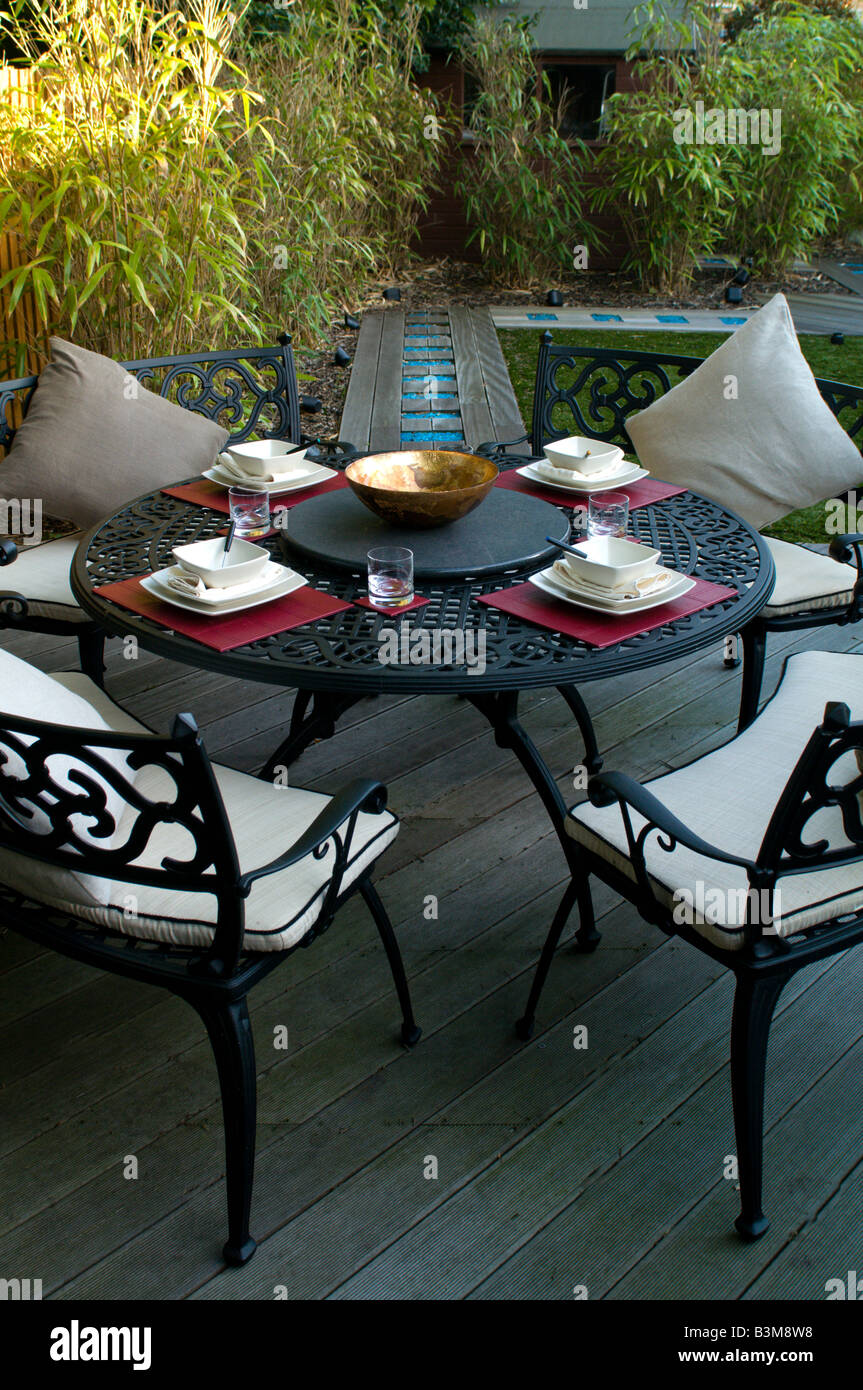 outdoor dining set in modern landscaped garden Stock Photohttps://www.alamy.com/image-license-details/?v=1https://www.alamy.com/stock-photo-outdoor-dining-set-in-modern-landscaped-garden-19500356.html
outdoor dining set in modern landscaped garden Stock Photohttps://www.alamy.com/image-license-details/?v=1https://www.alamy.com/stock-photo-outdoor-dining-set-in-modern-landscaped-garden-19500356.htmlRMB3M8W8–outdoor dining set in modern landscaped garden
 Rapier with Scabbard Italian 17th century The rapier was the principal civilian sidearm throughout the sixteenth and seventeenth centuries. Designed for cut-and-thrust fencing of progressively complex techniques, the rapier is characterized by a double-edged blade with an acute point and an elaborate guard for the hand. The guards, usually of iron or steel, were subject to a variety of embellishment. They were engraved, chiseled, gilded, damascened, and encrusted in gold and silver in keeping with fashionable styles. Unless otherwise noted, the materials, attributions, and dating given here re Stock Photohttps://www.alamy.com/image-license-details/?v=1https://www.alamy.com/rapier-with-scabbard-italian-17th-century-the-rapier-was-the-principal-civilian-sidearm-throughout-the-sixteenth-and-seventeenth-centuries-designed-for-cut-and-thrust-fencing-of-progressively-complex-techniques-the-rapier-is-characterized-by-a-double-edged-blade-with-an-acute-point-and-an-elaborate-guard-for-the-hand-the-guards-usually-of-iron-or-steel-were-subject-to-a-variety-of-embellishment-they-were-engraved-chiseled-gilded-damascened-and-encrusted-in-gold-and-silver-in-keeping-with-fashionable-styles-unless-otherwise-noted-the-materials-attributions-and-dating-given-here-re-image569499030.html
Rapier with Scabbard Italian 17th century The rapier was the principal civilian sidearm throughout the sixteenth and seventeenth centuries. Designed for cut-and-thrust fencing of progressively complex techniques, the rapier is characterized by a double-edged blade with an acute point and an elaborate guard for the hand. The guards, usually of iron or steel, were subject to a variety of embellishment. They were engraved, chiseled, gilded, damascened, and encrusted in gold and silver in keeping with fashionable styles. Unless otherwise noted, the materials, attributions, and dating given here re Stock Photohttps://www.alamy.com/image-license-details/?v=1https://www.alamy.com/rapier-with-scabbard-italian-17th-century-the-rapier-was-the-principal-civilian-sidearm-throughout-the-sixteenth-and-seventeenth-centuries-designed-for-cut-and-thrust-fencing-of-progressively-complex-techniques-the-rapier-is-characterized-by-a-double-edged-blade-with-an-acute-point-and-an-elaborate-guard-for-the-hand-the-guards-usually-of-iron-or-steel-were-subject-to-a-variety-of-embellishment-they-were-engraved-chiseled-gilded-damascened-and-encrusted-in-gold-and-silver-in-keeping-with-fashionable-styles-unless-otherwise-noted-the-materials-attributions-and-dating-given-here-re-image569499030.htmlRM2T2EWR2–Rapier with Scabbard Italian 17th century The rapier was the principal civilian sidearm throughout the sixteenth and seventeenth centuries. Designed for cut-and-thrust fencing of progressively complex techniques, the rapier is characterized by a double-edged blade with an acute point and an elaborate guard for the hand. The guards, usually of iron or steel, were subject to a variety of embellishment. They were engraved, chiseled, gilded, damascened, and encrusted in gold and silver in keeping with fashionable styles. Unless otherwise noted, the materials, attributions, and dating given here re
 Rapier Spanish blade dated 1662 The rapier was the principal civilian sidearm throughout the sixteenth and seventeenth centuries. Designed for cut-and-thrust fencing of progressively complex techniques, the rapier is characterized by a double-edged blade with an acute point and an elaborate guard for the hand. The guards, usually of iron or steel, were subject to a variety of embellishment. They were engraved, chiseled, gilded, damascened, and encrusted in gold and silver in keeping with fashionable styles. Unless otherwise noted, the materials, attributions, and dating given here refer to the Stock Photohttps://www.alamy.com/image-license-details/?v=1https://www.alamy.com/rapier-spanish-blade-dated-1662-the-rapier-was-the-principal-civilian-sidearm-throughout-the-sixteenth-and-seventeenth-centuries-designed-for-cut-and-thrust-fencing-of-progressively-complex-techniques-the-rapier-is-characterized-by-a-double-edged-blade-with-an-acute-point-and-an-elaborate-guard-for-the-hand-the-guards-usually-of-iron-or-steel-were-subject-to-a-variety-of-embellishment-they-were-engraved-chiseled-gilded-damascened-and-encrusted-in-gold-and-silver-in-keeping-with-fashionable-styles-unless-otherwise-noted-the-materials-attributions-and-dating-given-here-refer-to-the-image569499355.html
Rapier Spanish blade dated 1662 The rapier was the principal civilian sidearm throughout the sixteenth and seventeenth centuries. Designed for cut-and-thrust fencing of progressively complex techniques, the rapier is characterized by a double-edged blade with an acute point and an elaborate guard for the hand. The guards, usually of iron or steel, were subject to a variety of embellishment. They were engraved, chiseled, gilded, damascened, and encrusted in gold and silver in keeping with fashionable styles. Unless otherwise noted, the materials, attributions, and dating given here refer to the Stock Photohttps://www.alamy.com/image-license-details/?v=1https://www.alamy.com/rapier-spanish-blade-dated-1662-the-rapier-was-the-principal-civilian-sidearm-throughout-the-sixteenth-and-seventeenth-centuries-designed-for-cut-and-thrust-fencing-of-progressively-complex-techniques-the-rapier-is-characterized-by-a-double-edged-blade-with-an-acute-point-and-an-elaborate-guard-for-the-hand-the-guards-usually-of-iron-or-steel-were-subject-to-a-variety-of-embellishment-they-were-engraved-chiseled-gilded-damascened-and-encrusted-in-gold-and-silver-in-keeping-with-fashionable-styles-unless-otherwise-noted-the-materials-attributions-and-dating-given-here-refer-to-the-image569499355.htmlRM2T2EX6K–Rapier Spanish blade dated 1662 The rapier was the principal civilian sidearm throughout the sixteenth and seventeenth centuries. Designed for cut-and-thrust fencing of progressively complex techniques, the rapier is characterized by a double-edged blade with an acute point and an elaborate guard for the hand. The guards, usually of iron or steel, were subject to a variety of embellishment. They were engraved, chiseled, gilded, damascened, and encrusted in gold and silver in keeping with fashionable styles. Unless otherwise noted, the materials, attributions, and dating given here refer to the
 outdoor dining set in modern landscaped garden Stock Photohttps://www.alamy.com/image-license-details/?v=1https://www.alamy.com/stock-photo-outdoor-dining-set-in-modern-landscaped-garden-19499776.html
outdoor dining set in modern landscaped garden Stock Photohttps://www.alamy.com/image-license-details/?v=1https://www.alamy.com/stock-photo-outdoor-dining-set-in-modern-landscaped-garden-19499776.htmlRMB3M84G–outdoor dining set in modern landscaped garden
 Rapier Italian ca. 1560 The rapier was the principal civilian sidearm throughout the sixteenth and seventeenth centuries. Designed for cut-and-thrust fencing of progressively complex techniques, the rapier is characterized by a double-edged blade with an acute point and an elaborate guard for the hand. The guards, usually of iron or steel, were subject to a variety of embellishment. They were engraved, chiseled, gilded, damascened, and encrusted in gold and silver in keeping with fashionable styles. Unless otherwise noted, the materials, attributions, and dating given here refer to the hilts. Stock Photohttps://www.alamy.com/image-license-details/?v=1https://www.alamy.com/rapier-italian-ca-1560-the-rapier-was-the-principal-civilian-sidearm-throughout-the-sixteenth-and-seventeenth-centuries-designed-for-cut-and-thrust-fencing-of-progressively-complex-techniques-the-rapier-is-characterized-by-a-double-edged-blade-with-an-acute-point-and-an-elaborate-guard-for-the-hand-the-guards-usually-of-iron-or-steel-were-subject-to-a-variety-of-embellishment-they-were-engraved-chiseled-gilded-damascened-and-encrusted-in-gold-and-silver-in-keeping-with-fashionable-styles-unless-otherwise-noted-the-materials-attributions-and-dating-given-here-refer-to-the-hilts-image569500690.html
Rapier Italian ca. 1560 The rapier was the principal civilian sidearm throughout the sixteenth and seventeenth centuries. Designed for cut-and-thrust fencing of progressively complex techniques, the rapier is characterized by a double-edged blade with an acute point and an elaborate guard for the hand. The guards, usually of iron or steel, were subject to a variety of embellishment. They were engraved, chiseled, gilded, damascened, and encrusted in gold and silver in keeping with fashionable styles. Unless otherwise noted, the materials, attributions, and dating given here refer to the hilts. Stock Photohttps://www.alamy.com/image-license-details/?v=1https://www.alamy.com/rapier-italian-ca-1560-the-rapier-was-the-principal-civilian-sidearm-throughout-the-sixteenth-and-seventeenth-centuries-designed-for-cut-and-thrust-fencing-of-progressively-complex-techniques-the-rapier-is-characterized-by-a-double-edged-blade-with-an-acute-point-and-an-elaborate-guard-for-the-hand-the-guards-usually-of-iron-or-steel-were-subject-to-a-variety-of-embellishment-they-were-engraved-chiseled-gilded-damascened-and-encrusted-in-gold-and-silver-in-keeping-with-fashionable-styles-unless-otherwise-noted-the-materials-attributions-and-dating-given-here-refer-to-the-hilts-image569500690.htmlRM2T2EYXA–Rapier Italian ca. 1560 The rapier was the principal civilian sidearm throughout the sixteenth and seventeenth centuries. Designed for cut-and-thrust fencing of progressively complex techniques, the rapier is characterized by a double-edged blade with an acute point and an elaborate guard for the hand. The guards, usually of iron or steel, were subject to a variety of embellishment. They were engraved, chiseled, gilded, damascened, and encrusted in gold and silver in keeping with fashionable styles. Unless otherwise noted, the materials, attributions, and dating given here refer to the hilts.
 outdoor dining set in modern landscaped garden Stock Photohttps://www.alamy.com/image-license-details/?v=1https://www.alamy.com/stock-photo-outdoor-dining-set-in-modern-landscaped-garden-19496955.html
outdoor dining set in modern landscaped garden Stock Photohttps://www.alamy.com/image-license-details/?v=1https://www.alamy.com/stock-photo-outdoor-dining-set-in-modern-landscaped-garden-19496955.htmlRMB3M4FR–outdoor dining set in modern landscaped garden
 Rapier Italian ca. 1700 The rapier was the principal civilian sidearm throughout the sixteenth and seventeenth centuries. Designed for cut-and-thrust fencing of progressively complex techniques, the rapier is characterized by a double-edged blade with an acute point and an elaborate guard for the hand. The guards, usually of iron or steel, were subject to a variety of embellishment. They were engraved, chiseled, gilded, damascened, and encrusted in gold and silver in keeping with fashionable styles. Unless otherwise noted, the materials, attributions, and dating given here refer to the hilts. Stock Photohttps://www.alamy.com/image-license-details/?v=1https://www.alamy.com/rapier-italian-ca-1700-the-rapier-was-the-principal-civilian-sidearm-throughout-the-sixteenth-and-seventeenth-centuries-designed-for-cut-and-thrust-fencing-of-progressively-complex-techniques-the-rapier-is-characterized-by-a-double-edged-blade-with-an-acute-point-and-an-elaborate-guard-for-the-hand-the-guards-usually-of-iron-or-steel-were-subject-to-a-variety-of-embellishment-they-were-engraved-chiseled-gilded-damascened-and-encrusted-in-gold-and-silver-in-keeping-with-fashionable-styles-unless-otherwise-noted-the-materials-attributions-and-dating-given-here-refer-to-the-hilts-image569499962.html
Rapier Italian ca. 1700 The rapier was the principal civilian sidearm throughout the sixteenth and seventeenth centuries. Designed for cut-and-thrust fencing of progressively complex techniques, the rapier is characterized by a double-edged blade with an acute point and an elaborate guard for the hand. The guards, usually of iron or steel, were subject to a variety of embellishment. They were engraved, chiseled, gilded, damascened, and encrusted in gold and silver in keeping with fashionable styles. Unless otherwise noted, the materials, attributions, and dating given here refer to the hilts. Stock Photohttps://www.alamy.com/image-license-details/?v=1https://www.alamy.com/rapier-italian-ca-1700-the-rapier-was-the-principal-civilian-sidearm-throughout-the-sixteenth-and-seventeenth-centuries-designed-for-cut-and-thrust-fencing-of-progressively-complex-techniques-the-rapier-is-characterized-by-a-double-edged-blade-with-an-acute-point-and-an-elaborate-guard-for-the-hand-the-guards-usually-of-iron-or-steel-were-subject-to-a-variety-of-embellishment-they-were-engraved-chiseled-gilded-damascened-and-encrusted-in-gold-and-silver-in-keeping-with-fashionable-styles-unless-otherwise-noted-the-materials-attributions-and-dating-given-here-refer-to-the-hilts-image569499962.htmlRM2T2EY0A–Rapier Italian ca. 1700 The rapier was the principal civilian sidearm throughout the sixteenth and seventeenth centuries. Designed for cut-and-thrust fencing of progressively complex techniques, the rapier is characterized by a double-edged blade with an acute point and an elaborate guard for the hand. The guards, usually of iron or steel, were subject to a variety of embellishment. They were engraved, chiseled, gilded, damascened, and encrusted in gold and silver in keeping with fashionable styles. Unless otherwise noted, the materials, attributions, and dating given here refer to the hilts.
 Rapier German late 16th century The rapier was the principal civilian sidearm throughout the sixteenth and seventeenth centuries. Designed for cut-and-thrust fencing of progressively complex techniques, the rapier is characterized by a double-edged blade with an acute point and an elaborate guard for the hand. The guards, usually of iron or steel, were subject to a variety of embellishment. They were engraved, chiseled, gilded, damascened, and encrusted in gold and silver in keeping with fashionable styles. Unless otherwise noted, the materials, attributions, and dating given here refer to the Stock Photohttps://www.alamy.com/image-license-details/?v=1https://www.alamy.com/rapier-german-late-16th-century-the-rapier-was-the-principal-civilian-sidearm-throughout-the-sixteenth-and-seventeenth-centuries-designed-for-cut-and-thrust-fencing-of-progressively-complex-techniques-the-rapier-is-characterized-by-a-double-edged-blade-with-an-acute-point-and-an-elaborate-guard-for-the-hand-the-guards-usually-of-iron-or-steel-were-subject-to-a-variety-of-embellishment-they-were-engraved-chiseled-gilded-damascened-and-encrusted-in-gold-and-silver-in-keeping-with-fashionable-styles-unless-otherwise-noted-the-materials-attributions-and-dating-given-here-refer-to-the-image569498545.html
Rapier German late 16th century The rapier was the principal civilian sidearm throughout the sixteenth and seventeenth centuries. Designed for cut-and-thrust fencing of progressively complex techniques, the rapier is characterized by a double-edged blade with an acute point and an elaborate guard for the hand. The guards, usually of iron or steel, were subject to a variety of embellishment. They were engraved, chiseled, gilded, damascened, and encrusted in gold and silver in keeping with fashionable styles. Unless otherwise noted, the materials, attributions, and dating given here refer to the Stock Photohttps://www.alamy.com/image-license-details/?v=1https://www.alamy.com/rapier-german-late-16th-century-the-rapier-was-the-principal-civilian-sidearm-throughout-the-sixteenth-and-seventeenth-centuries-designed-for-cut-and-thrust-fencing-of-progressively-complex-techniques-the-rapier-is-characterized-by-a-double-edged-blade-with-an-acute-point-and-an-elaborate-guard-for-the-hand-the-guards-usually-of-iron-or-steel-were-subject-to-a-variety-of-embellishment-they-were-engraved-chiseled-gilded-damascened-and-encrusted-in-gold-and-silver-in-keeping-with-fashionable-styles-unless-otherwise-noted-the-materials-attributions-and-dating-given-here-refer-to-the-image569498545.htmlRM2T2EW5N–Rapier German late 16th century The rapier was the principal civilian sidearm throughout the sixteenth and seventeenth centuries. Designed for cut-and-thrust fencing of progressively complex techniques, the rapier is characterized by a double-edged blade with an acute point and an elaborate guard for the hand. The guards, usually of iron or steel, were subject to a variety of embellishment. They were engraved, chiseled, gilded, damascened, and encrusted in gold and silver in keeping with fashionable styles. Unless otherwise noted, the materials, attributions, and dating given here refer to the
 Rapier Spanish ca. 1650 The rapier was the principal civilian sidearm throughout the sixteenth and seventeenth centuries. Designed for cut-and-thrust fencing of progressively complex techniques, the rapier is characterized by a double-edged blade with an acute point and an elaborate guard for the hand. The guards, usually of iron or steel, were subject to a variety of embellishment. They were engraved, chiseled, gilded, damascened, and encrusted in gold and silver in keeping with fashionable styles. Unless otherwise noted, the materials, attributions, and dating given here refer to the hilts. Stock Photohttps://www.alamy.com/image-license-details/?v=1https://www.alamy.com/rapier-spanish-ca-1650-the-rapier-was-the-principal-civilian-sidearm-throughout-the-sixteenth-and-seventeenth-centuries-designed-for-cut-and-thrust-fencing-of-progressively-complex-techniques-the-rapier-is-characterized-by-a-double-edged-blade-with-an-acute-point-and-an-elaborate-guard-for-the-hand-the-guards-usually-of-iron-or-steel-were-subject-to-a-variety-of-embellishment-they-were-engraved-chiseled-gilded-damascened-and-encrusted-in-gold-and-silver-in-keeping-with-fashionable-styles-unless-otherwise-noted-the-materials-attributions-and-dating-given-here-refer-to-the-hilts-image569498729.html
Rapier Spanish ca. 1650 The rapier was the principal civilian sidearm throughout the sixteenth and seventeenth centuries. Designed for cut-and-thrust fencing of progressively complex techniques, the rapier is characterized by a double-edged blade with an acute point and an elaborate guard for the hand. The guards, usually of iron or steel, were subject to a variety of embellishment. They were engraved, chiseled, gilded, damascened, and encrusted in gold and silver in keeping with fashionable styles. Unless otherwise noted, the materials, attributions, and dating given here refer to the hilts. Stock Photohttps://www.alamy.com/image-license-details/?v=1https://www.alamy.com/rapier-spanish-ca-1650-the-rapier-was-the-principal-civilian-sidearm-throughout-the-sixteenth-and-seventeenth-centuries-designed-for-cut-and-thrust-fencing-of-progressively-complex-techniques-the-rapier-is-characterized-by-a-double-edged-blade-with-an-acute-point-and-an-elaborate-guard-for-the-hand-the-guards-usually-of-iron-or-steel-were-subject-to-a-variety-of-embellishment-they-were-engraved-chiseled-gilded-damascened-and-encrusted-in-gold-and-silver-in-keeping-with-fashionable-styles-unless-otherwise-noted-the-materials-attributions-and-dating-given-here-refer-to-the-hilts-image569498729.htmlRM2T2EWC9–Rapier Spanish ca. 1650 The rapier was the principal civilian sidearm throughout the sixteenth and seventeenth centuries. Designed for cut-and-thrust fencing of progressively complex techniques, the rapier is characterized by a double-edged blade with an acute point and an elaborate guard for the hand. The guards, usually of iron or steel, were subject to a variety of embellishment. They were engraved, chiseled, gilded, damascened, and encrusted in gold and silver in keeping with fashionable styles. Unless otherwise noted, the materials, attributions, and dating given here refer to the hilts.
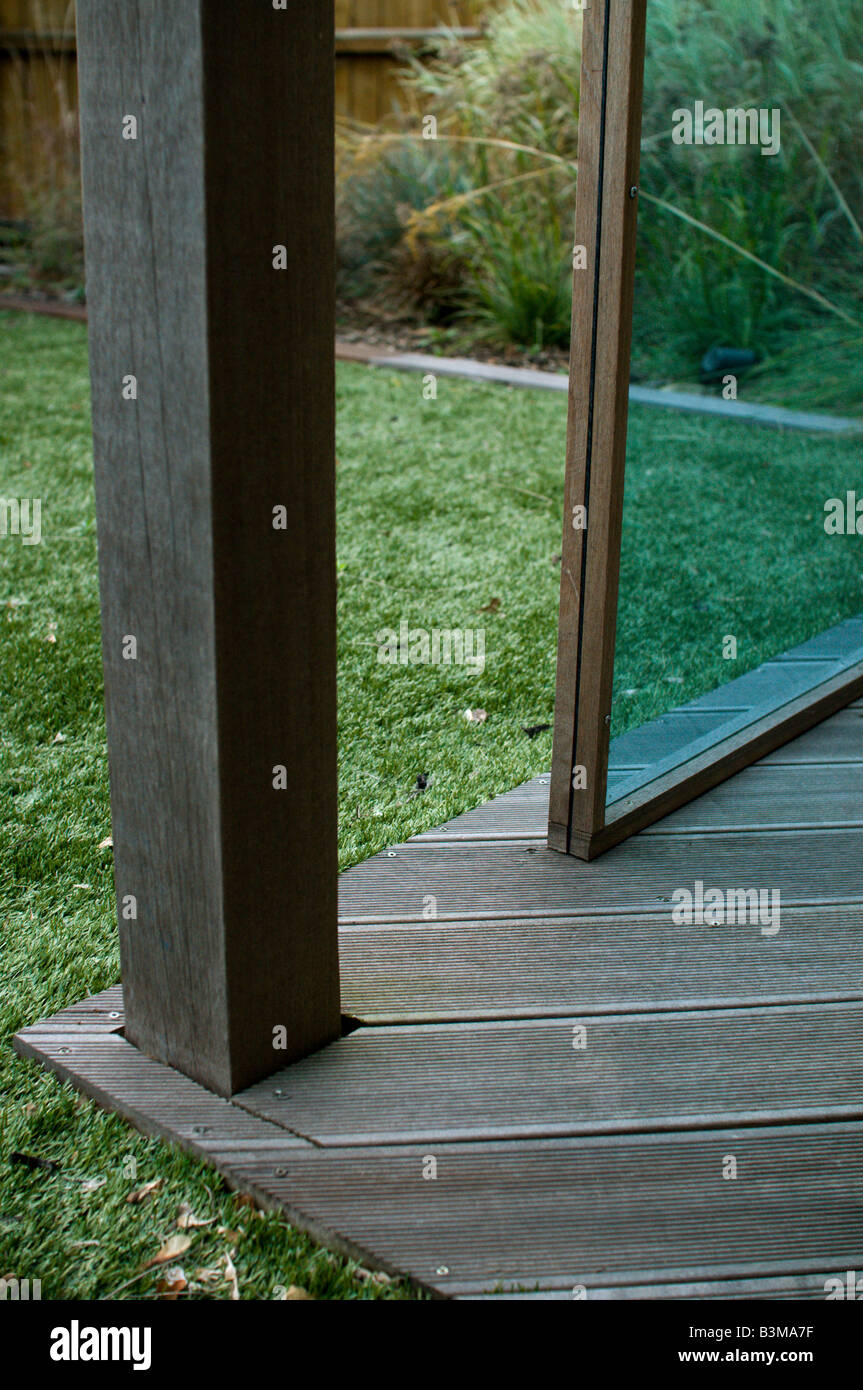 tinted perspex and wood gazebo in landscaped garden with decking and astro turf Stock Photohttps://www.alamy.com/image-license-details/?v=1https://www.alamy.com/stock-photo-tinted-perspex-and-wood-gazebo-in-landscaped-garden-with-decking-and-19501427.html
tinted perspex and wood gazebo in landscaped garden with decking and astro turf Stock Photohttps://www.alamy.com/image-license-details/?v=1https://www.alamy.com/stock-photo-tinted-perspex-and-wood-gazebo-in-landscaped-garden-with-decking-and-19501427.htmlRMB3MA7F–tinted perspex and wood gazebo in landscaped garden with decking and astro turf
 Rapier German late 16th century The rapier was the principal civilian sidearm throughout the sixteenth and seventeenth centuries. Designed for cut-and-thrust fencing of progressively complex techniques, the rapier is characterized by a double-edged blade with an acute point and an elaborate guard for the hand. The guards, usually of iron or steel, were subject to a variety of embellishment. They were engraved, chiseled, gilded, damascened, and encrusted in gold and silver in keeping with fashionable styles. Unless otherwise noted, the materials, attributions, and dating given here refer to the Stock Photohttps://www.alamy.com/image-license-details/?v=1https://www.alamy.com/rapier-german-late-16th-century-the-rapier-was-the-principal-civilian-sidearm-throughout-the-sixteenth-and-seventeenth-centuries-designed-for-cut-and-thrust-fencing-of-progressively-complex-techniques-the-rapier-is-characterized-by-a-double-edged-blade-with-an-acute-point-and-an-elaborate-guard-for-the-hand-the-guards-usually-of-iron-or-steel-were-subject-to-a-variety-of-embellishment-they-were-engraved-chiseled-gilded-damascened-and-encrusted-in-gold-and-silver-in-keeping-with-fashionable-styles-unless-otherwise-noted-the-materials-attributions-and-dating-given-here-refer-to-the-image569498399.html
Rapier German late 16th century The rapier was the principal civilian sidearm throughout the sixteenth and seventeenth centuries. Designed for cut-and-thrust fencing of progressively complex techniques, the rapier is characterized by a double-edged blade with an acute point and an elaborate guard for the hand. The guards, usually of iron or steel, were subject to a variety of embellishment. They were engraved, chiseled, gilded, damascened, and encrusted in gold and silver in keeping with fashionable styles. Unless otherwise noted, the materials, attributions, and dating given here refer to the Stock Photohttps://www.alamy.com/image-license-details/?v=1https://www.alamy.com/rapier-german-late-16th-century-the-rapier-was-the-principal-civilian-sidearm-throughout-the-sixteenth-and-seventeenth-centuries-designed-for-cut-and-thrust-fencing-of-progressively-complex-techniques-the-rapier-is-characterized-by-a-double-edged-blade-with-an-acute-point-and-an-elaborate-guard-for-the-hand-the-guards-usually-of-iron-or-steel-were-subject-to-a-variety-of-embellishment-they-were-engraved-chiseled-gilded-damascened-and-encrusted-in-gold-and-silver-in-keeping-with-fashionable-styles-unless-otherwise-noted-the-materials-attributions-and-dating-given-here-refer-to-the-image569498399.htmlRM2T2EW0F–Rapier German late 16th century The rapier was the principal civilian sidearm throughout the sixteenth and seventeenth centuries. Designed for cut-and-thrust fencing of progressively complex techniques, the rapier is characterized by a double-edged blade with an acute point and an elaborate guard for the hand. The guards, usually of iron or steel, were subject to a variety of embellishment. They were engraved, chiseled, gilded, damascened, and encrusted in gold and silver in keeping with fashionable styles. Unless otherwise noted, the materials, attributions, and dating given here refer to the
 modern landscaped garden with water feature and astro-turf lawn and decking Stock Photohttps://www.alamy.com/image-license-details/?v=1https://www.alamy.com/stock-photo-modern-landscaped-garden-with-water-feature-and-astro-turf-lawn-and-19540715.html
modern landscaped garden with water feature and astro-turf lawn and decking Stock Photohttps://www.alamy.com/image-license-details/?v=1https://www.alamy.com/stock-photo-modern-landscaped-garden-with-water-feature-and-astro-turf-lawn-and-19540715.htmlRMB3P4AK–modern landscaped garden with water feature and astro-turf lawn and decking
 Rapier Spanish 19th century The rapier was the principal civilian sidearm throughout the sixteenth and seventeenth centuries. Designed for cut-and-thrust fencing of progressively complex techniques, the rapier is characterized by a double-edged blade with an acute point and an elaborate guard for the hand. The guards, usually of iron or steel, were subject to a variety of embellishment. They were engraved, chiseled, gilded, damascened, and encrusted in gold and silver in keeping with fashionable styles. Unless otherwise noted, the materials, attributions, and dating given here refer to the hil Stock Photohttps://www.alamy.com/image-license-details/?v=1https://www.alamy.com/rapier-spanish-19th-century-the-rapier-was-the-principal-civilian-sidearm-throughout-the-sixteenth-and-seventeenth-centuries-designed-for-cut-and-thrust-fencing-of-progressively-complex-techniques-the-rapier-is-characterized-by-a-double-edged-blade-with-an-acute-point-and-an-elaborate-guard-for-the-hand-the-guards-usually-of-iron-or-steel-were-subject-to-a-variety-of-embellishment-they-were-engraved-chiseled-gilded-damascened-and-encrusted-in-gold-and-silver-in-keeping-with-fashionable-styles-unless-otherwise-noted-the-materials-attributions-and-dating-given-here-refer-to-the-hil-image569499321.html
Rapier Spanish 19th century The rapier was the principal civilian sidearm throughout the sixteenth and seventeenth centuries. Designed for cut-and-thrust fencing of progressively complex techniques, the rapier is characterized by a double-edged blade with an acute point and an elaborate guard for the hand. The guards, usually of iron or steel, were subject to a variety of embellishment. They were engraved, chiseled, gilded, damascened, and encrusted in gold and silver in keeping with fashionable styles. Unless otherwise noted, the materials, attributions, and dating given here refer to the hil Stock Photohttps://www.alamy.com/image-license-details/?v=1https://www.alamy.com/rapier-spanish-19th-century-the-rapier-was-the-principal-civilian-sidearm-throughout-the-sixteenth-and-seventeenth-centuries-designed-for-cut-and-thrust-fencing-of-progressively-complex-techniques-the-rapier-is-characterized-by-a-double-edged-blade-with-an-acute-point-and-an-elaborate-guard-for-the-hand-the-guards-usually-of-iron-or-steel-were-subject-to-a-variety-of-embellishment-they-were-engraved-chiseled-gilded-damascened-and-encrusted-in-gold-and-silver-in-keeping-with-fashionable-styles-unless-otherwise-noted-the-materials-attributions-and-dating-given-here-refer-to-the-hil-image569499321.htmlRM2T2EX5D–Rapier Spanish 19th century The rapier was the principal civilian sidearm throughout the sixteenth and seventeenth centuries. Designed for cut-and-thrust fencing of progressively complex techniques, the rapier is characterized by a double-edged blade with an acute point and an elaborate guard for the hand. The guards, usually of iron or steel, were subject to a variety of embellishment. They were engraved, chiseled, gilded, damascened, and encrusted in gold and silver in keeping with fashionable styles. Unless otherwise noted, the materials, attributions, and dating given here refer to the hil
 Rapier Blade inscribed by Arnolt Windhvfel German 18th century The rapier was the principal civilian sidearm throughout the sixteenth and seventeenth centuries. Designed for cut-and-thrust fencing of progressively complex techniques, the rapier is characterized by a double-edged blade with an acute point and an elaborate guard for the hand. The guards, usually of iron or steel, were subject to a variety of embellishment. They were engraved, chiseled, gilded, damascened, and encrusted in gold and silver in keeping with fashionable styles. Unless otherwise noted, the materials, attributions, and Stock Photohttps://www.alamy.com/image-license-details/?v=1https://www.alamy.com/rapier-blade-inscribed-by-arnolt-windhvfel-german-18th-century-the-rapier-was-the-principal-civilian-sidearm-throughout-the-sixteenth-and-seventeenth-centuries-designed-for-cut-and-thrust-fencing-of-progressively-complex-techniques-the-rapier-is-characterized-by-a-double-edged-blade-with-an-acute-point-and-an-elaborate-guard-for-the-hand-the-guards-usually-of-iron-or-steel-were-subject-to-a-variety-of-embellishment-they-were-engraved-chiseled-gilded-damascened-and-encrusted-in-gold-and-silver-in-keeping-with-fashionable-styles-unless-otherwise-noted-the-materials-attributions-and-image569498543.html
Rapier Blade inscribed by Arnolt Windhvfel German 18th century The rapier was the principal civilian sidearm throughout the sixteenth and seventeenth centuries. Designed for cut-and-thrust fencing of progressively complex techniques, the rapier is characterized by a double-edged blade with an acute point and an elaborate guard for the hand. The guards, usually of iron or steel, were subject to a variety of embellishment. They were engraved, chiseled, gilded, damascened, and encrusted in gold and silver in keeping with fashionable styles. Unless otherwise noted, the materials, attributions, and Stock Photohttps://www.alamy.com/image-license-details/?v=1https://www.alamy.com/rapier-blade-inscribed-by-arnolt-windhvfel-german-18th-century-the-rapier-was-the-principal-civilian-sidearm-throughout-the-sixteenth-and-seventeenth-centuries-designed-for-cut-and-thrust-fencing-of-progressively-complex-techniques-the-rapier-is-characterized-by-a-double-edged-blade-with-an-acute-point-and-an-elaborate-guard-for-the-hand-the-guards-usually-of-iron-or-steel-were-subject-to-a-variety-of-embellishment-they-were-engraved-chiseled-gilded-damascened-and-encrusted-in-gold-and-silver-in-keeping-with-fashionable-styles-unless-otherwise-noted-the-materials-attributions-and-image569498543.htmlRM2T2EW5K–Rapier Blade inscribed by Arnolt Windhvfel German 18th century The rapier was the principal civilian sidearm throughout the sixteenth and seventeenth centuries. Designed for cut-and-thrust fencing of progressively complex techniques, the rapier is characterized by a double-edged blade with an acute point and an elaborate guard for the hand. The guards, usually of iron or steel, were subject to a variety of embellishment. They were engraved, chiseled, gilded, damascened, and encrusted in gold and silver in keeping with fashionable styles. Unless otherwise noted, the materials, attributions, and
 outdoor dining set in modern landscaped garden Stock Photohttps://www.alamy.com/image-license-details/?v=1https://www.alamy.com/stock-photo-outdoor-dining-set-in-modern-landscaped-garden-19499336.html
outdoor dining set in modern landscaped garden Stock Photohttps://www.alamy.com/image-license-details/?v=1https://www.alamy.com/stock-photo-outdoor-dining-set-in-modern-landscaped-garden-19499336.htmlRMB3M7GT–outdoor dining set in modern landscaped garden
 Rapier with Scabbard Spanish, Toledo 18th century The rapier was the principal civilian sidearm throughout the sixteenth and seventeenth centuries. Designed for cut-and-thrust fencing of progressively complex techniques, the rapier is characterized by a double-edged blade with an acute point and an elaborate guard for the hand. The guards, usually of iron or steel, were subject to a variety of embellishment. They were engraved, chiseled, gilded, damascened, and encrusted in gold and silver in keeping with fashionable styles. Unless otherwise noted, the materials, attributions, and dating given Stock Photohttps://www.alamy.com/image-license-details/?v=1https://www.alamy.com/rapier-with-scabbard-spanish-toledo-18th-century-the-rapier-was-the-principal-civilian-sidearm-throughout-the-sixteenth-and-seventeenth-centuries-designed-for-cut-and-thrust-fencing-of-progressively-complex-techniques-the-rapier-is-characterized-by-a-double-edged-blade-with-an-acute-point-and-an-elaborate-guard-for-the-hand-the-guards-usually-of-iron-or-steel-were-subject-to-a-variety-of-embellishment-they-were-engraved-chiseled-gilded-damascened-and-encrusted-in-gold-and-silver-in-keeping-with-fashionable-styles-unless-otherwise-noted-the-materials-attributions-and-dating-given-image569498114.html
Rapier with Scabbard Spanish, Toledo 18th century The rapier was the principal civilian sidearm throughout the sixteenth and seventeenth centuries. Designed for cut-and-thrust fencing of progressively complex techniques, the rapier is characterized by a double-edged blade with an acute point and an elaborate guard for the hand. The guards, usually of iron or steel, were subject to a variety of embellishment. They were engraved, chiseled, gilded, damascened, and encrusted in gold and silver in keeping with fashionable styles. Unless otherwise noted, the materials, attributions, and dating given Stock Photohttps://www.alamy.com/image-license-details/?v=1https://www.alamy.com/rapier-with-scabbard-spanish-toledo-18th-century-the-rapier-was-the-principal-civilian-sidearm-throughout-the-sixteenth-and-seventeenth-centuries-designed-for-cut-and-thrust-fencing-of-progressively-complex-techniques-the-rapier-is-characterized-by-a-double-edged-blade-with-an-acute-point-and-an-elaborate-guard-for-the-hand-the-guards-usually-of-iron-or-steel-were-subject-to-a-variety-of-embellishment-they-were-engraved-chiseled-gilded-damascened-and-encrusted-in-gold-and-silver-in-keeping-with-fashionable-styles-unless-otherwise-noted-the-materials-attributions-and-dating-given-image569498114.htmlRM2T2ETJA–Rapier with Scabbard Spanish, Toledo 18th century The rapier was the principal civilian sidearm throughout the sixteenth and seventeenth centuries. Designed for cut-and-thrust fencing of progressively complex techniques, the rapier is characterized by a double-edged blade with an acute point and an elaborate guard for the hand. The guards, usually of iron or steel, were subject to a variety of embellishment. They were engraved, chiseled, gilded, damascened, and encrusted in gold and silver in keeping with fashionable styles. Unless otherwise noted, the materials, attributions, and dating given
 Rapier Italian ca. 1600 The rapier was the principal civilian sidearm throughout the sixteenth and seventeenth centuries. Designed for cut-and-thrust fencing of progressively complex techniques, the rapier is characterized by a double-edged blade with an acute point and an elaborate guard for the hand. The guards, usually of iron or steel, were subject to a variety of embellishment. They were engraved, chiseled, gilded, damascened, and encrusted in gold and silver in keeping with fashionable styles. Unless otherwise noted, the materials, attributions, and dating given here refer to the hilts. Stock Photohttps://www.alamy.com/image-license-details/?v=1https://www.alamy.com/rapier-italian-ca-1600-the-rapier-was-the-principal-civilian-sidearm-throughout-the-sixteenth-and-seventeenth-centuries-designed-for-cut-and-thrust-fencing-of-progressively-complex-techniques-the-rapier-is-characterized-by-a-double-edged-blade-with-an-acute-point-and-an-elaborate-guard-for-the-hand-the-guards-usually-of-iron-or-steel-were-subject-to-a-variety-of-embellishment-they-were-engraved-chiseled-gilded-damascened-and-encrusted-in-gold-and-silver-in-keeping-with-fashionable-styles-unless-otherwise-noted-the-materials-attributions-and-dating-given-here-refer-to-the-hilts-image569502667.html
Rapier Italian ca. 1600 The rapier was the principal civilian sidearm throughout the sixteenth and seventeenth centuries. Designed for cut-and-thrust fencing of progressively complex techniques, the rapier is characterized by a double-edged blade with an acute point and an elaborate guard for the hand. The guards, usually of iron or steel, were subject to a variety of embellishment. They were engraved, chiseled, gilded, damascened, and encrusted in gold and silver in keeping with fashionable styles. Unless otherwise noted, the materials, attributions, and dating given here refer to the hilts. Stock Photohttps://www.alamy.com/image-license-details/?v=1https://www.alamy.com/rapier-italian-ca-1600-the-rapier-was-the-principal-civilian-sidearm-throughout-the-sixteenth-and-seventeenth-centuries-designed-for-cut-and-thrust-fencing-of-progressively-complex-techniques-the-rapier-is-characterized-by-a-double-edged-blade-with-an-acute-point-and-an-elaborate-guard-for-the-hand-the-guards-usually-of-iron-or-steel-were-subject-to-a-variety-of-embellishment-they-were-engraved-chiseled-gilded-damascened-and-encrusted-in-gold-and-silver-in-keeping-with-fashionable-styles-unless-otherwise-noted-the-materials-attributions-and-dating-given-here-refer-to-the-hilts-image569502667.htmlRM2T2F2CY–Rapier Italian ca. 1600 The rapier was the principal civilian sidearm throughout the sixteenth and seventeenth centuries. Designed for cut-and-thrust fencing of progressively complex techniques, the rapier is characterized by a double-edged blade with an acute point and an elaborate guard for the hand. The guards, usually of iron or steel, were subject to a variety of embellishment. They were engraved, chiseled, gilded, damascened, and encrusted in gold and silver in keeping with fashionable styles. Unless otherwise noted, the materials, attributions, and dating given here refer to the hilts.
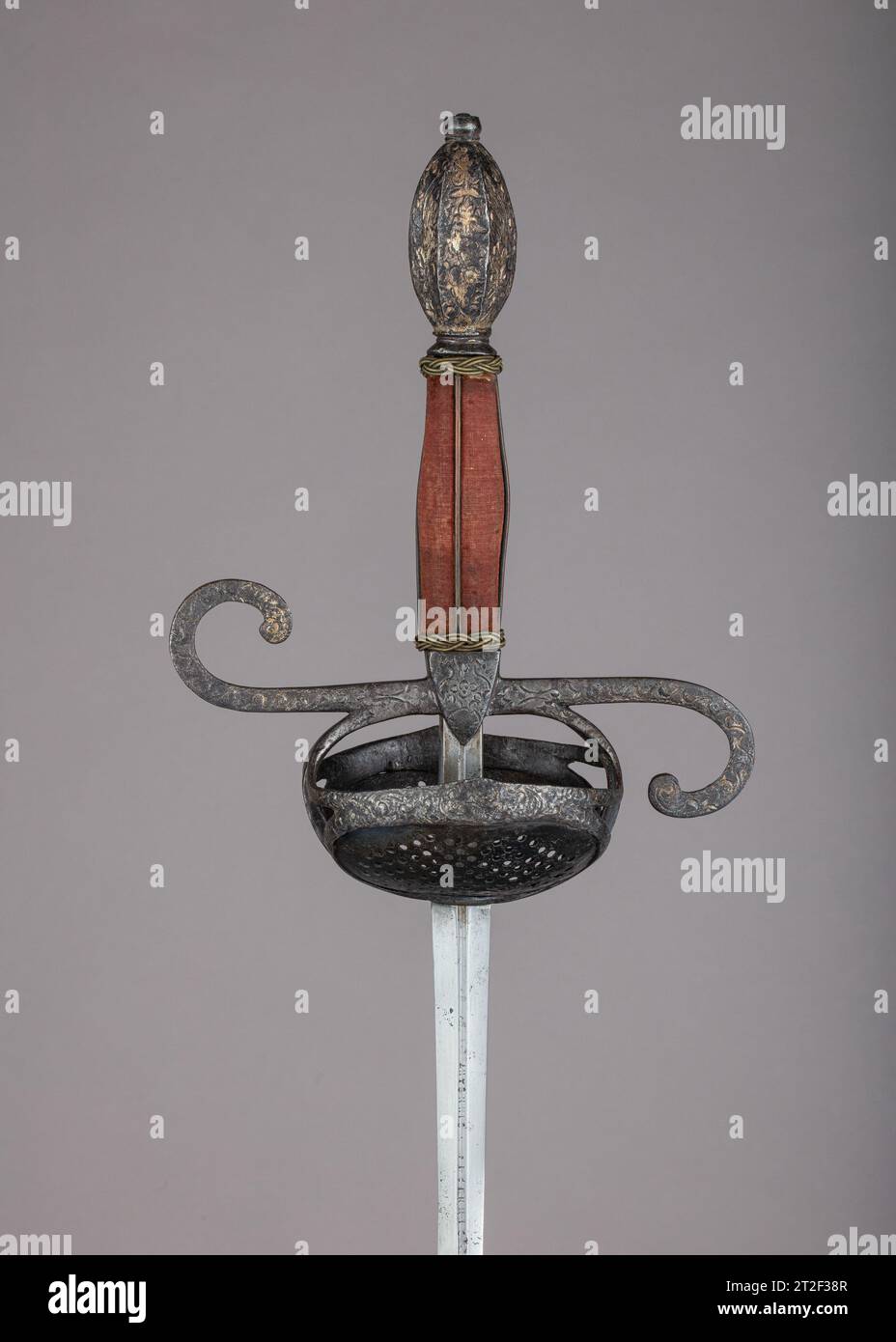 Rapier Spanish 17th century The rapier was the principal civilian sidearm throughout the sixteenth and seventeenth centuries. Designed for cut-and-thrust fencing of progressively complex techniques, the rapier is characterized by a double-edged blade with an acute point and an elaborate guard for the hand. The guards, usually of iron or steel, were subject to a variety of embellishment. They were engraved, chiseled, gilded, damascened, and encrusted in gold and silver in keeping with fashionable styles. Unless otherwise noted, the materials, attributions, and dating given here refer to the hil Stock Photohttps://www.alamy.com/image-license-details/?v=1https://www.alamy.com/rapier-spanish-17th-century-the-rapier-was-the-principal-civilian-sidearm-throughout-the-sixteenth-and-seventeenth-centuries-designed-for-cut-and-thrust-fencing-of-progressively-complex-techniques-the-rapier-is-characterized-by-a-double-edged-blade-with-an-acute-point-and-an-elaborate-guard-for-the-hand-the-guards-usually-of-iron-or-steel-were-subject-to-a-variety-of-embellishment-they-were-engraved-chiseled-gilded-damascened-and-encrusted-in-gold-and-silver-in-keeping-with-fashionable-styles-unless-otherwise-noted-the-materials-attributions-and-dating-given-here-refer-to-the-hil-image569503335.html
Rapier Spanish 17th century The rapier was the principal civilian sidearm throughout the sixteenth and seventeenth centuries. Designed for cut-and-thrust fencing of progressively complex techniques, the rapier is characterized by a double-edged blade with an acute point and an elaborate guard for the hand. The guards, usually of iron or steel, were subject to a variety of embellishment. They were engraved, chiseled, gilded, damascened, and encrusted in gold and silver in keeping with fashionable styles. Unless otherwise noted, the materials, attributions, and dating given here refer to the hil Stock Photohttps://www.alamy.com/image-license-details/?v=1https://www.alamy.com/rapier-spanish-17th-century-the-rapier-was-the-principal-civilian-sidearm-throughout-the-sixteenth-and-seventeenth-centuries-designed-for-cut-and-thrust-fencing-of-progressively-complex-techniques-the-rapier-is-characterized-by-a-double-edged-blade-with-an-acute-point-and-an-elaborate-guard-for-the-hand-the-guards-usually-of-iron-or-steel-were-subject-to-a-variety-of-embellishment-they-were-engraved-chiseled-gilded-damascened-and-encrusted-in-gold-and-silver-in-keeping-with-fashionable-styles-unless-otherwise-noted-the-materials-attributions-and-dating-given-here-refer-to-the-hil-image569503335.htmlRM2T2F38R–Rapier Spanish 17th century The rapier was the principal civilian sidearm throughout the sixteenth and seventeenth centuries. Designed for cut-and-thrust fencing of progressively complex techniques, the rapier is characterized by a double-edged blade with an acute point and an elaborate guard for the hand. The guards, usually of iron or steel, were subject to a variety of embellishment. They were engraved, chiseled, gilded, damascened, and encrusted in gold and silver in keeping with fashionable styles. Unless otherwise noted, the materials, attributions, and dating given here refer to the hil
 decking garden path with blue crushed glass light feature Stock Photohttps://www.alamy.com/image-license-details/?v=1https://www.alamy.com/stock-photo-decking-garden-path-with-blue-crushed-glass-light-feature-19500745.html
decking garden path with blue crushed glass light feature Stock Photohttps://www.alamy.com/image-license-details/?v=1https://www.alamy.com/stock-photo-decking-garden-path-with-blue-crushed-glass-light-feature-19500745.htmlRMB3M9B5–decking garden path with blue crushed glass light feature
 Rapier Italian, Venice 16th century The rapier was the principal civilian sidearm throughout the sixteenth and seventeenth centuries. Designed for cut-and-thrust fencing of progressively complex techniques, the rapier is characterized by a double-edged blade with an acute point and an elaborate guard for the hand. The guards, usually of iron or steel, were subject to a variety of embellishment. They were engraved, chiseled, gilded, damascened, and encrusted in gold and silver in keeping with fashionable styles. Unless otherwise noted, the materials, attributions, and dating given here refer to Stock Photohttps://www.alamy.com/image-license-details/?v=1https://www.alamy.com/rapier-italian-venice-16th-century-the-rapier-was-the-principal-civilian-sidearm-throughout-the-sixteenth-and-seventeenth-centuries-designed-for-cut-and-thrust-fencing-of-progressively-complex-techniques-the-rapier-is-characterized-by-a-double-edged-blade-with-an-acute-point-and-an-elaborate-guard-for-the-hand-the-guards-usually-of-iron-or-steel-were-subject-to-a-variety-of-embellishment-they-were-engraved-chiseled-gilded-damascened-and-encrusted-in-gold-and-silver-in-keeping-with-fashionable-styles-unless-otherwise-noted-the-materials-attributions-and-dating-given-here-refer-to-image569503314.html
Rapier Italian, Venice 16th century The rapier was the principal civilian sidearm throughout the sixteenth and seventeenth centuries. Designed for cut-and-thrust fencing of progressively complex techniques, the rapier is characterized by a double-edged blade with an acute point and an elaborate guard for the hand. The guards, usually of iron or steel, were subject to a variety of embellishment. They were engraved, chiseled, gilded, damascened, and encrusted in gold and silver in keeping with fashionable styles. Unless otherwise noted, the materials, attributions, and dating given here refer to Stock Photohttps://www.alamy.com/image-license-details/?v=1https://www.alamy.com/rapier-italian-venice-16th-century-the-rapier-was-the-principal-civilian-sidearm-throughout-the-sixteenth-and-seventeenth-centuries-designed-for-cut-and-thrust-fencing-of-progressively-complex-techniques-the-rapier-is-characterized-by-a-double-edged-blade-with-an-acute-point-and-an-elaborate-guard-for-the-hand-the-guards-usually-of-iron-or-steel-were-subject-to-a-variety-of-embellishment-they-were-engraved-chiseled-gilded-damascened-and-encrusted-in-gold-and-silver-in-keeping-with-fashionable-styles-unless-otherwise-noted-the-materials-attributions-and-dating-given-here-refer-to-image569503314.htmlRM2T2F382–Rapier Italian, Venice 16th century The rapier was the principal civilian sidearm throughout the sixteenth and seventeenth centuries. Designed for cut-and-thrust fencing of progressively complex techniques, the rapier is characterized by a double-edged blade with an acute point and an elaborate guard for the hand. The guards, usually of iron or steel, were subject to a variety of embellishment. They were engraved, chiseled, gilded, damascened, and encrusted in gold and silver in keeping with fashionable styles. Unless otherwise noted, the materials, attributions, and dating given here refer to
 Rapier ca. 1580 Italian The rapier was the principal civilian sidearm throughout the sixteenth and seventeenth centuries. Designed for cut-and-thrust fencing of progressively complex techniques, the rapier is characterized by a double-edged blade with an acute point and an elaborate guard for the hand. The guards, usually of iron or steel, were subject to a variety of embellishment. They were engraved, chiseled, gilded, damascened, and encrusted in gold and silver in keeping with fashionable styles. Unless otherwise noted, the materials, attributions, and dating given here refer to the hilts. Stock Photohttps://www.alamy.com/image-license-details/?v=1https://www.alamy.com/rapier-ca-1580-italian-the-rapier-was-the-principal-civilian-sidearm-throughout-the-sixteenth-and-seventeenth-centuries-designed-for-cut-and-thrust-fencing-of-progressively-complex-techniques-the-rapier-is-characterized-by-a-double-edged-blade-with-an-acute-point-and-an-elaborate-guard-for-the-hand-the-guards-usually-of-iron-or-steel-were-subject-to-a-variety-of-embellishment-they-were-engraved-chiseled-gilded-damascened-and-encrusted-in-gold-and-silver-in-keeping-with-fashionable-styles-unless-otherwise-noted-the-materials-attributions-and-dating-given-here-refer-to-the-hilts-image458166422.html
Rapier ca. 1580 Italian The rapier was the principal civilian sidearm throughout the sixteenth and seventeenth centuries. Designed for cut-and-thrust fencing of progressively complex techniques, the rapier is characterized by a double-edged blade with an acute point and an elaborate guard for the hand. The guards, usually of iron or steel, were subject to a variety of embellishment. They were engraved, chiseled, gilded, damascened, and encrusted in gold and silver in keeping with fashionable styles. Unless otherwise noted, the materials, attributions, and dating given here refer to the hilts. Stock Photohttps://www.alamy.com/image-license-details/?v=1https://www.alamy.com/rapier-ca-1580-italian-the-rapier-was-the-principal-civilian-sidearm-throughout-the-sixteenth-and-seventeenth-centuries-designed-for-cut-and-thrust-fencing-of-progressively-complex-techniques-the-rapier-is-characterized-by-a-double-edged-blade-with-an-acute-point-and-an-elaborate-guard-for-the-hand-the-guards-usually-of-iron-or-steel-were-subject-to-a-variety-of-embellishment-they-were-engraved-chiseled-gilded-damascened-and-encrusted-in-gold-and-silver-in-keeping-with-fashionable-styles-unless-otherwise-noted-the-materials-attributions-and-dating-given-here-refer-to-the-hilts-image458166422.htmlRM2HHB7XE–Rapier ca. 1580 Italian The rapier was the principal civilian sidearm throughout the sixteenth and seventeenth centuries. Designed for cut-and-thrust fencing of progressively complex techniques, the rapier is characterized by a double-edged blade with an acute point and an elaborate guard for the hand. The guards, usually of iron or steel, were subject to a variety of embellishment. They were engraved, chiseled, gilded, damascened, and encrusted in gold and silver in keeping with fashionable styles. Unless otherwise noted, the materials, attributions, and dating given here refer to the hilts.
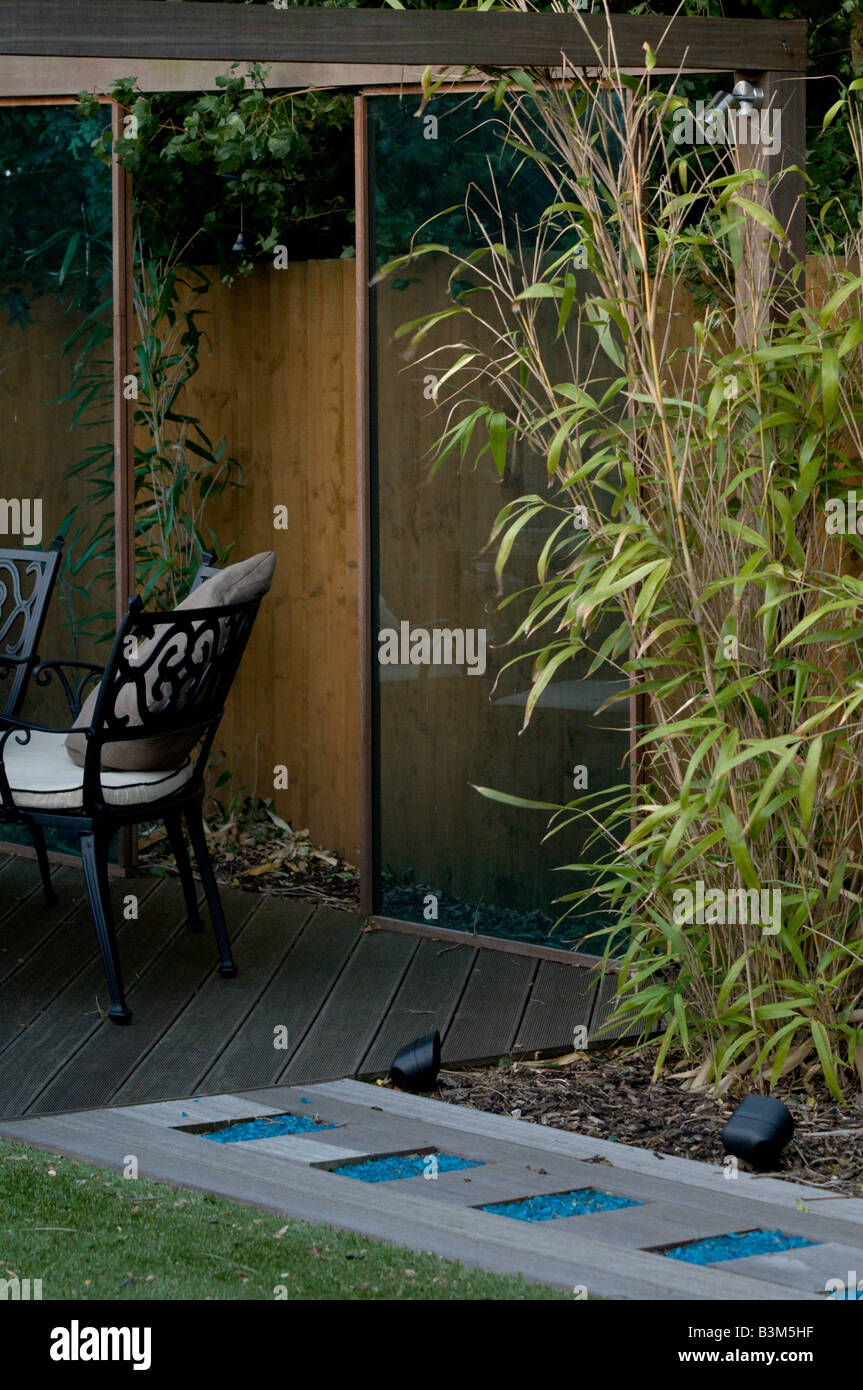 decking path with blue glass lights leads to gazebo with table and chairs Stock Photohttps://www.alamy.com/image-license-details/?v=1https://www.alamy.com/stock-photo-decking-path-with-blue-glass-lights-leads-to-gazebo-with-table-and-19497787.html
decking path with blue glass lights leads to gazebo with table and chairs Stock Photohttps://www.alamy.com/image-license-details/?v=1https://www.alamy.com/stock-photo-decking-path-with-blue-glass-lights-leads-to-gazebo-with-table-and-19497787.htmlRMB3M5HF–decking path with blue glass lights leads to gazebo with table and chairs
 Rapier ca. 1550 Italian The rapier was the principal civilian sidearm throughout the sixteenth and seventeenth centuries. Designed for cut-and-thrust fencing of progressively complex techniques, the rapier is characterized by a double-edged blade with an acute point and an elaborate guard for the hand. The guards, usually of iron or steel, were subject to a variety of embellishment. They were engraved, chiseled, gilded, damascened, and encrusted in gold and silver in keeping with fashionable styles. Unless otherwise noted, the materials, attributions, and dating given here refer to the hilts. Stock Photohttps://www.alamy.com/image-license-details/?v=1https://www.alamy.com/rapier-ca-1550-italian-the-rapier-was-the-principal-civilian-sidearm-throughout-the-sixteenth-and-seventeenth-centuries-designed-for-cut-and-thrust-fencing-of-progressively-complex-techniques-the-rapier-is-characterized-by-a-double-edged-blade-with-an-acute-point-and-an-elaborate-guard-for-the-hand-the-guards-usually-of-iron-or-steel-were-subject-to-a-variety-of-embellishment-they-were-engraved-chiseled-gilded-damascened-and-encrusted-in-gold-and-silver-in-keeping-with-fashionable-styles-unless-otherwise-noted-the-materials-attributions-and-dating-given-here-refer-to-the-hilts-image457996347.html
Rapier ca. 1550 Italian The rapier was the principal civilian sidearm throughout the sixteenth and seventeenth centuries. Designed for cut-and-thrust fencing of progressively complex techniques, the rapier is characterized by a double-edged blade with an acute point and an elaborate guard for the hand. The guards, usually of iron or steel, were subject to a variety of embellishment. They were engraved, chiseled, gilded, damascened, and encrusted in gold and silver in keeping with fashionable styles. Unless otherwise noted, the materials, attributions, and dating given here refer to the hilts. Stock Photohttps://www.alamy.com/image-license-details/?v=1https://www.alamy.com/rapier-ca-1550-italian-the-rapier-was-the-principal-civilian-sidearm-throughout-the-sixteenth-and-seventeenth-centuries-designed-for-cut-and-thrust-fencing-of-progressively-complex-techniques-the-rapier-is-characterized-by-a-double-edged-blade-with-an-acute-point-and-an-elaborate-guard-for-the-hand-the-guards-usually-of-iron-or-steel-were-subject-to-a-variety-of-embellishment-they-were-engraved-chiseled-gilded-damascened-and-encrusted-in-gold-and-silver-in-keeping-with-fashionable-styles-unless-otherwise-noted-the-materials-attributions-and-dating-given-here-refer-to-the-hilts-image457996347.htmlRM2HH3F0B–Rapier ca. 1550 Italian The rapier was the principal civilian sidearm throughout the sixteenth and seventeenth centuries. Designed for cut-and-thrust fencing of progressively complex techniques, the rapier is characterized by a double-edged blade with an acute point and an elaborate guard for the hand. The guards, usually of iron or steel, were subject to a variety of embellishment. They were engraved, chiseled, gilded, damascened, and encrusted in gold and silver in keeping with fashionable styles. Unless otherwise noted, the materials, attributions, and dating given here refer to the hilts.
 purple blade leaves in lit garden at night Stock Photohttps://www.alamy.com/image-license-details/?v=1https://www.alamy.com/stock-photo-purple-blade-leaves-in-lit-garden-at-night-19496302.html
purple blade leaves in lit garden at night Stock Photohttps://www.alamy.com/image-license-details/?v=1https://www.alamy.com/stock-photo-purple-blade-leaves-in-lit-garden-at-night-19496302.htmlRMB3M3ME–purple blade leaves in lit garden at night
 Rapier ca. 1600 Italian The rapier was the principal civilian sidearm throughout the sixteenth and seventeenth centuries. Designed for cut-and-thrust fencing of progressively complex techniques, the rapier is characterized by a double-edged blade with an acute point and an elaborate guard for the hand. The guards, usually of iron or steel, were subject to a variety of embellishment. They were engraved, chiseled, gilded, damascened, and encrusted in gold and silver in keeping with fashionable styles. Unless otherwise noted, the materials, attributions, and dating given here refer to the hilts. Stock Photohttps://www.alamy.com/image-license-details/?v=1https://www.alamy.com/rapier-ca-1600-italian-the-rapier-was-the-principal-civilian-sidearm-throughout-the-sixteenth-and-seventeenth-centuries-designed-for-cut-and-thrust-fencing-of-progressively-complex-techniques-the-rapier-is-characterized-by-a-double-edged-blade-with-an-acute-point-and-an-elaborate-guard-for-the-hand-the-guards-usually-of-iron-or-steel-were-subject-to-a-variety-of-embellishment-they-were-engraved-chiseled-gilded-damascened-and-encrusted-in-gold-and-silver-in-keeping-with-fashionable-styles-unless-otherwise-noted-the-materials-attributions-and-dating-given-here-refer-to-the-hilts-image457996656.html
Rapier ca. 1600 Italian The rapier was the principal civilian sidearm throughout the sixteenth and seventeenth centuries. Designed for cut-and-thrust fencing of progressively complex techniques, the rapier is characterized by a double-edged blade with an acute point and an elaborate guard for the hand. The guards, usually of iron or steel, were subject to a variety of embellishment. They were engraved, chiseled, gilded, damascened, and encrusted in gold and silver in keeping with fashionable styles. Unless otherwise noted, the materials, attributions, and dating given here refer to the hilts. Stock Photohttps://www.alamy.com/image-license-details/?v=1https://www.alamy.com/rapier-ca-1600-italian-the-rapier-was-the-principal-civilian-sidearm-throughout-the-sixteenth-and-seventeenth-centuries-designed-for-cut-and-thrust-fencing-of-progressively-complex-techniques-the-rapier-is-characterized-by-a-double-edged-blade-with-an-acute-point-and-an-elaborate-guard-for-the-hand-the-guards-usually-of-iron-or-steel-were-subject-to-a-variety-of-embellishment-they-were-engraved-chiseled-gilded-damascened-and-encrusted-in-gold-and-silver-in-keeping-with-fashionable-styles-unless-otherwise-noted-the-materials-attributions-and-dating-given-here-refer-to-the-hilts-image457996656.htmlRM2HH3FBC–Rapier ca. 1600 Italian The rapier was the principal civilian sidearm throughout the sixteenth and seventeenth centuries. Designed for cut-and-thrust fencing of progressively complex techniques, the rapier is characterized by a double-edged blade with an acute point and an elaborate guard for the hand. The guards, usually of iron or steel, were subject to a variety of embellishment. They were engraved, chiseled, gilded, damascened, and encrusted in gold and silver in keeping with fashionable styles. Unless otherwise noted, the materials, attributions, and dating given here refer to the hilts.
 modern landscaped garden with water feature and astro-turf lawn and decking Stock Photohttps://www.alamy.com/image-license-details/?v=1https://www.alamy.com/stock-photo-modern-landscaped-garden-with-water-feature-and-astro-turf-lawn-and-19494358.html
modern landscaped garden with water feature and astro-turf lawn and decking Stock Photohttps://www.alamy.com/image-license-details/?v=1https://www.alamy.com/stock-photo-modern-landscaped-garden-with-water-feature-and-astro-turf-lawn-and-19494358.htmlRMB3M172–modern landscaped garden with water feature and astro-turf lawn and decking
 Rapier ca. 1620 Spanish The rapier was the principal civilian sidearm throughout the sixteenth and seventeenth centuries. Designed for cut-and-thrust fencing of progressively complex techniques, the rapier is characterized by a double-edged blade with an acute point and an elaborate guard for the hand. The guards, usually of iron or steel, were subject to a variety of embellishment. They were engraved, chiseled, gilded, damascened, and encrusted in gold and silver in keeping with fashionable styles. Unless otherwise noted, the materials, attributions, and dating given here refer to the hilts. Stock Photohttps://www.alamy.com/image-license-details/?v=1https://www.alamy.com/rapier-ca-1620-spanish-the-rapier-was-the-principal-civilian-sidearm-throughout-the-sixteenth-and-seventeenth-centuries-designed-for-cut-and-thrust-fencing-of-progressively-complex-techniques-the-rapier-is-characterized-by-a-double-edged-blade-with-an-acute-point-and-an-elaborate-guard-for-the-hand-the-guards-usually-of-iron-or-steel-were-subject-to-a-variety-of-embellishment-they-were-engraved-chiseled-gilded-damascened-and-encrusted-in-gold-and-silver-in-keeping-with-fashionable-styles-unless-otherwise-noted-the-materials-attributions-and-dating-given-here-refer-to-the-hilts-image458013234.html
Rapier ca. 1620 Spanish The rapier was the principal civilian sidearm throughout the sixteenth and seventeenth centuries. Designed for cut-and-thrust fencing of progressively complex techniques, the rapier is characterized by a double-edged blade with an acute point and an elaborate guard for the hand. The guards, usually of iron or steel, were subject to a variety of embellishment. They were engraved, chiseled, gilded, damascened, and encrusted in gold and silver in keeping with fashionable styles. Unless otherwise noted, the materials, attributions, and dating given here refer to the hilts. Stock Photohttps://www.alamy.com/image-license-details/?v=1https://www.alamy.com/rapier-ca-1620-spanish-the-rapier-was-the-principal-civilian-sidearm-throughout-the-sixteenth-and-seventeenth-centuries-designed-for-cut-and-thrust-fencing-of-progressively-complex-techniques-the-rapier-is-characterized-by-a-double-edged-blade-with-an-acute-point-and-an-elaborate-guard-for-the-hand-the-guards-usually-of-iron-or-steel-were-subject-to-a-variety-of-embellishment-they-were-engraved-chiseled-gilded-damascened-and-encrusted-in-gold-and-silver-in-keeping-with-fashionable-styles-unless-otherwise-noted-the-materials-attributions-and-dating-given-here-refer-to-the-hilts-image458013234.htmlRM2HH48FE–Rapier ca. 1620 Spanish The rapier was the principal civilian sidearm throughout the sixteenth and seventeenth centuries. Designed for cut-and-thrust fencing of progressively complex techniques, the rapier is characterized by a double-edged blade with an acute point and an elaborate guard for the hand. The guards, usually of iron or steel, were subject to a variety of embellishment. They were engraved, chiseled, gilded, damascened, and encrusted in gold and silver in keeping with fashionable styles. Unless otherwise noted, the materials, attributions, and dating given here refer to the hilts.
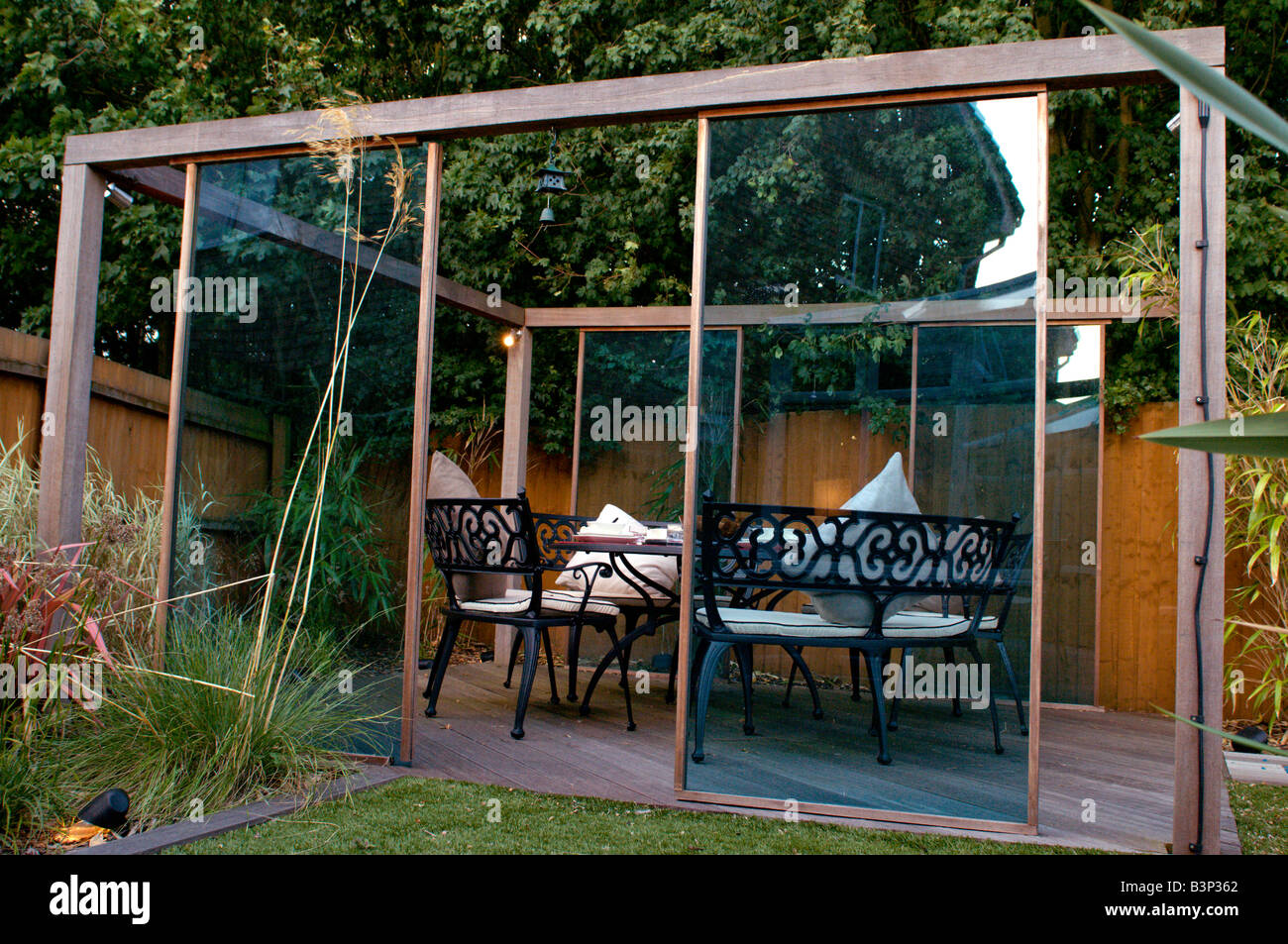 outdoor dining set under gazebo in modern landscaped garden Stock Photohttps://www.alamy.com/image-license-details/?v=1https://www.alamy.com/stock-photo-outdoor-dining-set-under-gazebo-in-modern-landscaped-garden-19539802.html
outdoor dining set under gazebo in modern landscaped garden Stock Photohttps://www.alamy.com/image-license-details/?v=1https://www.alamy.com/stock-photo-outdoor-dining-set-under-gazebo-in-modern-landscaped-garden-19539802.htmlRMB3P362–outdoor dining set under gazebo in modern landscaped garden
 Rapier early 17th century probably German The rapier was the principal civilian sidearm throughout the sixteenth and seventeenth centuries. Designed for cut-and-thrust fencing of progressively complex techniques, the rapier is characterized by a double-edged blade with an acute point and an elaborate guard for the hand. The guards, usually of iron or steel, were subject to a variety of embellishment. They were engraved, chiseled, gilded, damascened, and encrusted in gold and silver in keeping with fashionable styles. Unless otherwise noted, the materials, attributions, and dating given here re Stock Photohttps://www.alamy.com/image-license-details/?v=1https://www.alamy.com/rapier-early-17th-century-probably-german-the-rapier-was-the-principal-civilian-sidearm-throughout-the-sixteenth-and-seventeenth-centuries-designed-for-cut-and-thrust-fencing-of-progressively-complex-techniques-the-rapier-is-characterized-by-a-double-edged-blade-with-an-acute-point-and-an-elaborate-guard-for-the-hand-the-guards-usually-of-iron-or-steel-were-subject-to-a-variety-of-embellishment-they-were-engraved-chiseled-gilded-damascened-and-encrusted-in-gold-and-silver-in-keeping-with-fashionable-styles-unless-otherwise-noted-the-materials-attributions-and-dating-given-here-re-image458103283.html
Rapier early 17th century probably German The rapier was the principal civilian sidearm throughout the sixteenth and seventeenth centuries. Designed for cut-and-thrust fencing of progressively complex techniques, the rapier is characterized by a double-edged blade with an acute point and an elaborate guard for the hand. The guards, usually of iron or steel, were subject to a variety of embellishment. They were engraved, chiseled, gilded, damascened, and encrusted in gold and silver in keeping with fashionable styles. Unless otherwise noted, the materials, attributions, and dating given here re Stock Photohttps://www.alamy.com/image-license-details/?v=1https://www.alamy.com/rapier-early-17th-century-probably-german-the-rapier-was-the-principal-civilian-sidearm-throughout-the-sixteenth-and-seventeenth-centuries-designed-for-cut-and-thrust-fencing-of-progressively-complex-techniques-the-rapier-is-characterized-by-a-double-edged-blade-with-an-acute-point-and-an-elaborate-guard-for-the-hand-the-guards-usually-of-iron-or-steel-were-subject-to-a-variety-of-embellishment-they-were-engraved-chiseled-gilded-damascened-and-encrusted-in-gold-and-silver-in-keeping-with-fashionable-styles-unless-otherwise-noted-the-materials-attributions-and-dating-given-here-re-image458103283.htmlRM2HH8BBF–Rapier early 17th century probably German The rapier was the principal civilian sidearm throughout the sixteenth and seventeenth centuries. Designed for cut-and-thrust fencing of progressively complex techniques, the rapier is characterized by a double-edged blade with an acute point and an elaborate guard for the hand. The guards, usually of iron or steel, were subject to a variety of embellishment. They were engraved, chiseled, gilded, damascened, and encrusted in gold and silver in keeping with fashionable styles. Unless otherwise noted, the materials, attributions, and dating given here re
 decking edges meet astro turf lawn Stock Photohttps://www.alamy.com/image-license-details/?v=1https://www.alamy.com/stock-photo-decking-edges-meet-astro-turf-lawn-19502752.html
decking edges meet astro turf lawn Stock Photohttps://www.alamy.com/image-license-details/?v=1https://www.alamy.com/stock-photo-decking-edges-meet-astro-turf-lawn-19502752.htmlRMB3MBXT–decking edges meet astro turf lawn
 Rapier dated 1773 Spanish The rapier was the principal civilian sidearm throughout the sixteenth and seventeenth centuries. Designed for cut-and-thrust fencing of progressively complex techniques, the rapier is characterized by a double-edged blade with an acute point and an elaborate guard for the hand. The guards, usually of iron or steel, were subject to a variety of embellishment. They were engraved, chiseled, gilded, damascened, and encrusted in gold and silver in keeping with fashionable styles. Unless otherwise noted, the materials, attributions, and dating given here refer to the hilts Stock Photohttps://www.alamy.com/image-license-details/?v=1https://www.alamy.com/rapier-dated-1773-spanish-the-rapier-was-the-principal-civilian-sidearm-throughout-the-sixteenth-and-seventeenth-centuries-designed-for-cut-and-thrust-fencing-of-progressively-complex-techniques-the-rapier-is-characterized-by-a-double-edged-blade-with-an-acute-point-and-an-elaborate-guard-for-the-hand-the-guards-usually-of-iron-or-steel-were-subject-to-a-variety-of-embellishment-they-were-engraved-chiseled-gilded-damascened-and-encrusted-in-gold-and-silver-in-keeping-with-fashionable-styles-unless-otherwise-noted-the-materials-attributions-and-dating-given-here-refer-to-the-hilts-image458089119.html
Rapier dated 1773 Spanish The rapier was the principal civilian sidearm throughout the sixteenth and seventeenth centuries. Designed for cut-and-thrust fencing of progressively complex techniques, the rapier is characterized by a double-edged blade with an acute point and an elaborate guard for the hand. The guards, usually of iron or steel, were subject to a variety of embellishment. They were engraved, chiseled, gilded, damascened, and encrusted in gold and silver in keeping with fashionable styles. Unless otherwise noted, the materials, attributions, and dating given here refer to the hilts Stock Photohttps://www.alamy.com/image-license-details/?v=1https://www.alamy.com/rapier-dated-1773-spanish-the-rapier-was-the-principal-civilian-sidearm-throughout-the-sixteenth-and-seventeenth-centuries-designed-for-cut-and-thrust-fencing-of-progressively-complex-techniques-the-rapier-is-characterized-by-a-double-edged-blade-with-an-acute-point-and-an-elaborate-guard-for-the-hand-the-guards-usually-of-iron-or-steel-were-subject-to-a-variety-of-embellishment-they-were-engraved-chiseled-gilded-damascened-and-encrusted-in-gold-and-silver-in-keeping-with-fashionable-styles-unless-otherwise-noted-the-materials-attributions-and-dating-given-here-refer-to-the-hilts-image458089119.htmlRM2HH7N9K–Rapier dated 1773 Spanish The rapier was the principal civilian sidearm throughout the sixteenth and seventeenth centuries. Designed for cut-and-thrust fencing of progressively complex techniques, the rapier is characterized by a double-edged blade with an acute point and an elaborate guard for the hand. The guards, usually of iron or steel, were subject to a variety of embellishment. They were engraved, chiseled, gilded, damascened, and encrusted in gold and silver in keeping with fashionable styles. Unless otherwise noted, the materials, attributions, and dating given here refer to the hilts
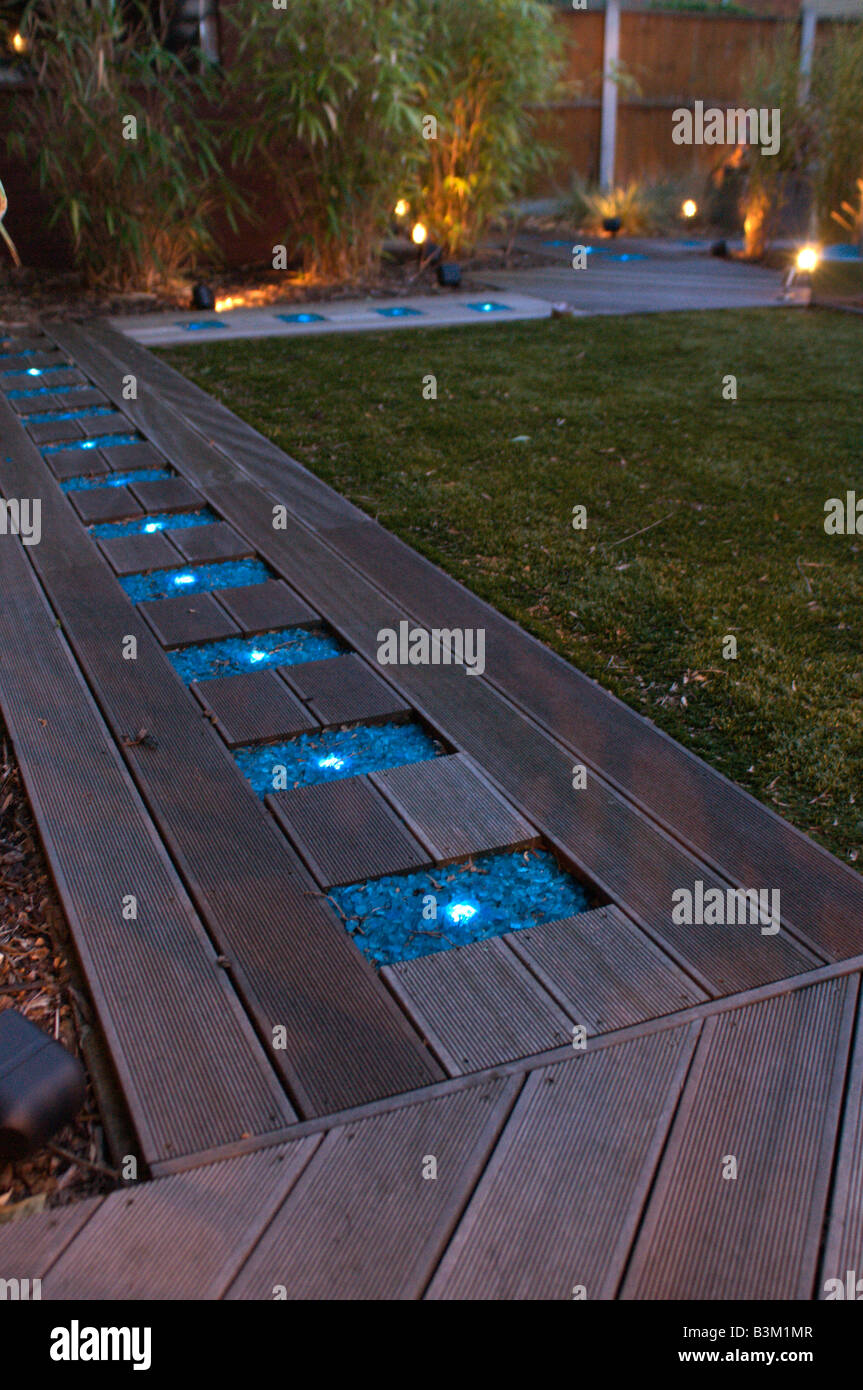 decking path lit by blue glass lights in modern garden Stock Photohttps://www.alamy.com/image-license-details/?v=1https://www.alamy.com/stock-photo-decking-path-lit-by-blue-glass-lights-in-modern-garden-19494743.html
decking path lit by blue glass lights in modern garden Stock Photohttps://www.alamy.com/image-license-details/?v=1https://www.alamy.com/stock-photo-decking-path-lit-by-blue-glass-lights-in-modern-garden-19494743.htmlRMB3M1MR–decking path lit by blue glass lights in modern garden
 Rapier ca. 1590 Italian The rapier was the principal civilian sidearm throughout the sixteenth and seventeenth centuries. Designed for cut-and-thrust fencing of progressively complex techniques, the rapier is characterized by a double-edged blade with an acute point and an elaborate guard for the hand. The guards, usually of iron or steel, were subject to a variety of embellishment. They were engraved, chiseled, gilded, damascened, and encrusted in gold and silver in keeping with fashionable styles. Unless otherwise noted, the materials, attributions, and dating given here refer to the hilts. Stock Photohttps://www.alamy.com/image-license-details/?v=1https://www.alamy.com/rapier-ca-1590-italian-the-rapier-was-the-principal-civilian-sidearm-throughout-the-sixteenth-and-seventeenth-centuries-designed-for-cut-and-thrust-fencing-of-progressively-complex-techniques-the-rapier-is-characterized-by-a-double-edged-blade-with-an-acute-point-and-an-elaborate-guard-for-the-hand-the-guards-usually-of-iron-or-steel-were-subject-to-a-variety-of-embellishment-they-were-engraved-chiseled-gilded-damascened-and-encrusted-in-gold-and-silver-in-keeping-with-fashionable-styles-unless-otherwise-noted-the-materials-attributions-and-dating-given-here-refer-to-the-hilts-image457996687.html
Rapier ca. 1590 Italian The rapier was the principal civilian sidearm throughout the sixteenth and seventeenth centuries. Designed for cut-and-thrust fencing of progressively complex techniques, the rapier is characterized by a double-edged blade with an acute point and an elaborate guard for the hand. The guards, usually of iron or steel, were subject to a variety of embellishment. They were engraved, chiseled, gilded, damascened, and encrusted in gold and silver in keeping with fashionable styles. Unless otherwise noted, the materials, attributions, and dating given here refer to the hilts. Stock Photohttps://www.alamy.com/image-license-details/?v=1https://www.alamy.com/rapier-ca-1590-italian-the-rapier-was-the-principal-civilian-sidearm-throughout-the-sixteenth-and-seventeenth-centuries-designed-for-cut-and-thrust-fencing-of-progressively-complex-techniques-the-rapier-is-characterized-by-a-double-edged-blade-with-an-acute-point-and-an-elaborate-guard-for-the-hand-the-guards-usually-of-iron-or-steel-were-subject-to-a-variety-of-embellishment-they-were-engraved-chiseled-gilded-damascened-and-encrusted-in-gold-and-silver-in-keeping-with-fashionable-styles-unless-otherwise-noted-the-materials-attributions-and-dating-given-here-refer-to-the-hilts-image457996687.htmlRM2HH3FCF–Rapier ca. 1590 Italian The rapier was the principal civilian sidearm throughout the sixteenth and seventeenth centuries. Designed for cut-and-thrust fencing of progressively complex techniques, the rapier is characterized by a double-edged blade with an acute point and an elaborate guard for the hand. The guards, usually of iron or steel, were subject to a variety of embellishment. They were engraved, chiseled, gilded, damascened, and encrusted in gold and silver in keeping with fashionable styles. Unless otherwise noted, the materials, attributions, and dating given here refer to the hilts.
 Rapier ca. 1570 Italian The rapier was the principal civilian sidearm throughout the sixteenth and seventeenth centuries. Designed for cut-and-thrust fencing of progressively complex techniques, the rapier is characterized by a double-edged blade with an acute point and an elaborate guard for the hand. The guards, usually of iron or steel, were subject to a variety of embellishment. They were engraved, chiseled, gilded, damascened, and encrusted in gold and silver in keeping with fashionable styles. Unless otherwise noted, the materials, attributions, and dating given here refer to the hilts. Stock Photohttps://www.alamy.com/image-license-details/?v=1https://www.alamy.com/rapier-ca-1570-italian-the-rapier-was-the-principal-civilian-sidearm-throughout-the-sixteenth-and-seventeenth-centuries-designed-for-cut-and-thrust-fencing-of-progressively-complex-techniques-the-rapier-is-characterized-by-a-double-edged-blade-with-an-acute-point-and-an-elaborate-guard-for-the-hand-the-guards-usually-of-iron-or-steel-were-subject-to-a-variety-of-embellishment-they-were-engraved-chiseled-gilded-damascened-and-encrusted-in-gold-and-silver-in-keeping-with-fashionable-styles-unless-otherwise-noted-the-materials-attributions-and-dating-given-here-refer-to-the-hilts-image458473948.html
Rapier ca. 1570 Italian The rapier was the principal civilian sidearm throughout the sixteenth and seventeenth centuries. Designed for cut-and-thrust fencing of progressively complex techniques, the rapier is characterized by a double-edged blade with an acute point and an elaborate guard for the hand. The guards, usually of iron or steel, were subject to a variety of embellishment. They were engraved, chiseled, gilded, damascened, and encrusted in gold and silver in keeping with fashionable styles. Unless otherwise noted, the materials, attributions, and dating given here refer to the hilts. Stock Photohttps://www.alamy.com/image-license-details/?v=1https://www.alamy.com/rapier-ca-1570-italian-the-rapier-was-the-principal-civilian-sidearm-throughout-the-sixteenth-and-seventeenth-centuries-designed-for-cut-and-thrust-fencing-of-progressively-complex-techniques-the-rapier-is-characterized-by-a-double-edged-blade-with-an-acute-point-and-an-elaborate-guard-for-the-hand-the-guards-usually-of-iron-or-steel-were-subject-to-a-variety-of-embellishment-they-were-engraved-chiseled-gilded-damascened-and-encrusted-in-gold-and-silver-in-keeping-with-fashionable-styles-unless-otherwise-noted-the-materials-attributions-and-dating-given-here-refer-to-the-hilts-image458473948.htmlRM2HHW85G–Rapier ca. 1570 Italian The rapier was the principal civilian sidearm throughout the sixteenth and seventeenth centuries. Designed for cut-and-thrust fencing of progressively complex techniques, the rapier is characterized by a double-edged blade with an acute point and an elaborate guard for the hand. The guards, usually of iron or steel, were subject to a variety of embellishment. They were engraved, chiseled, gilded, damascened, and encrusted in gold and silver in keeping with fashionable styles. Unless otherwise noted, the materials, attributions, and dating given here refer to the hilts.
 Rapier French ca. 1550 The rapier was the principal civilian sidearm throughout the sixteenth and seventeenth centuries. Designed for cut-and-thrust fencing of progressively complex techniques, the rapier is characterized by a double-edged blade with an acute point and an elaborate guard for the hand. The guards, usually of iron or steel, were subject to a variety of embellishment. They were engraved, chiseled, gilded, damascened, and encrusted in gold and silver in keeping with fashionable styles. Unless otherwise noted, the materials, attributions, and dating given here refer to the hilts. R Stock Photohttps://www.alamy.com/image-license-details/?v=1https://www.alamy.com/rapier-french-ca-1550-the-rapier-was-the-principal-civilian-sidearm-throughout-the-sixteenth-and-seventeenth-centuries-designed-for-cut-and-thrust-fencing-of-progressively-complex-techniques-the-rapier-is-characterized-by-a-double-edged-blade-with-an-acute-point-and-an-elaborate-guard-for-the-hand-the-guards-usually-of-iron-or-steel-were-subject-to-a-variety-of-embellishment-they-were-engraved-chiseled-gilded-damascened-and-encrusted-in-gold-and-silver-in-keeping-with-fashionable-styles-unless-otherwise-noted-the-materials-attributions-and-dating-given-here-refer-to-the-hilts-r-image569500441.html
Rapier French ca. 1550 The rapier was the principal civilian sidearm throughout the sixteenth and seventeenth centuries. Designed for cut-and-thrust fencing of progressively complex techniques, the rapier is characterized by a double-edged blade with an acute point and an elaborate guard for the hand. The guards, usually of iron or steel, were subject to a variety of embellishment. They were engraved, chiseled, gilded, damascened, and encrusted in gold and silver in keeping with fashionable styles. Unless otherwise noted, the materials, attributions, and dating given here refer to the hilts. R Stock Photohttps://www.alamy.com/image-license-details/?v=1https://www.alamy.com/rapier-french-ca-1550-the-rapier-was-the-principal-civilian-sidearm-throughout-the-sixteenth-and-seventeenth-centuries-designed-for-cut-and-thrust-fencing-of-progressively-complex-techniques-the-rapier-is-characterized-by-a-double-edged-blade-with-an-acute-point-and-an-elaborate-guard-for-the-hand-the-guards-usually-of-iron-or-steel-were-subject-to-a-variety-of-embellishment-they-were-engraved-chiseled-gilded-damascened-and-encrusted-in-gold-and-silver-in-keeping-with-fashionable-styles-unless-otherwise-noted-the-materials-attributions-and-dating-given-here-refer-to-the-hilts-r-image569500441.htmlRM2T2EYHD–Rapier French ca. 1550 The rapier was the principal civilian sidearm throughout the sixteenth and seventeenth centuries. Designed for cut-and-thrust fencing of progressively complex techniques, the rapier is characterized by a double-edged blade with an acute point and an elaborate guard for the hand. The guards, usually of iron or steel, were subject to a variety of embellishment. They were engraved, chiseled, gilded, damascened, and encrusted in gold and silver in keeping with fashionable styles. Unless otherwise noted, the materials, attributions, and dating given here refer to the hilts. R
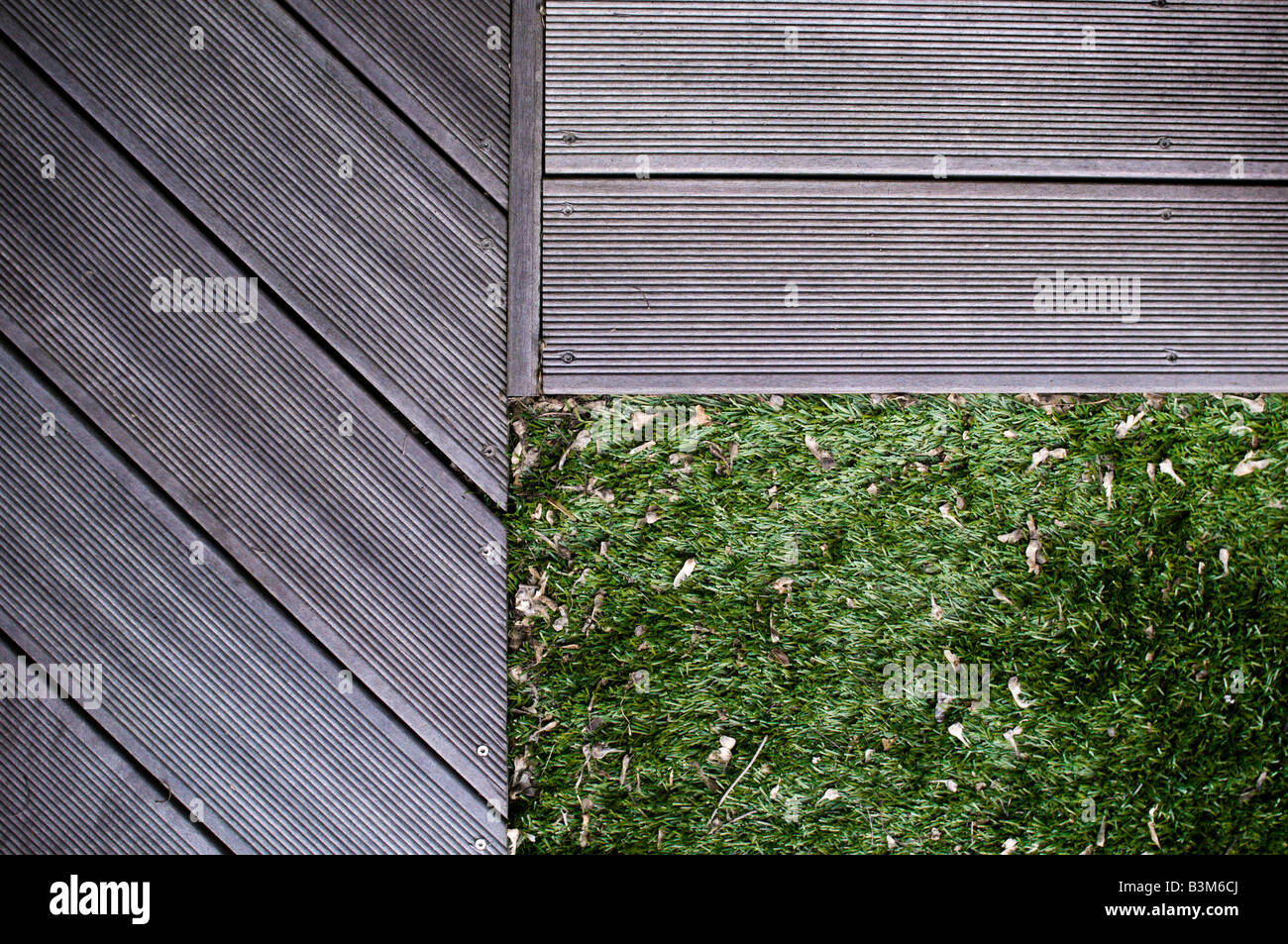 decking edges meet astro turf lawn Stock Photohttps://www.alamy.com/image-license-details/?v=1https://www.alamy.com/stock-photo-decking-edges-meet-astro-turf-lawn-19498434.html
decking edges meet astro turf lawn Stock Photohttps://www.alamy.com/image-license-details/?v=1https://www.alamy.com/stock-photo-decking-edges-meet-astro-turf-lawn-19498434.htmlRMB3M6CJ–decking edges meet astro turf lawn
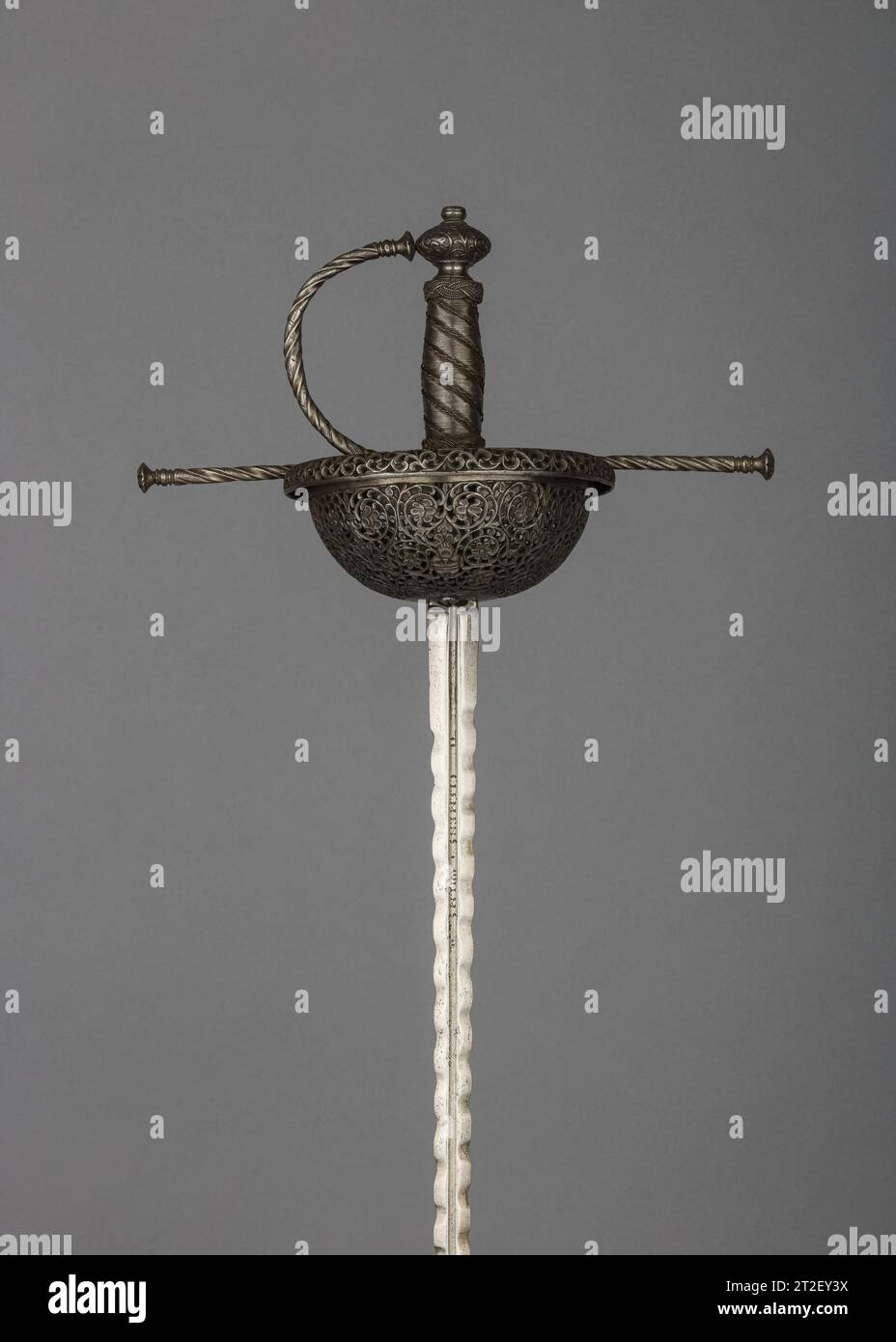 Cup-Hilted Rapier hilt, Spanish; blade, German ca. 1650 The rapier was the principal civilian sidearm throughout the sixteenth and seventeenth centuries. Designed for cut-and-thrust fencing of progressively complex techniques, the rapier is characterized by a double-edged blade with an acute point and an elaborate guard for the hand. The guards, usually of iron or steel, were subject to a variety of embellishment. They were engraved, chiseled, gilded, damascened, and encrusted in gold and silver in keeping with fashionable styles. Unless otherwise noted, the materials, attributions, and dating Stock Photohttps://www.alamy.com/image-license-details/?v=1https://www.alamy.com/cup-hilted-rapier-hilt-spanish-blade-german-ca-1650-the-rapier-was-the-principal-civilian-sidearm-throughout-the-sixteenth-and-seventeenth-centuries-designed-for-cut-and-thrust-fencing-of-progressively-complex-techniques-the-rapier-is-characterized-by-a-double-edged-blade-with-an-acute-point-and-an-elaborate-guard-for-the-hand-the-guards-usually-of-iron-or-steel-were-subject-to-a-variety-of-embellishment-they-were-engraved-chiseled-gilded-damascened-and-encrusted-in-gold-and-silver-in-keeping-with-fashionable-styles-unless-otherwise-noted-the-materials-attributions-and-dating-image569500062.html
Cup-Hilted Rapier hilt, Spanish; blade, German ca. 1650 The rapier was the principal civilian sidearm throughout the sixteenth and seventeenth centuries. Designed for cut-and-thrust fencing of progressively complex techniques, the rapier is characterized by a double-edged blade with an acute point and an elaborate guard for the hand. The guards, usually of iron or steel, were subject to a variety of embellishment. They were engraved, chiseled, gilded, damascened, and encrusted in gold and silver in keeping with fashionable styles. Unless otherwise noted, the materials, attributions, and dating Stock Photohttps://www.alamy.com/image-license-details/?v=1https://www.alamy.com/cup-hilted-rapier-hilt-spanish-blade-german-ca-1650-the-rapier-was-the-principal-civilian-sidearm-throughout-the-sixteenth-and-seventeenth-centuries-designed-for-cut-and-thrust-fencing-of-progressively-complex-techniques-the-rapier-is-characterized-by-a-double-edged-blade-with-an-acute-point-and-an-elaborate-guard-for-the-hand-the-guards-usually-of-iron-or-steel-were-subject-to-a-variety-of-embellishment-they-were-engraved-chiseled-gilded-damascened-and-encrusted-in-gold-and-silver-in-keeping-with-fashionable-styles-unless-otherwise-noted-the-materials-attributions-and-dating-image569500062.htmlRM2T2EY3X–Cup-Hilted Rapier hilt, Spanish; blade, German ca. 1650 The rapier was the principal civilian sidearm throughout the sixteenth and seventeenth centuries. Designed for cut-and-thrust fencing of progressively complex techniques, the rapier is characterized by a double-edged blade with an acute point and an elaborate guard for the hand. The guards, usually of iron or steel, were subject to a variety of embellishment. They were engraved, chiseled, gilded, damascened, and encrusted in gold and silver in keeping with fashionable styles. Unless otherwise noted, the materials, attributions, and dating
 outdoor dining set in modern landscaped garden Stock Photohttps://www.alamy.com/image-license-details/?v=1https://www.alamy.com/stock-photo-outdoor-dining-set-in-modern-landscaped-garden-19499623.html
outdoor dining set in modern landscaped garden Stock Photohttps://www.alamy.com/image-license-details/?v=1https://www.alamy.com/stock-photo-outdoor-dining-set-in-modern-landscaped-garden-19499623.htmlRMB3M7Y3–outdoor dining set in modern landscaped garden
 Rapier hilt, British; blade, Spanish 1610–20 The rapier was the principal civilian sidearm throughout the sixteenth and seventeenth centuries. Designed for cut-and-thrust fencing of progressively complex techniques, the rapier is characterized by a double-edged blade with an acute point and an elaborate guard for the hand. The guards, usually of iron or steel, were subject to a variety of embellishment. They were engraved, chiseled, gilded, damascened, and encrusted in gold and silver in keeping with fashionable styles. Unless otherwise noted, the materials, attributions, and dating given here Stock Photohttps://www.alamy.com/image-license-details/?v=1https://www.alamy.com/rapier-hilt-british-blade-spanish-161020-the-rapier-was-the-principal-civilian-sidearm-throughout-the-sixteenth-and-seventeenth-centuries-designed-for-cut-and-thrust-fencing-of-progressively-complex-techniques-the-rapier-is-characterized-by-a-double-edged-blade-with-an-acute-point-and-an-elaborate-guard-for-the-hand-the-guards-usually-of-iron-or-steel-were-subject-to-a-variety-of-embellishment-they-were-engraved-chiseled-gilded-damascened-and-encrusted-in-gold-and-silver-in-keeping-with-fashionable-styles-unless-otherwise-noted-the-materials-attributions-and-dating-given-here-image569500330.html
Rapier hilt, British; blade, Spanish 1610–20 The rapier was the principal civilian sidearm throughout the sixteenth and seventeenth centuries. Designed for cut-and-thrust fencing of progressively complex techniques, the rapier is characterized by a double-edged blade with an acute point and an elaborate guard for the hand. The guards, usually of iron or steel, were subject to a variety of embellishment. They were engraved, chiseled, gilded, damascened, and encrusted in gold and silver in keeping with fashionable styles. Unless otherwise noted, the materials, attributions, and dating given here Stock Photohttps://www.alamy.com/image-license-details/?v=1https://www.alamy.com/rapier-hilt-british-blade-spanish-161020-the-rapier-was-the-principal-civilian-sidearm-throughout-the-sixteenth-and-seventeenth-centuries-designed-for-cut-and-thrust-fencing-of-progressively-complex-techniques-the-rapier-is-characterized-by-a-double-edged-blade-with-an-acute-point-and-an-elaborate-guard-for-the-hand-the-guards-usually-of-iron-or-steel-were-subject-to-a-variety-of-embellishment-they-were-engraved-chiseled-gilded-damascened-and-encrusted-in-gold-and-silver-in-keeping-with-fashionable-styles-unless-otherwise-noted-the-materials-attributions-and-dating-given-here-image569500330.htmlRM2T2EYDE–Rapier hilt, British; blade, Spanish 1610–20 The rapier was the principal civilian sidearm throughout the sixteenth and seventeenth centuries. Designed for cut-and-thrust fencing of progressively complex techniques, the rapier is characterized by a double-edged blade with an acute point and an elaborate guard for the hand. The guards, usually of iron or steel, were subject to a variety of embellishment. They were engraved, chiseled, gilded, damascened, and encrusted in gold and silver in keeping with fashionable styles. Unless otherwise noted, the materials, attributions, and dating given here
 tinted perspex and wood gazebo in landscaped garden Stock Photohttps://www.alamy.com/image-license-details/?v=1https://www.alamy.com/stock-photo-tinted-perspex-and-wood-gazebo-in-landscaped-garden-19502099.html
tinted perspex and wood gazebo in landscaped garden Stock Photohttps://www.alamy.com/image-license-details/?v=1https://www.alamy.com/stock-photo-tinted-perspex-and-wood-gazebo-in-landscaped-garden-19502099.htmlRMB3MB3F–tinted perspex and wood gazebo in landscaped garden
 Cup-Hilted Rapier Spanish ca. 1650 The rapier was the principal civilian sidearm throughout the sixteenth and seventeenth centuries. Designed for cut-and-thrust fencing of progressively complex techniques, the rapier is characterized by a double-edged blade with an acute point and an elaborate guard for the hand. The guards, usually of iron or steel, were subject to a variety of embellishment. They were engraved, chiseled, gilded, damascened, and encrusted in gold and silver in keeping with fashionable styles. Unless otherwise noted, the materials, attributions, and dating given here refer to Stock Photohttps://www.alamy.com/image-license-details/?v=1https://www.alamy.com/cup-hilted-rapier-spanish-ca-1650-the-rapier-was-the-principal-civilian-sidearm-throughout-the-sixteenth-and-seventeenth-centuries-designed-for-cut-and-thrust-fencing-of-progressively-complex-techniques-the-rapier-is-characterized-by-a-double-edged-blade-with-an-acute-point-and-an-elaborate-guard-for-the-hand-the-guards-usually-of-iron-or-steel-were-subject-to-a-variety-of-embellishment-they-were-engraved-chiseled-gilded-damascened-and-encrusted-in-gold-and-silver-in-keeping-with-fashionable-styles-unless-otherwise-noted-the-materials-attributions-and-dating-given-here-refer-to-image569499946.html
Cup-Hilted Rapier Spanish ca. 1650 The rapier was the principal civilian sidearm throughout the sixteenth and seventeenth centuries. Designed for cut-and-thrust fencing of progressively complex techniques, the rapier is characterized by a double-edged blade with an acute point and an elaborate guard for the hand. The guards, usually of iron or steel, were subject to a variety of embellishment. They were engraved, chiseled, gilded, damascened, and encrusted in gold and silver in keeping with fashionable styles. Unless otherwise noted, the materials, attributions, and dating given here refer to Stock Photohttps://www.alamy.com/image-license-details/?v=1https://www.alamy.com/cup-hilted-rapier-spanish-ca-1650-the-rapier-was-the-principal-civilian-sidearm-throughout-the-sixteenth-and-seventeenth-centuries-designed-for-cut-and-thrust-fencing-of-progressively-complex-techniques-the-rapier-is-characterized-by-a-double-edged-blade-with-an-acute-point-and-an-elaborate-guard-for-the-hand-the-guards-usually-of-iron-or-steel-were-subject-to-a-variety-of-embellishment-they-were-engraved-chiseled-gilded-damascened-and-encrusted-in-gold-and-silver-in-keeping-with-fashionable-styles-unless-otherwise-noted-the-materials-attributions-and-dating-given-here-refer-to-image569499946.htmlRM2T2EXYP–Cup-Hilted Rapier Spanish ca. 1650 The rapier was the principal civilian sidearm throughout the sixteenth and seventeenth centuries. Designed for cut-and-thrust fencing of progressively complex techniques, the rapier is characterized by a double-edged blade with an acute point and an elaborate guard for the hand. The guards, usually of iron or steel, were subject to a variety of embellishment. They were engraved, chiseled, gilded, damascened, and encrusted in gold and silver in keeping with fashionable styles. Unless otherwise noted, the materials, attributions, and dating given here refer to
 outdoor dining set in modern landscaped garden Stock Photohttps://www.alamy.com/image-license-details/?v=1https://www.alamy.com/stock-photo-outdoor-dining-set-in-modern-landscaped-garden-19499960.html
outdoor dining set in modern landscaped garden Stock Photohttps://www.alamy.com/image-license-details/?v=1https://www.alamy.com/stock-photo-outdoor-dining-set-in-modern-landscaped-garden-19499960.htmlRMB3M8B4–outdoor dining set in modern landscaped garden
 Cup-Hilted Rapier Italian ca. 1650 The rapier was the principal civilian sidearm throughout the sixteenth and seventeenth centuries. Designed for cut-and-thrust fencing of progressively complex techniques, the rapier is characterized by a double-edged blade with an acute point and an elaborate guard for the hand. The guards, usually of iron or steel, were subject to a variety of embellishment. They were engraved, chiseled, gilded, damascened, and encrusted in gold and silver in keeping with fashionable styles. Unless otherwise noted, the materials, attributions, and dating given here refer to Stock Photohttps://www.alamy.com/image-license-details/?v=1https://www.alamy.com/cup-hilted-rapier-italian-ca-1650-the-rapier-was-the-principal-civilian-sidearm-throughout-the-sixteenth-and-seventeenth-centuries-designed-for-cut-and-thrust-fencing-of-progressively-complex-techniques-the-rapier-is-characterized-by-a-double-edged-blade-with-an-acute-point-and-an-elaborate-guard-for-the-hand-the-guards-usually-of-iron-or-steel-were-subject-to-a-variety-of-embellishment-they-were-engraved-chiseled-gilded-damascened-and-encrusted-in-gold-and-silver-in-keeping-with-fashionable-styles-unless-otherwise-noted-the-materials-attributions-and-dating-given-here-refer-to-image569499968.html
Cup-Hilted Rapier Italian ca. 1650 The rapier was the principal civilian sidearm throughout the sixteenth and seventeenth centuries. Designed for cut-and-thrust fencing of progressively complex techniques, the rapier is characterized by a double-edged blade with an acute point and an elaborate guard for the hand. The guards, usually of iron or steel, were subject to a variety of embellishment. They were engraved, chiseled, gilded, damascened, and encrusted in gold and silver in keeping with fashionable styles. Unless otherwise noted, the materials, attributions, and dating given here refer to Stock Photohttps://www.alamy.com/image-license-details/?v=1https://www.alamy.com/cup-hilted-rapier-italian-ca-1650-the-rapier-was-the-principal-civilian-sidearm-throughout-the-sixteenth-and-seventeenth-centuries-designed-for-cut-and-thrust-fencing-of-progressively-complex-techniques-the-rapier-is-characterized-by-a-double-edged-blade-with-an-acute-point-and-an-elaborate-guard-for-the-hand-the-guards-usually-of-iron-or-steel-were-subject-to-a-variety-of-embellishment-they-were-engraved-chiseled-gilded-damascened-and-encrusted-in-gold-and-silver-in-keeping-with-fashionable-styles-unless-otherwise-noted-the-materials-attributions-and-dating-given-here-refer-to-image569499968.htmlRM2T2EY0G–Cup-Hilted Rapier Italian ca. 1650 The rapier was the principal civilian sidearm throughout the sixteenth and seventeenth centuries. Designed for cut-and-thrust fencing of progressively complex techniques, the rapier is characterized by a double-edged blade with an acute point and an elaborate guard for the hand. The guards, usually of iron or steel, were subject to a variety of embellishment. They were engraved, chiseled, gilded, damascened, and encrusted in gold and silver in keeping with fashionable styles. Unless otherwise noted, the materials, attributions, and dating given here refer to
 Cup-Hilted Rapier possibly Flemish 17th century The rapier was the principal civilian sidearm throughout the sixteenth and seventeenth centuries. Designed for cut-and-thrust fencing of progressively complex techniques, the rapier is characterized by a double-edged blade with an acute point and an elaborate guard for the hand. The guards, usually of iron or steel, were subject to a variety of embellishment. They were engraved, chiseled, gilded, damascened, and encrusted in gold and silver in keeping with fashionable styles. Unless otherwise noted, the materials, attributions, and dating given h Stock Photohttps://www.alamy.com/image-license-details/?v=1https://www.alamy.com/cup-hilted-rapier-possibly-flemish-17th-century-the-rapier-was-the-principal-civilian-sidearm-throughout-the-sixteenth-and-seventeenth-centuries-designed-for-cut-and-thrust-fencing-of-progressively-complex-techniques-the-rapier-is-characterized-by-a-double-edged-blade-with-an-acute-point-and-an-elaborate-guard-for-the-hand-the-guards-usually-of-iron-or-steel-were-subject-to-a-variety-of-embellishment-they-were-engraved-chiseled-gilded-damascened-and-encrusted-in-gold-and-silver-in-keeping-with-fashionable-styles-unless-otherwise-noted-the-materials-attributions-and-dating-given-h-image569500029.html
Cup-Hilted Rapier possibly Flemish 17th century The rapier was the principal civilian sidearm throughout the sixteenth and seventeenth centuries. Designed for cut-and-thrust fencing of progressively complex techniques, the rapier is characterized by a double-edged blade with an acute point and an elaborate guard for the hand. The guards, usually of iron or steel, were subject to a variety of embellishment. They were engraved, chiseled, gilded, damascened, and encrusted in gold and silver in keeping with fashionable styles. Unless otherwise noted, the materials, attributions, and dating given h Stock Photohttps://www.alamy.com/image-license-details/?v=1https://www.alamy.com/cup-hilted-rapier-possibly-flemish-17th-century-the-rapier-was-the-principal-civilian-sidearm-throughout-the-sixteenth-and-seventeenth-centuries-designed-for-cut-and-thrust-fencing-of-progressively-complex-techniques-the-rapier-is-characterized-by-a-double-edged-blade-with-an-acute-point-and-an-elaborate-guard-for-the-hand-the-guards-usually-of-iron-or-steel-were-subject-to-a-variety-of-embellishment-they-were-engraved-chiseled-gilded-damascened-and-encrusted-in-gold-and-silver-in-keeping-with-fashionable-styles-unless-otherwise-noted-the-materials-attributions-and-dating-given-h-image569500029.htmlRM2T2EY2N–Cup-Hilted Rapier possibly Flemish 17th century The rapier was the principal civilian sidearm throughout the sixteenth and seventeenth centuries. Designed for cut-and-thrust fencing of progressively complex techniques, the rapier is characterized by a double-edged blade with an acute point and an elaborate guard for the hand. The guards, usually of iron or steel, were subject to a variety of embellishment. They were engraved, chiseled, gilded, damascened, and encrusted in gold and silver in keeping with fashionable styles. Unless otherwise noted, the materials, attributions, and dating given h
 modern water feature in english garden Stock Photohttps://www.alamy.com/image-license-details/?v=1https://www.alamy.com/stock-photo-modern-water-feature-in-english-garden-19497971.html
modern water feature in english garden Stock Photohttps://www.alamy.com/image-license-details/?v=1https://www.alamy.com/stock-photo-modern-water-feature-in-english-garden-19497971.htmlRMB3M5T3–modern water feature in english garden
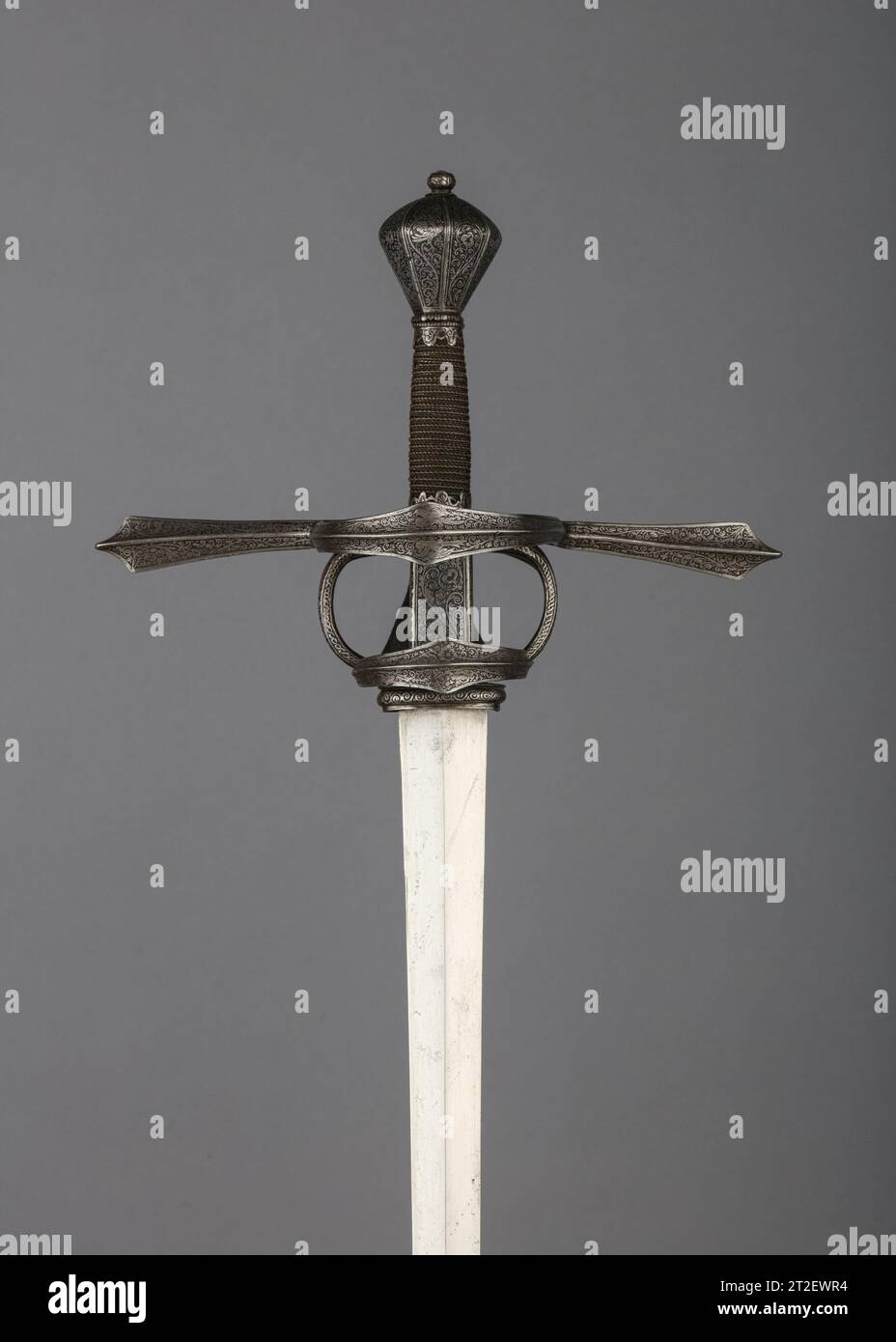 Rapier German, Saxony ca. 1580–1600 The rapier was the principal civilian sidearm throughout the sixteenth and seventeenth centuries. Designed for cut-and-thrust fencing of progressively complex techniques, the rapier is characterized by a double-edged blade with an acute point and an elaborate guard for the hand. The guards, usually of iron or steel, were subject to a variety of embellishment. They were engraved, chiseled, gilded, damascened, and encrusted in gold and silver in keeping with fashionable styles. Unless otherwise noted, the materials, attributions, and dating given here refer to Stock Photohttps://www.alamy.com/image-license-details/?v=1https://www.alamy.com/rapier-german-saxony-ca-15801600-the-rapier-was-the-principal-civilian-sidearm-throughout-the-sixteenth-and-seventeenth-centuries-designed-for-cut-and-thrust-fencing-of-progressively-complex-techniques-the-rapier-is-characterized-by-a-double-edged-blade-with-an-acute-point-and-an-elaborate-guard-for-the-hand-the-guards-usually-of-iron-or-steel-were-subject-to-a-variety-of-embellishment-they-were-engraved-chiseled-gilded-damascened-and-encrusted-in-gold-and-silver-in-keeping-with-fashionable-styles-unless-otherwise-noted-the-materials-attributions-and-dating-given-here-refer-to-image569499032.html
Rapier German, Saxony ca. 1580–1600 The rapier was the principal civilian sidearm throughout the sixteenth and seventeenth centuries. Designed for cut-and-thrust fencing of progressively complex techniques, the rapier is characterized by a double-edged blade with an acute point and an elaborate guard for the hand. The guards, usually of iron or steel, were subject to a variety of embellishment. They were engraved, chiseled, gilded, damascened, and encrusted in gold and silver in keeping with fashionable styles. Unless otherwise noted, the materials, attributions, and dating given here refer to Stock Photohttps://www.alamy.com/image-license-details/?v=1https://www.alamy.com/rapier-german-saxony-ca-15801600-the-rapier-was-the-principal-civilian-sidearm-throughout-the-sixteenth-and-seventeenth-centuries-designed-for-cut-and-thrust-fencing-of-progressively-complex-techniques-the-rapier-is-characterized-by-a-double-edged-blade-with-an-acute-point-and-an-elaborate-guard-for-the-hand-the-guards-usually-of-iron-or-steel-were-subject-to-a-variety-of-embellishment-they-were-engraved-chiseled-gilded-damascened-and-encrusted-in-gold-and-silver-in-keeping-with-fashionable-styles-unless-otherwise-noted-the-materials-attributions-and-dating-given-here-refer-to-image569499032.htmlRM2T2EWR4–Rapier German, Saxony ca. 1580–1600 The rapier was the principal civilian sidearm throughout the sixteenth and seventeenth centuries. Designed for cut-and-thrust fencing of progressively complex techniques, the rapier is characterized by a double-edged blade with an acute point and an elaborate guard for the hand. The guards, usually of iron or steel, were subject to a variety of embellishment. They were engraved, chiseled, gilded, damascened, and encrusted in gold and silver in keeping with fashionable styles. Unless otherwise noted, the materials, attributions, and dating given here refer to
 modern landscaped garden with water feature and astro-turf lawn and decking Stock Photohttps://www.alamy.com/image-license-details/?v=1https://www.alamy.com/stock-photo-modern-landscaped-garden-with-water-feature-and-astro-turf-lawn-and-19499089.html
modern landscaped garden with water feature and astro-turf lawn and decking Stock Photohttps://www.alamy.com/image-license-details/?v=1https://www.alamy.com/stock-photo-modern-landscaped-garden-with-water-feature-and-astro-turf-lawn-and-19499089.htmlRMB3M781–modern landscaped garden with water feature and astro-turf lawn and decking
 Cup-Hilted Rapier Spanish ca. 1650 The rapier was the principal civilian sidearm throughout the sixteenth and seventeenth centuries. Designed for cut-and-thrust fencing of progressively complex techniques, the rapier is characterized by a double-edged blade with an acute point and an elaborate guard for the hand. The guards, usually of iron or steel, were subject to a variety of embellishment. They were engraved, chiseled, gilded, damascened, and encrusted in gold and silver in keeping with fashionable styles. Unless otherwise noted, the materials, attributions, and dating given here refer to Stock Photohttps://www.alamy.com/image-license-details/?v=1https://www.alamy.com/cup-hilted-rapier-spanish-ca-1650-the-rapier-was-the-principal-civilian-sidearm-throughout-the-sixteenth-and-seventeenth-centuries-designed-for-cut-and-thrust-fencing-of-progressively-complex-techniques-the-rapier-is-characterized-by-a-double-edged-blade-with-an-acute-point-and-an-elaborate-guard-for-the-hand-the-guards-usually-of-iron-or-steel-were-subject-to-a-variety-of-embellishment-they-were-engraved-chiseled-gilded-damascened-and-encrusted-in-gold-and-silver-in-keeping-with-fashionable-styles-unless-otherwise-noted-the-materials-attributions-and-dating-given-here-refer-to-image569499950.html
Cup-Hilted Rapier Spanish ca. 1650 The rapier was the principal civilian sidearm throughout the sixteenth and seventeenth centuries. Designed for cut-and-thrust fencing of progressively complex techniques, the rapier is characterized by a double-edged blade with an acute point and an elaborate guard for the hand. The guards, usually of iron or steel, were subject to a variety of embellishment. They were engraved, chiseled, gilded, damascened, and encrusted in gold and silver in keeping with fashionable styles. Unless otherwise noted, the materials, attributions, and dating given here refer to Stock Photohttps://www.alamy.com/image-license-details/?v=1https://www.alamy.com/cup-hilted-rapier-spanish-ca-1650-the-rapier-was-the-principal-civilian-sidearm-throughout-the-sixteenth-and-seventeenth-centuries-designed-for-cut-and-thrust-fencing-of-progressively-complex-techniques-the-rapier-is-characterized-by-a-double-edged-blade-with-an-acute-point-and-an-elaborate-guard-for-the-hand-the-guards-usually-of-iron-or-steel-were-subject-to-a-variety-of-embellishment-they-were-engraved-chiseled-gilded-damascened-and-encrusted-in-gold-and-silver-in-keeping-with-fashionable-styles-unless-otherwise-noted-the-materials-attributions-and-dating-given-here-refer-to-image569499950.htmlRM2T2EXYX–Cup-Hilted Rapier Spanish ca. 1650 The rapier was the principal civilian sidearm throughout the sixteenth and seventeenth centuries. Designed for cut-and-thrust fencing of progressively complex techniques, the rapier is characterized by a double-edged blade with an acute point and an elaborate guard for the hand. The guards, usually of iron or steel, were subject to a variety of embellishment. They were engraved, chiseled, gilded, damascened, and encrusted in gold and silver in keeping with fashionable styles. Unless otherwise noted, the materials, attributions, and dating given here refer to
 Cup-Hilted Rapier hilt, Spanish; blade, German ca. 1650 The rapier was the principal civilian sidearm throughout the sixteenth and seventeenth centuries. Designed for cut-and-thrust fencing of progressively complex techniques, the rapier is characterized by a double-edged blade with an acute point and an elaborate guard for the hand. The guards, usually of iron or steel, were subject to a variety of embellishment. They were engraved, chiseled, gilded, damascened, and encrusted in gold and silver in keeping with fashionable styles. Unless otherwise noted, the materials, attributions, and dating Stock Photohttps://www.alamy.com/image-license-details/?v=1https://www.alamy.com/cup-hilted-rapier-hilt-spanish-blade-german-ca-1650-the-rapier-was-the-principal-civilian-sidearm-throughout-the-sixteenth-and-seventeenth-centuries-designed-for-cut-and-thrust-fencing-of-progressively-complex-techniques-the-rapier-is-characterized-by-a-double-edged-blade-with-an-acute-point-and-an-elaborate-guard-for-the-hand-the-guards-usually-of-iron-or-steel-were-subject-to-a-variety-of-embellishment-they-were-engraved-chiseled-gilded-damascened-and-encrusted-in-gold-and-silver-in-keeping-with-fashionable-styles-unless-otherwise-noted-the-materials-attributions-and-dating-image569499487.html
Cup-Hilted Rapier hilt, Spanish; blade, German ca. 1650 The rapier was the principal civilian sidearm throughout the sixteenth and seventeenth centuries. Designed for cut-and-thrust fencing of progressively complex techniques, the rapier is characterized by a double-edged blade with an acute point and an elaborate guard for the hand. The guards, usually of iron or steel, were subject to a variety of embellishment. They were engraved, chiseled, gilded, damascened, and encrusted in gold and silver in keeping with fashionable styles. Unless otherwise noted, the materials, attributions, and dating Stock Photohttps://www.alamy.com/image-license-details/?v=1https://www.alamy.com/cup-hilted-rapier-hilt-spanish-blade-german-ca-1650-the-rapier-was-the-principal-civilian-sidearm-throughout-the-sixteenth-and-seventeenth-centuries-designed-for-cut-and-thrust-fencing-of-progressively-complex-techniques-the-rapier-is-characterized-by-a-double-edged-blade-with-an-acute-point-and-an-elaborate-guard-for-the-hand-the-guards-usually-of-iron-or-steel-were-subject-to-a-variety-of-embellishment-they-were-engraved-chiseled-gilded-damascened-and-encrusted-in-gold-and-silver-in-keeping-with-fashionable-styles-unless-otherwise-noted-the-materials-attributions-and-dating-image569499487.htmlRM2T2EXBB–Cup-Hilted Rapier hilt, Spanish; blade, German ca. 1650 The rapier was the principal civilian sidearm throughout the sixteenth and seventeenth centuries. Designed for cut-and-thrust fencing of progressively complex techniques, the rapier is characterized by a double-edged blade with an acute point and an elaborate guard for the hand. The guards, usually of iron or steel, were subject to a variety of embellishment. They were engraved, chiseled, gilded, damascened, and encrusted in gold and silver in keeping with fashionable styles. Unless otherwise noted, the materials, attributions, and dating
 Rapier Italian early 17th century The rapier was the principal civilian sidearm throughout the sixteenth and seventeenth centuries. Designed for cut-and-thrust fencing of progressively complex techniques, the rapier is characterized by a double-edged blade with an acute point and an elaborate guard for the hand. The guards, usually of iron or steel, were subject to a variety of embellishment. They were engraved, chiseled, gilded, damascened, and encrusted in gold and silver in keeping with fashionable styles. Unless otherwise noted, the materials, attributions, and dating given here refer to t Stock Photohttps://www.alamy.com/image-license-details/?v=1https://www.alamy.com/rapier-italian-early-17th-century-the-rapier-was-the-principal-civilian-sidearm-throughout-the-sixteenth-and-seventeenth-centuries-designed-for-cut-and-thrust-fencing-of-progressively-complex-techniques-the-rapier-is-characterized-by-a-double-edged-blade-with-an-acute-point-and-an-elaborate-guard-for-the-hand-the-guards-usually-of-iron-or-steel-were-subject-to-a-variety-of-embellishment-they-were-engraved-chiseled-gilded-damascened-and-encrusted-in-gold-and-silver-in-keeping-with-fashionable-styles-unless-otherwise-noted-the-materials-attributions-and-dating-given-here-refer-to-t-image569499663.html
Rapier Italian early 17th century The rapier was the principal civilian sidearm throughout the sixteenth and seventeenth centuries. Designed for cut-and-thrust fencing of progressively complex techniques, the rapier is characterized by a double-edged blade with an acute point and an elaborate guard for the hand. The guards, usually of iron or steel, were subject to a variety of embellishment. They were engraved, chiseled, gilded, damascened, and encrusted in gold and silver in keeping with fashionable styles. Unless otherwise noted, the materials, attributions, and dating given here refer to t Stock Photohttps://www.alamy.com/image-license-details/?v=1https://www.alamy.com/rapier-italian-early-17th-century-the-rapier-was-the-principal-civilian-sidearm-throughout-the-sixteenth-and-seventeenth-centuries-designed-for-cut-and-thrust-fencing-of-progressively-complex-techniques-the-rapier-is-characterized-by-a-double-edged-blade-with-an-acute-point-and-an-elaborate-guard-for-the-hand-the-guards-usually-of-iron-or-steel-were-subject-to-a-variety-of-embellishment-they-were-engraved-chiseled-gilded-damascened-and-encrusted-in-gold-and-silver-in-keeping-with-fashionable-styles-unless-otherwise-noted-the-materials-attributions-and-dating-given-here-refer-to-t-image569499663.htmlRM2T2EXHK–Rapier Italian early 17th century The rapier was the principal civilian sidearm throughout the sixteenth and seventeenth centuries. Designed for cut-and-thrust fencing of progressively complex techniques, the rapier is characterized by a double-edged blade with an acute point and an elaborate guard for the hand. The guards, usually of iron or steel, were subject to a variety of embellishment. They were engraved, chiseled, gilded, damascened, and encrusted in gold and silver in keeping with fashionable styles. Unless otherwise noted, the materials, attributions, and dating given here refer to t
 Rapier Italian late 16th century The rapier was the principal civilian sidearm throughout the sixteenth and seventeenth centuries. Designed for cut-and-thrust fencing of progressively complex techniques, the rapier is characterized by a double-edged blade with an acute point and an elaborate guard for the hand. The guards, usually of iron or steel, were subject to a variety of embellishment. They were engraved, chiseled, gilded, damascened, and encrusted in gold and silver in keeping with fashionable styles. Unless otherwise noted, the materials, attributions, and dating given here refer to th Stock Photohttps://www.alamy.com/image-license-details/?v=1https://www.alamy.com/rapier-italian-late-16th-century-the-rapier-was-the-principal-civilian-sidearm-throughout-the-sixteenth-and-seventeenth-centuries-designed-for-cut-and-thrust-fencing-of-progressively-complex-techniques-the-rapier-is-characterized-by-a-double-edged-blade-with-an-acute-point-and-an-elaborate-guard-for-the-hand-the-guards-usually-of-iron-or-steel-were-subject-to-a-variety-of-embellishment-they-were-engraved-chiseled-gilded-damascened-and-encrusted-in-gold-and-silver-in-keeping-with-fashionable-styles-unless-otherwise-noted-the-materials-attributions-and-dating-given-here-refer-to-th-image569498718.html
Rapier Italian late 16th century The rapier was the principal civilian sidearm throughout the sixteenth and seventeenth centuries. Designed for cut-and-thrust fencing of progressively complex techniques, the rapier is characterized by a double-edged blade with an acute point and an elaborate guard for the hand. The guards, usually of iron or steel, were subject to a variety of embellishment. They were engraved, chiseled, gilded, damascened, and encrusted in gold and silver in keeping with fashionable styles. Unless otherwise noted, the materials, attributions, and dating given here refer to th Stock Photohttps://www.alamy.com/image-license-details/?v=1https://www.alamy.com/rapier-italian-late-16th-century-the-rapier-was-the-principal-civilian-sidearm-throughout-the-sixteenth-and-seventeenth-centuries-designed-for-cut-and-thrust-fencing-of-progressively-complex-techniques-the-rapier-is-characterized-by-a-double-edged-blade-with-an-acute-point-and-an-elaborate-guard-for-the-hand-the-guards-usually-of-iron-or-steel-were-subject-to-a-variety-of-embellishment-they-were-engraved-chiseled-gilded-damascened-and-encrusted-in-gold-and-silver-in-keeping-with-fashionable-styles-unless-otherwise-noted-the-materials-attributions-and-dating-given-here-refer-to-th-image569498718.htmlRM2T2EWBX–Rapier Italian late 16th century The rapier was the principal civilian sidearm throughout the sixteenth and seventeenth centuries. Designed for cut-and-thrust fencing of progressively complex techniques, the rapier is characterized by a double-edged blade with an acute point and an elaborate guard for the hand. The guards, usually of iron or steel, were subject to a variety of embellishment. They were engraved, chiseled, gilded, damascened, and encrusted in gold and silver in keeping with fashionable styles. Unless otherwise noted, the materials, attributions, and dating given here refer to th
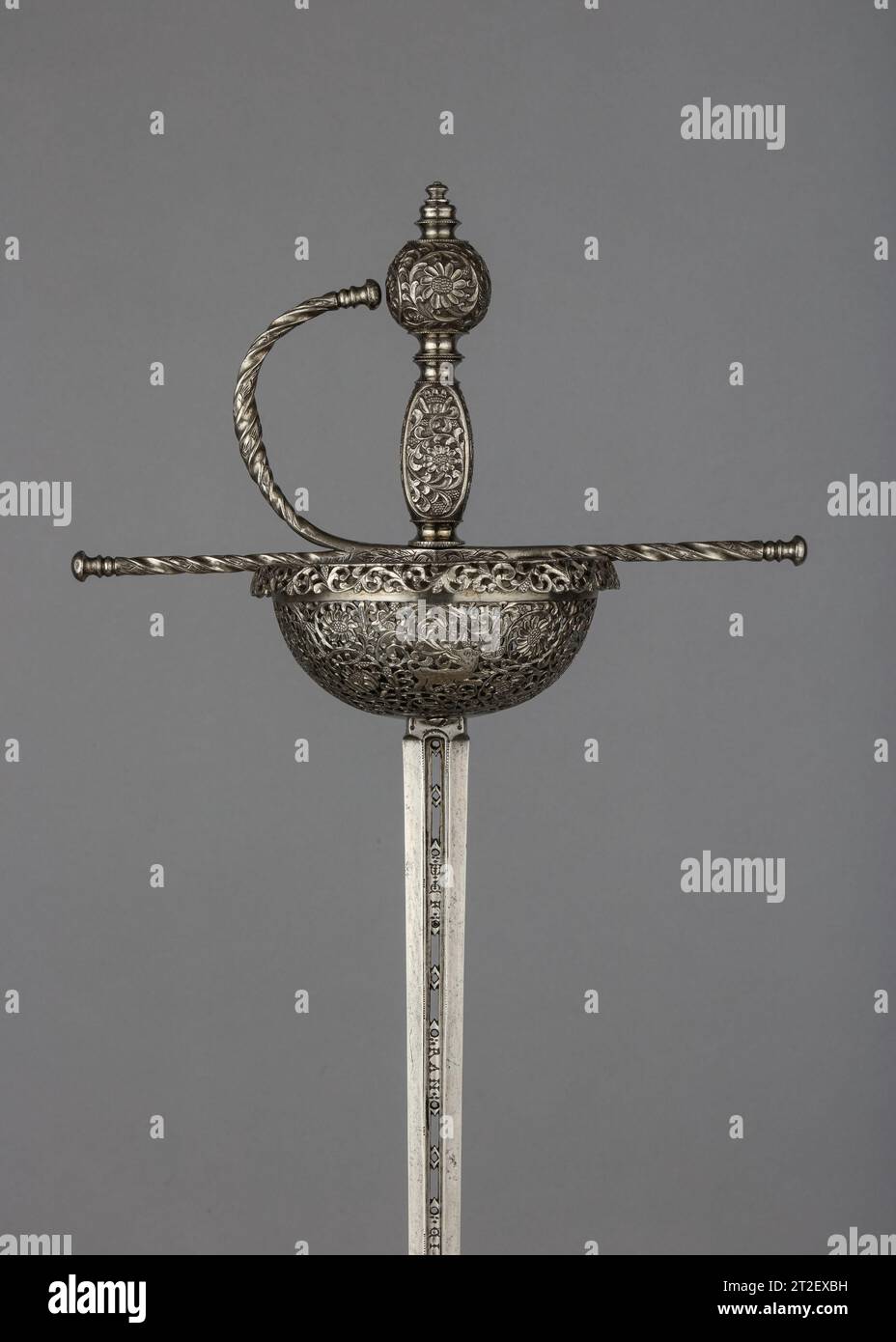 Cup-Hilted Rapier Spanish ca. 1650 The rapier was the principal civilian sidearm throughout the sixteenth and seventeenth centuries. Designed for cut-and-thrust fencing of progressively complex techniques, the rapier is characterized by a double-edged blade with an acute point and an elaborate guard for the hand. The guards, usually of iron or steel, were subject to a variety of embellishment. They were engraved, chiseled, gilded, damascened, and encrusted in gold and silver in keeping with fashionable styles. Unless otherwise noted, the materials, attributions, and dating given here refer to Stock Photohttps://www.alamy.com/image-license-details/?v=1https://www.alamy.com/cup-hilted-rapier-spanish-ca-1650-the-rapier-was-the-principal-civilian-sidearm-throughout-the-sixteenth-and-seventeenth-centuries-designed-for-cut-and-thrust-fencing-of-progressively-complex-techniques-the-rapier-is-characterized-by-a-double-edged-blade-with-an-acute-point-and-an-elaborate-guard-for-the-hand-the-guards-usually-of-iron-or-steel-were-subject-to-a-variety-of-embellishment-they-were-engraved-chiseled-gilded-damascened-and-encrusted-in-gold-and-silver-in-keeping-with-fashionable-styles-unless-otherwise-noted-the-materials-attributions-and-dating-given-here-refer-to-image569499493.html
Cup-Hilted Rapier Spanish ca. 1650 The rapier was the principal civilian sidearm throughout the sixteenth and seventeenth centuries. Designed for cut-and-thrust fencing of progressively complex techniques, the rapier is characterized by a double-edged blade with an acute point and an elaborate guard for the hand. The guards, usually of iron or steel, were subject to a variety of embellishment. They were engraved, chiseled, gilded, damascened, and encrusted in gold and silver in keeping with fashionable styles. Unless otherwise noted, the materials, attributions, and dating given here refer to Stock Photohttps://www.alamy.com/image-license-details/?v=1https://www.alamy.com/cup-hilted-rapier-spanish-ca-1650-the-rapier-was-the-principal-civilian-sidearm-throughout-the-sixteenth-and-seventeenth-centuries-designed-for-cut-and-thrust-fencing-of-progressively-complex-techniques-the-rapier-is-characterized-by-a-double-edged-blade-with-an-acute-point-and-an-elaborate-guard-for-the-hand-the-guards-usually-of-iron-or-steel-were-subject-to-a-variety-of-embellishment-they-were-engraved-chiseled-gilded-damascened-and-encrusted-in-gold-and-silver-in-keeping-with-fashionable-styles-unless-otherwise-noted-the-materials-attributions-and-dating-given-here-refer-to-image569499493.htmlRM2T2EXBH–Cup-Hilted Rapier Spanish ca. 1650 The rapier was the principal civilian sidearm throughout the sixteenth and seventeenth centuries. Designed for cut-and-thrust fencing of progressively complex techniques, the rapier is characterized by a double-edged blade with an acute point and an elaborate guard for the hand. The guards, usually of iron or steel, were subject to a variety of embellishment. They were engraved, chiseled, gilded, damascened, and encrusted in gold and silver in keeping with fashionable styles. Unless otherwise noted, the materials, attributions, and dating given here refer to
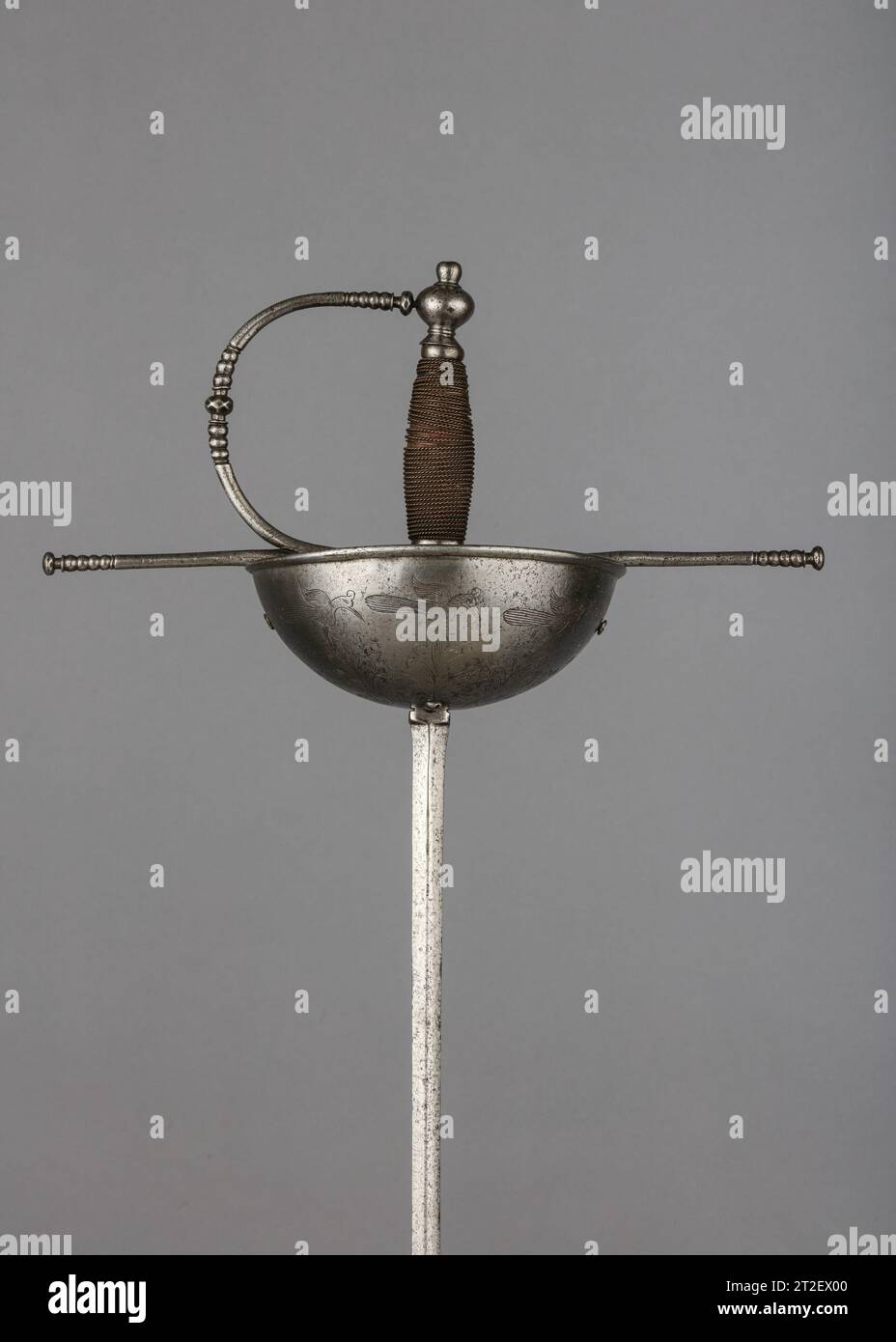 Cup-Hilted Rapier Spanish 17th century The rapier was the principal civilian sidearm throughout the sixteenth and seventeenth centuries. Designed for cut-and-thrust fencing of progressively complex techniques, the rapier is characterized by a double-edged blade with an acute point and an elaborate guard for the hand. The guards, usually of iron or steel, were subject to a variety of embellishment. They were engraved, chiseled, gilded, damascened, and encrusted in gold and silver in keeping with fashionable styles. Unless otherwise noted, the materials, attributions, and dating given here refer Stock Photohttps://www.alamy.com/image-license-details/?v=1https://www.alamy.com/cup-hilted-rapier-spanish-17th-century-the-rapier-was-the-principal-civilian-sidearm-throughout-the-sixteenth-and-seventeenth-centuries-designed-for-cut-and-thrust-fencing-of-progressively-complex-techniques-the-rapier-is-characterized-by-a-double-edged-blade-with-an-acute-point-and-an-elaborate-guard-for-the-hand-the-guards-usually-of-iron-or-steel-were-subject-to-a-variety-of-embellishment-they-were-engraved-chiseled-gilded-damascened-and-encrusted-in-gold-and-silver-in-keeping-with-fashionable-styles-unless-otherwise-noted-the-materials-attributions-and-dating-given-here-refer-image569499168.html
Cup-Hilted Rapier Spanish 17th century The rapier was the principal civilian sidearm throughout the sixteenth and seventeenth centuries. Designed for cut-and-thrust fencing of progressively complex techniques, the rapier is characterized by a double-edged blade with an acute point and an elaborate guard for the hand. The guards, usually of iron or steel, were subject to a variety of embellishment. They were engraved, chiseled, gilded, damascened, and encrusted in gold and silver in keeping with fashionable styles. Unless otherwise noted, the materials, attributions, and dating given here refer Stock Photohttps://www.alamy.com/image-license-details/?v=1https://www.alamy.com/cup-hilted-rapier-spanish-17th-century-the-rapier-was-the-principal-civilian-sidearm-throughout-the-sixteenth-and-seventeenth-centuries-designed-for-cut-and-thrust-fencing-of-progressively-complex-techniques-the-rapier-is-characterized-by-a-double-edged-blade-with-an-acute-point-and-an-elaborate-guard-for-the-hand-the-guards-usually-of-iron-or-steel-were-subject-to-a-variety-of-embellishment-they-were-engraved-chiseled-gilded-damascened-and-encrusted-in-gold-and-silver-in-keeping-with-fashionable-styles-unless-otherwise-noted-the-materials-attributions-and-dating-given-here-refer-image569499168.htmlRM2T2EX00–Cup-Hilted Rapier Spanish 17th century The rapier was the principal civilian sidearm throughout the sixteenth and seventeenth centuries. Designed for cut-and-thrust fencing of progressively complex techniques, the rapier is characterized by a double-edged blade with an acute point and an elaborate guard for the hand. The guards, usually of iron or steel, were subject to a variety of embellishment. They were engraved, chiseled, gilded, damascened, and encrusted in gold and silver in keeping with fashionable styles. Unless otherwise noted, the materials, attributions, and dating given here refer
 Rapier Italian late 17th century The rapier was the principal civilian sidearm throughout the sixteenth and seventeenth centuries. Designed for cut-and-thrust fencing of progressively complex techniques, the rapier is characterized by a double-edged blade with an acute point and an elaborate guard for the hand. The guards, usually of iron or steel, were subject to a variety of embellishment. They were engraved, chiseled, gilded, damascened, and encrusted in gold and silver in keeping with fashionable styles. Unless otherwise noted, the materials, attributions, and dating given here refer to th Stock Photohttps://www.alamy.com/image-license-details/?v=1https://www.alamy.com/rapier-italian-late-17th-century-the-rapier-was-the-principal-civilian-sidearm-throughout-the-sixteenth-and-seventeenth-centuries-designed-for-cut-and-thrust-fencing-of-progressively-complex-techniques-the-rapier-is-characterized-by-a-double-edged-blade-with-an-acute-point-and-an-elaborate-guard-for-the-hand-the-guards-usually-of-iron-or-steel-were-subject-to-a-variety-of-embellishment-they-were-engraved-chiseled-gilded-damascened-and-encrusted-in-gold-and-silver-in-keeping-with-fashionable-styles-unless-otherwise-noted-the-materials-attributions-and-dating-given-here-refer-to-th-image569498891.html
Rapier Italian late 17th century The rapier was the principal civilian sidearm throughout the sixteenth and seventeenth centuries. Designed for cut-and-thrust fencing of progressively complex techniques, the rapier is characterized by a double-edged blade with an acute point and an elaborate guard for the hand. The guards, usually of iron or steel, were subject to a variety of embellishment. They were engraved, chiseled, gilded, damascened, and encrusted in gold and silver in keeping with fashionable styles. Unless otherwise noted, the materials, attributions, and dating given here refer to th Stock Photohttps://www.alamy.com/image-license-details/?v=1https://www.alamy.com/rapier-italian-late-17th-century-the-rapier-was-the-principal-civilian-sidearm-throughout-the-sixteenth-and-seventeenth-centuries-designed-for-cut-and-thrust-fencing-of-progressively-complex-techniques-the-rapier-is-characterized-by-a-double-edged-blade-with-an-acute-point-and-an-elaborate-guard-for-the-hand-the-guards-usually-of-iron-or-steel-were-subject-to-a-variety-of-embellishment-they-were-engraved-chiseled-gilded-damascened-and-encrusted-in-gold-and-silver-in-keeping-with-fashionable-styles-unless-otherwise-noted-the-materials-attributions-and-dating-given-here-refer-to-th-image569498891.htmlRM2T2EWJ3–Rapier Italian late 17th century The rapier was the principal civilian sidearm throughout the sixteenth and seventeenth centuries. Designed for cut-and-thrust fencing of progressively complex techniques, the rapier is characterized by a double-edged blade with an acute point and an elaborate guard for the hand. The guards, usually of iron or steel, were subject to a variety of embellishment. They were engraved, chiseled, gilded, damascened, and encrusted in gold and silver in keeping with fashionable styles. Unless otherwise noted, the materials, attributions, and dating given here refer to th
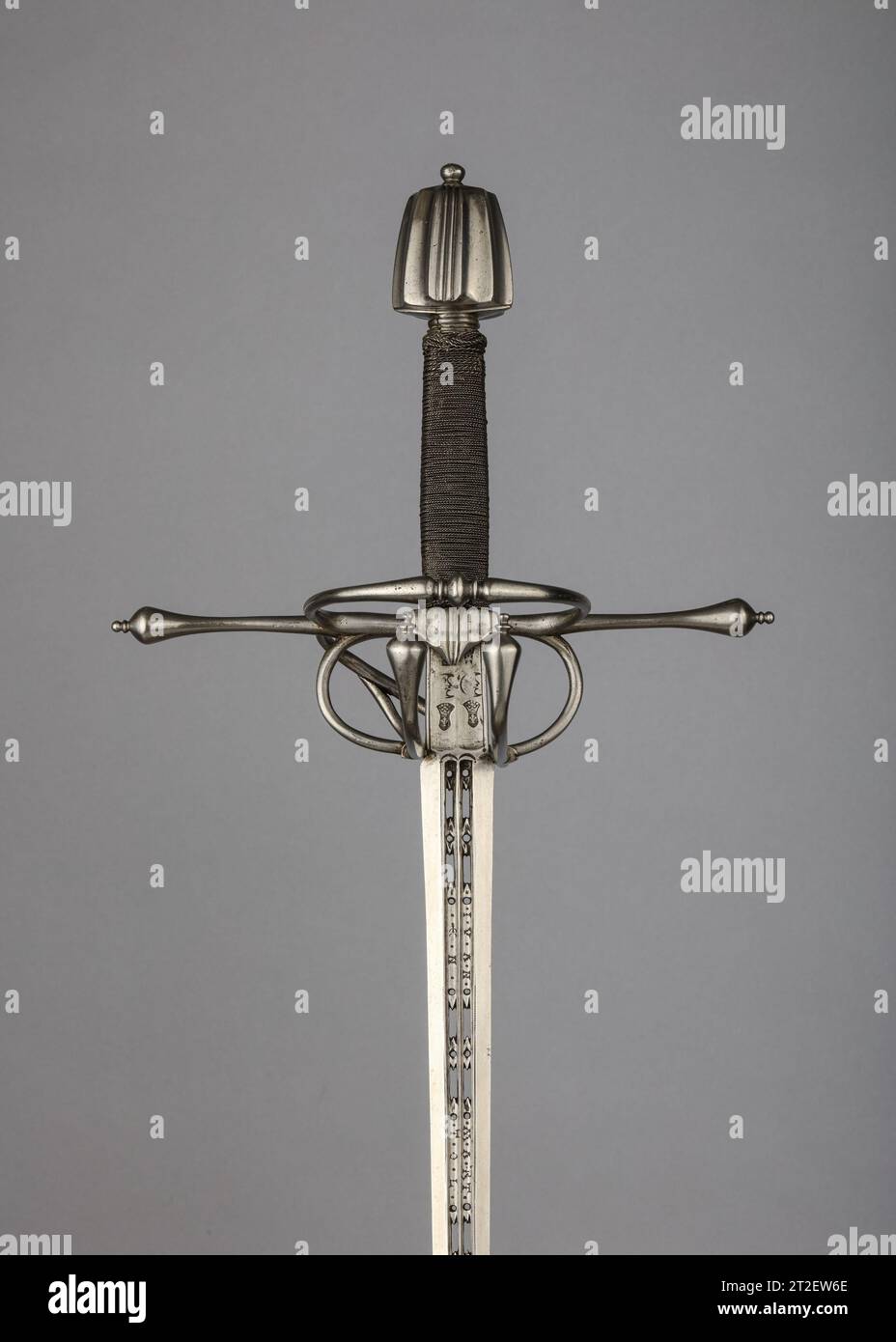 Rapier Bladesmith Juan Martinez the Elder Spanish mid-16th century The rapier was the principal civilian sidearm throughout the sixteenth and seventeenth centuries. Designed for cut-and-thrust fencing of progressively complex techniques, the rapier is characterized by a double-edged blade with an acute point and an elaborate guard for the hand. The guards, usually of iron or steel, were subject to a variety of embellishment. They were engraved, chiseled, gilded, damascened, and encrusted in gold and silver in keeping with fashionable styles. Unless otherwise noted, the materials, attributions, Stock Photohttps://www.alamy.com/image-license-details/?v=1https://www.alamy.com/rapier-bladesmith-juan-martinez-the-elder-spanish-mid-16th-century-the-rapier-was-the-principal-civilian-sidearm-throughout-the-sixteenth-and-seventeenth-centuries-designed-for-cut-and-thrust-fencing-of-progressively-complex-techniques-the-rapier-is-characterized-by-a-double-edged-blade-with-an-acute-point-and-an-elaborate-guard-for-the-hand-the-guards-usually-of-iron-or-steel-were-subject-to-a-variety-of-embellishment-they-were-engraved-chiseled-gilded-damascened-and-encrusted-in-gold-and-silver-in-keeping-with-fashionable-styles-unless-otherwise-noted-the-materials-attributions-image569498566.html
Rapier Bladesmith Juan Martinez the Elder Spanish mid-16th century The rapier was the principal civilian sidearm throughout the sixteenth and seventeenth centuries. Designed for cut-and-thrust fencing of progressively complex techniques, the rapier is characterized by a double-edged blade with an acute point and an elaborate guard for the hand. The guards, usually of iron or steel, were subject to a variety of embellishment. They were engraved, chiseled, gilded, damascened, and encrusted in gold and silver in keeping with fashionable styles. Unless otherwise noted, the materials, attributions, Stock Photohttps://www.alamy.com/image-license-details/?v=1https://www.alamy.com/rapier-bladesmith-juan-martinez-the-elder-spanish-mid-16th-century-the-rapier-was-the-principal-civilian-sidearm-throughout-the-sixteenth-and-seventeenth-centuries-designed-for-cut-and-thrust-fencing-of-progressively-complex-techniques-the-rapier-is-characterized-by-a-double-edged-blade-with-an-acute-point-and-an-elaborate-guard-for-the-hand-the-guards-usually-of-iron-or-steel-were-subject-to-a-variety-of-embellishment-they-were-engraved-chiseled-gilded-damascened-and-encrusted-in-gold-and-silver-in-keeping-with-fashionable-styles-unless-otherwise-noted-the-materials-attributions-image569498566.htmlRM2T2EW6E–Rapier Bladesmith Juan Martinez the Elder Spanish mid-16th century The rapier was the principal civilian sidearm throughout the sixteenth and seventeenth centuries. Designed for cut-and-thrust fencing of progressively complex techniques, the rapier is characterized by a double-edged blade with an acute point and an elaborate guard for the hand. The guards, usually of iron or steel, were subject to a variety of embellishment. They were engraved, chiseled, gilded, damascened, and encrusted in gold and silver in keeping with fashionable styles. Unless otherwise noted, the materials, attributions,
 Cup-Hilted Rapier Italian ca. 1650 The rapier was the principal civilian sidearm throughout the sixteenth and seventeenth centuries. Designed for cut-and-thrust fencing of progressively complex techniques, the rapier is characterized by a double-edged blade with an acute point and an elaborate guard for the hand. The guards, usually of iron or steel, were subject to a variety of embellishment. They were engraved, chiseled, gilded, damascened, and encrusted in gold and silver in keeping with fashionable styles. Unless otherwise noted, the materials, attributions, and dating given here refer to Stock Photohttps://www.alamy.com/image-license-details/?v=1https://www.alamy.com/cup-hilted-rapier-italian-ca-1650-the-rapier-was-the-principal-civilian-sidearm-throughout-the-sixteenth-and-seventeenth-centuries-designed-for-cut-and-thrust-fencing-of-progressively-complex-techniques-the-rapier-is-characterized-by-a-double-edged-blade-with-an-acute-point-and-an-elaborate-guard-for-the-hand-the-guards-usually-of-iron-or-steel-were-subject-to-a-variety-of-embellishment-they-were-engraved-chiseled-gilded-damascened-and-encrusted-in-gold-and-silver-in-keeping-with-fashionable-styles-unless-otherwise-noted-the-materials-attributions-and-dating-given-here-refer-to-image569498727.html
Cup-Hilted Rapier Italian ca. 1650 The rapier was the principal civilian sidearm throughout the sixteenth and seventeenth centuries. Designed for cut-and-thrust fencing of progressively complex techniques, the rapier is characterized by a double-edged blade with an acute point and an elaborate guard for the hand. The guards, usually of iron or steel, were subject to a variety of embellishment. They were engraved, chiseled, gilded, damascened, and encrusted in gold and silver in keeping with fashionable styles. Unless otherwise noted, the materials, attributions, and dating given here refer to Stock Photohttps://www.alamy.com/image-license-details/?v=1https://www.alamy.com/cup-hilted-rapier-italian-ca-1650-the-rapier-was-the-principal-civilian-sidearm-throughout-the-sixteenth-and-seventeenth-centuries-designed-for-cut-and-thrust-fencing-of-progressively-complex-techniques-the-rapier-is-characterized-by-a-double-edged-blade-with-an-acute-point-and-an-elaborate-guard-for-the-hand-the-guards-usually-of-iron-or-steel-were-subject-to-a-variety-of-embellishment-they-were-engraved-chiseled-gilded-damascened-and-encrusted-in-gold-and-silver-in-keeping-with-fashionable-styles-unless-otherwise-noted-the-materials-attributions-and-dating-given-here-refer-to-image569498727.htmlRM2T2EWC7–Cup-Hilted Rapier Italian ca. 1650 The rapier was the principal civilian sidearm throughout the sixteenth and seventeenth centuries. Designed for cut-and-thrust fencing of progressively complex techniques, the rapier is characterized by a double-edged blade with an acute point and an elaborate guard for the hand. The guards, usually of iron or steel, were subject to a variety of embellishment. They were engraved, chiseled, gilded, damascened, and encrusted in gold and silver in keeping with fashionable styles. Unless otherwise noted, the materials, attributions, and dating given here refer to
 Cup-Hilted Rapier Sword maker Pedro de Velmonte Spanish ca. 1650 The rapier was the principal civilian sidearm throughout the sixteenth and seventeenth centuries. Designed for cut-and-thrust fencing of progressively complex techniques, the rapier is characterized by a double-edged blade with an acute point and an elaborate guard for the hand. The guards, usually of iron or steel, were subject to a variety of embellishment. They were engraved, chiseled, gilded, damascened, and encrusted in gold and silver in keeping with fashionable styles. Unless otherwise noted, the materials, attributions, a Stock Photohttps://www.alamy.com/image-license-details/?v=1https://www.alamy.com/cup-hilted-rapier-sword-maker-pedro-de-velmonte-spanish-ca-1650-the-rapier-was-the-principal-civilian-sidearm-throughout-the-sixteenth-and-seventeenth-centuries-designed-for-cut-and-thrust-fencing-of-progressively-complex-techniques-the-rapier-is-characterized-by-a-double-edged-blade-with-an-acute-point-and-an-elaborate-guard-for-the-hand-the-guards-usually-of-iron-or-steel-were-subject-to-a-variety-of-embellishment-they-were-engraved-chiseled-gilded-damascened-and-encrusted-in-gold-and-silver-in-keeping-with-fashionable-styles-unless-otherwise-noted-the-materials-attributions-a-image569500044.html
Cup-Hilted Rapier Sword maker Pedro de Velmonte Spanish ca. 1650 The rapier was the principal civilian sidearm throughout the sixteenth and seventeenth centuries. Designed for cut-and-thrust fencing of progressively complex techniques, the rapier is characterized by a double-edged blade with an acute point and an elaborate guard for the hand. The guards, usually of iron or steel, were subject to a variety of embellishment. They were engraved, chiseled, gilded, damascened, and encrusted in gold and silver in keeping with fashionable styles. Unless otherwise noted, the materials, attributions, a Stock Photohttps://www.alamy.com/image-license-details/?v=1https://www.alamy.com/cup-hilted-rapier-sword-maker-pedro-de-velmonte-spanish-ca-1650-the-rapier-was-the-principal-civilian-sidearm-throughout-the-sixteenth-and-seventeenth-centuries-designed-for-cut-and-thrust-fencing-of-progressively-complex-techniques-the-rapier-is-characterized-by-a-double-edged-blade-with-an-acute-point-and-an-elaborate-guard-for-the-hand-the-guards-usually-of-iron-or-steel-were-subject-to-a-variety-of-embellishment-they-were-engraved-chiseled-gilded-damascened-and-encrusted-in-gold-and-silver-in-keeping-with-fashionable-styles-unless-otherwise-noted-the-materials-attributions-a-image569500044.htmlRM2T2EY38–Cup-Hilted Rapier Sword maker Pedro de Velmonte Spanish ca. 1650 The rapier was the principal civilian sidearm throughout the sixteenth and seventeenth centuries. Designed for cut-and-thrust fencing of progressively complex techniques, the rapier is characterized by a double-edged blade with an acute point and an elaborate guard for the hand. The guards, usually of iron or steel, were subject to a variety of embellishment. They were engraved, chiseled, gilded, damascened, and encrusted in gold and silver in keeping with fashionable styles. Unless otherwise noted, the materials, attributions, a
 Cup-Hilted Rapier blade, German; hilt, Italian ca. 1650 The rapier was the principal civilian sidearm throughout the sixteenth and seventeenth centuries. Designed for cut-and-thrust fencing of progressively complex techniques, the rapier is characterized by a double-edged blade with an acute point and an elaborate guard for the hand. The guards, usually of iron or steel, were subject to a variety of embellishment. They were engraved, chiseled, gilded, damascened, and encrusted in gold and silver in keeping with fashionable styles. Unless otherwise noted, the materials, attributions, and dating Stock Photohttps://www.alamy.com/image-license-details/?v=1https://www.alamy.com/cup-hilted-rapier-blade-german-hilt-italian-ca-1650-the-rapier-was-the-principal-civilian-sidearm-throughout-the-sixteenth-and-seventeenth-centuries-designed-for-cut-and-thrust-fencing-of-progressively-complex-techniques-the-rapier-is-characterized-by-a-double-edged-blade-with-an-acute-point-and-an-elaborate-guard-for-the-hand-the-guards-usually-of-iron-or-steel-were-subject-to-a-variety-of-embellishment-they-were-engraved-chiseled-gilded-damascened-and-encrusted-in-gold-and-silver-in-keeping-with-fashionable-styles-unless-otherwise-noted-the-materials-attributions-and-dating-image569499667.html
Cup-Hilted Rapier blade, German; hilt, Italian ca. 1650 The rapier was the principal civilian sidearm throughout the sixteenth and seventeenth centuries. Designed for cut-and-thrust fencing of progressively complex techniques, the rapier is characterized by a double-edged blade with an acute point and an elaborate guard for the hand. The guards, usually of iron or steel, were subject to a variety of embellishment. They were engraved, chiseled, gilded, damascened, and encrusted in gold and silver in keeping with fashionable styles. Unless otherwise noted, the materials, attributions, and dating Stock Photohttps://www.alamy.com/image-license-details/?v=1https://www.alamy.com/cup-hilted-rapier-blade-german-hilt-italian-ca-1650-the-rapier-was-the-principal-civilian-sidearm-throughout-the-sixteenth-and-seventeenth-centuries-designed-for-cut-and-thrust-fencing-of-progressively-complex-techniques-the-rapier-is-characterized-by-a-double-edged-blade-with-an-acute-point-and-an-elaborate-guard-for-the-hand-the-guards-usually-of-iron-or-steel-were-subject-to-a-variety-of-embellishment-they-were-engraved-chiseled-gilded-damascened-and-encrusted-in-gold-and-silver-in-keeping-with-fashionable-styles-unless-otherwise-noted-the-materials-attributions-and-dating-image569499667.htmlRM2T2EXHR–Cup-Hilted Rapier blade, German; hilt, Italian ca. 1650 The rapier was the principal civilian sidearm throughout the sixteenth and seventeenth centuries. Designed for cut-and-thrust fencing of progressively complex techniques, the rapier is characterized by a double-edged blade with an acute point and an elaborate guard for the hand. The guards, usually of iron or steel, were subject to a variety of embellishment. They were engraved, chiseled, gilded, damascened, and encrusted in gold and silver in keeping with fashionable styles. Unless otherwise noted, the materials, attributions, and dating
 Rapier Spanish late 16th century The rapier was the principal civilian sidearm throughout the sixteenth and seventeenth centuries. Designed for cut-and-thrust fencing of progressively complex techniques, the rapier is characterized by a double-edged blade with an acute point and an elaborate guard for the hand. The guards, usually of iron or steel, were subject to a variety of embellishment. They were engraved, chiseled, gilded, damascened, and encrusted in gold and silver in keeping with fashionable styles. Unless otherwise noted, the materials, attributions, and dating given here refer to th Stock Photohttps://www.alamy.com/image-license-details/?v=1https://www.alamy.com/rapier-spanish-late-16th-century-the-rapier-was-the-principal-civilian-sidearm-throughout-the-sixteenth-and-seventeenth-centuries-designed-for-cut-and-thrust-fencing-of-progressively-complex-techniques-the-rapier-is-characterized-by-a-double-edged-blade-with-an-acute-point-and-an-elaborate-guard-for-the-hand-the-guards-usually-of-iron-or-steel-were-subject-to-a-variety-of-embellishment-they-were-engraved-chiseled-gilded-damascened-and-encrusted-in-gold-and-silver-in-keeping-with-fashionable-styles-unless-otherwise-noted-the-materials-attributions-and-dating-given-here-refer-to-th-image569499984.html
Rapier Spanish late 16th century The rapier was the principal civilian sidearm throughout the sixteenth and seventeenth centuries. Designed for cut-and-thrust fencing of progressively complex techniques, the rapier is characterized by a double-edged blade with an acute point and an elaborate guard for the hand. The guards, usually of iron or steel, were subject to a variety of embellishment. They were engraved, chiseled, gilded, damascened, and encrusted in gold and silver in keeping with fashionable styles. Unless otherwise noted, the materials, attributions, and dating given here refer to th Stock Photohttps://www.alamy.com/image-license-details/?v=1https://www.alamy.com/rapier-spanish-late-16th-century-the-rapier-was-the-principal-civilian-sidearm-throughout-the-sixteenth-and-seventeenth-centuries-designed-for-cut-and-thrust-fencing-of-progressively-complex-techniques-the-rapier-is-characterized-by-a-double-edged-blade-with-an-acute-point-and-an-elaborate-guard-for-the-hand-the-guards-usually-of-iron-or-steel-were-subject-to-a-variety-of-embellishment-they-were-engraved-chiseled-gilded-damascened-and-encrusted-in-gold-and-silver-in-keeping-with-fashionable-styles-unless-otherwise-noted-the-materials-attributions-and-dating-given-here-refer-to-th-image569499984.htmlRM2T2EY14–Rapier Spanish late 16th century The rapier was the principal civilian sidearm throughout the sixteenth and seventeenth centuries. Designed for cut-and-thrust fencing of progressively complex techniques, the rapier is characterized by a double-edged blade with an acute point and an elaborate guard for the hand. The guards, usually of iron or steel, were subject to a variety of embellishment. They were engraved, chiseled, gilded, damascened, and encrusted in gold and silver in keeping with fashionable styles. Unless otherwise noted, the materials, attributions, and dating given here refer to th
 Rapier hilt, French; blade, European hilt, ca. 1580; blade, later The rapier was the principal civilian sidearm throughout the sixteenth and seventeenth centuries. Designed for cut-and-thrust fencing of progressively complex techniques, the rapier is characterized by a double-edged blade with an acute point and an elaborate guard for the hand. The guards, usually of iron or steel, were subject to a variety of embellishment. They were engraved, chiseled, gilded, damascened, and encrusted in gold and silver in keeping with fashionable styles. Unless otherwise noted, the materials, attributions, Stock Photohttps://www.alamy.com/image-license-details/?v=1https://www.alamy.com/rapier-hilt-french-blade-european-hilt-ca-1580-blade-later-the-rapier-was-the-principal-civilian-sidearm-throughout-the-sixteenth-and-seventeenth-centuries-designed-for-cut-and-thrust-fencing-of-progressively-complex-techniques-the-rapier-is-characterized-by-a-double-edged-blade-with-an-acute-point-and-an-elaborate-guard-for-the-hand-the-guards-usually-of-iron-or-steel-were-subject-to-a-variety-of-embellishment-they-were-engraved-chiseled-gilded-damascened-and-encrusted-in-gold-and-silver-in-keeping-with-fashionable-styles-unless-otherwise-noted-the-materials-attributions-image569500239.html
Rapier hilt, French; blade, European hilt, ca. 1580; blade, later The rapier was the principal civilian sidearm throughout the sixteenth and seventeenth centuries. Designed for cut-and-thrust fencing of progressively complex techniques, the rapier is characterized by a double-edged blade with an acute point and an elaborate guard for the hand. The guards, usually of iron or steel, were subject to a variety of embellishment. They were engraved, chiseled, gilded, damascened, and encrusted in gold and silver in keeping with fashionable styles. Unless otherwise noted, the materials, attributions, Stock Photohttps://www.alamy.com/image-license-details/?v=1https://www.alamy.com/rapier-hilt-french-blade-european-hilt-ca-1580-blade-later-the-rapier-was-the-principal-civilian-sidearm-throughout-the-sixteenth-and-seventeenth-centuries-designed-for-cut-and-thrust-fencing-of-progressively-complex-techniques-the-rapier-is-characterized-by-a-double-edged-blade-with-an-acute-point-and-an-elaborate-guard-for-the-hand-the-guards-usually-of-iron-or-steel-were-subject-to-a-variety-of-embellishment-they-were-engraved-chiseled-gilded-damascened-and-encrusted-in-gold-and-silver-in-keeping-with-fashionable-styles-unless-otherwise-noted-the-materials-attributions-image569500239.htmlRM2T2EYA7–Rapier hilt, French; blade, European hilt, ca. 1580; blade, later The rapier was the principal civilian sidearm throughout the sixteenth and seventeenth centuries. Designed for cut-and-thrust fencing of progressively complex techniques, the rapier is characterized by a double-edged blade with an acute point and an elaborate guard for the hand. The guards, usually of iron or steel, were subject to a variety of embellishment. They were engraved, chiseled, gilded, damascened, and encrusted in gold and silver in keeping with fashionable styles. Unless otherwise noted, the materials, attributions,
 Rapier Italian early 17th century The rapier was the principal civilian sidearm throughout the sixteenth and seventeenth centuries. Designed for cut-and-thrust fencing of progressively complex techniques, the rapier is characterized by a double-edged blade with an acute point and an elaborate guard for the hand. The guards, usually of iron or steel, were subject to a variety of embellishment. They were engraved, chiseled, gilded, damascened, and encrusted in gold and silver in keeping with fashionable styles. Unless otherwise noted, the materials, attributions, and dating given here refer to t Stock Photohttps://www.alamy.com/image-license-details/?v=1https://www.alamy.com/rapier-italian-early-17th-century-the-rapier-was-the-principal-civilian-sidearm-throughout-the-sixteenth-and-seventeenth-centuries-designed-for-cut-and-thrust-fencing-of-progressively-complex-techniques-the-rapier-is-characterized-by-a-double-edged-blade-with-an-acute-point-and-an-elaborate-guard-for-the-hand-the-guards-usually-of-iron-or-steel-were-subject-to-a-variety-of-embellishment-they-were-engraved-chiseled-gilded-damascened-and-encrusted-in-gold-and-silver-in-keeping-with-fashionable-styles-unless-otherwise-noted-the-materials-attributions-and-dating-given-here-refer-to-t-image569499340.html
Rapier Italian early 17th century The rapier was the principal civilian sidearm throughout the sixteenth and seventeenth centuries. Designed for cut-and-thrust fencing of progressively complex techniques, the rapier is characterized by a double-edged blade with an acute point and an elaborate guard for the hand. The guards, usually of iron or steel, were subject to a variety of embellishment. They were engraved, chiseled, gilded, damascened, and encrusted in gold and silver in keeping with fashionable styles. Unless otherwise noted, the materials, attributions, and dating given here refer to t Stock Photohttps://www.alamy.com/image-license-details/?v=1https://www.alamy.com/rapier-italian-early-17th-century-the-rapier-was-the-principal-civilian-sidearm-throughout-the-sixteenth-and-seventeenth-centuries-designed-for-cut-and-thrust-fencing-of-progressively-complex-techniques-the-rapier-is-characterized-by-a-double-edged-blade-with-an-acute-point-and-an-elaborate-guard-for-the-hand-the-guards-usually-of-iron-or-steel-were-subject-to-a-variety-of-embellishment-they-were-engraved-chiseled-gilded-damascened-and-encrusted-in-gold-and-silver-in-keeping-with-fashionable-styles-unless-otherwise-noted-the-materials-attributions-and-dating-given-here-refer-to-t-image569499340.htmlRM2T2EX64–Rapier Italian early 17th century The rapier was the principal civilian sidearm throughout the sixteenth and seventeenth centuries. Designed for cut-and-thrust fencing of progressively complex techniques, the rapier is characterized by a double-edged blade with an acute point and an elaborate guard for the hand. The guards, usually of iron or steel, were subject to a variety of embellishment. They were engraved, chiseled, gilded, damascened, and encrusted in gold and silver in keeping with fashionable styles. Unless otherwise noted, the materials, attributions, and dating given here refer to t
 Rapier German ca. 1610 The rapier was the principal civilian sidearm throughout the sixteenth and seventeenth centuries. Designed for cut-and-thrust fencing of progressively complex techniques, the rapier is characterized by a double-edged blade with an acute point and an elaborate guard for the hand. The guards, usually of iron or steel, were subject to a variety of embellishment. They were engraved, chiseled, gilded, damascened, and encrusted in gold and silver in keeping with fashionable styles. Unless otherwise noted, the materials, attributions, and dating given here refer to the hilts. R Stock Photohttps://www.alamy.com/image-license-details/?v=1https://www.alamy.com/rapier-german-ca-1610-the-rapier-was-the-principal-civilian-sidearm-throughout-the-sixteenth-and-seventeenth-centuries-designed-for-cut-and-thrust-fencing-of-progressively-complex-techniques-the-rapier-is-characterized-by-a-double-edged-blade-with-an-acute-point-and-an-elaborate-guard-for-the-hand-the-guards-usually-of-iron-or-steel-were-subject-to-a-variety-of-embellishment-they-were-engraved-chiseled-gilded-damascened-and-encrusted-in-gold-and-silver-in-keeping-with-fashionable-styles-unless-otherwise-noted-the-materials-attributions-and-dating-given-here-refer-to-the-hilts-r-image569500137.html
Rapier German ca. 1610 The rapier was the principal civilian sidearm throughout the sixteenth and seventeenth centuries. Designed for cut-and-thrust fencing of progressively complex techniques, the rapier is characterized by a double-edged blade with an acute point and an elaborate guard for the hand. The guards, usually of iron or steel, were subject to a variety of embellishment. They were engraved, chiseled, gilded, damascened, and encrusted in gold and silver in keeping with fashionable styles. Unless otherwise noted, the materials, attributions, and dating given here refer to the hilts. R Stock Photohttps://www.alamy.com/image-license-details/?v=1https://www.alamy.com/rapier-german-ca-1610-the-rapier-was-the-principal-civilian-sidearm-throughout-the-sixteenth-and-seventeenth-centuries-designed-for-cut-and-thrust-fencing-of-progressively-complex-techniques-the-rapier-is-characterized-by-a-double-edged-blade-with-an-acute-point-and-an-elaborate-guard-for-the-hand-the-guards-usually-of-iron-or-steel-were-subject-to-a-variety-of-embellishment-they-were-engraved-chiseled-gilded-damascened-and-encrusted-in-gold-and-silver-in-keeping-with-fashionable-styles-unless-otherwise-noted-the-materials-attributions-and-dating-given-here-refer-to-the-hilts-r-image569500137.htmlRM2T2EY6H–Rapier German ca. 1610 The rapier was the principal civilian sidearm throughout the sixteenth and seventeenth centuries. Designed for cut-and-thrust fencing of progressively complex techniques, the rapier is characterized by a double-edged blade with an acute point and an elaborate guard for the hand. The guards, usually of iron or steel, were subject to a variety of embellishment. They were engraved, chiseled, gilded, damascened, and encrusted in gold and silver in keeping with fashionable styles. Unless otherwise noted, the materials, attributions, and dating given here refer to the hilts. R
 Rapier Italian late 16th century The rapier was the principal civilian sidearm throughout the sixteenth and seventeenth centuries. Designed for cut-and-thrust fencing of progressively complex techniques, the rapier is characterized by a double-edged blade with an acute point and an elaborate guard for the hand. The guards, usually of iron or steel, were subject to a variety of embellishment. They were engraved, chiseled, gilded, damascened, and encrusted in gold and silver in keeping with fashionable styles. Unless otherwise noted, the materials, attributions, and dating given here refer to th Stock Photohttps://www.alamy.com/image-license-details/?v=1https://www.alamy.com/rapier-italian-late-16th-century-the-rapier-was-the-principal-civilian-sidearm-throughout-the-sixteenth-and-seventeenth-centuries-designed-for-cut-and-thrust-fencing-of-progressively-complex-techniques-the-rapier-is-characterized-by-a-double-edged-blade-with-an-acute-point-and-an-elaborate-guard-for-the-hand-the-guards-usually-of-iron-or-steel-were-subject-to-a-variety-of-embellishment-they-were-engraved-chiseled-gilded-damascened-and-encrusted-in-gold-and-silver-in-keeping-with-fashionable-styles-unless-otherwise-noted-the-materials-attributions-and-dating-given-here-refer-to-th-image569499332.html
Rapier Italian late 16th century The rapier was the principal civilian sidearm throughout the sixteenth and seventeenth centuries. Designed for cut-and-thrust fencing of progressively complex techniques, the rapier is characterized by a double-edged blade with an acute point and an elaborate guard for the hand. The guards, usually of iron or steel, were subject to a variety of embellishment. They were engraved, chiseled, gilded, damascened, and encrusted in gold and silver in keeping with fashionable styles. Unless otherwise noted, the materials, attributions, and dating given here refer to th Stock Photohttps://www.alamy.com/image-license-details/?v=1https://www.alamy.com/rapier-italian-late-16th-century-the-rapier-was-the-principal-civilian-sidearm-throughout-the-sixteenth-and-seventeenth-centuries-designed-for-cut-and-thrust-fencing-of-progressively-complex-techniques-the-rapier-is-characterized-by-a-double-edged-blade-with-an-acute-point-and-an-elaborate-guard-for-the-hand-the-guards-usually-of-iron-or-steel-were-subject-to-a-variety-of-embellishment-they-were-engraved-chiseled-gilded-damascened-and-encrusted-in-gold-and-silver-in-keeping-with-fashionable-styles-unless-otherwise-noted-the-materials-attributions-and-dating-given-here-refer-to-th-image569499332.htmlRM2T2EX5T–Rapier Italian late 16th century The rapier was the principal civilian sidearm throughout the sixteenth and seventeenth centuries. Designed for cut-and-thrust fencing of progressively complex techniques, the rapier is characterized by a double-edged blade with an acute point and an elaborate guard for the hand. The guards, usually of iron or steel, were subject to a variety of embellishment. They were engraved, chiseled, gilded, damascened, and encrusted in gold and silver in keeping with fashionable styles. Unless otherwise noted, the materials, attributions, and dating given here refer to th
 Cup-Hilted Rapier Italian late 17th century The rapier was the principal civilian sidearm throughout the sixteenth and seventeenth centuries. Designed for cut-and-thrust fencing of progressively complex techniques, the rapier is characterized by a double-edged blade with an acute point and an elaborate guard for the hand. The guards, usually of iron or steel, were subject to a variety of embellishment. They were engraved, chiseled, gilded, damascened, and encrusted in gold and silver in keeping with fashionable styles. Unless otherwise noted, the materials, attributions, and dating given here Stock Photohttps://www.alamy.com/image-license-details/?v=1https://www.alamy.com/cup-hilted-rapier-italian-late-17th-century-the-rapier-was-the-principal-civilian-sidearm-throughout-the-sixteenth-and-seventeenth-centuries-designed-for-cut-and-thrust-fencing-of-progressively-complex-techniques-the-rapier-is-characterized-by-a-double-edged-blade-with-an-acute-point-and-an-elaborate-guard-for-the-hand-the-guards-usually-of-iron-or-steel-were-subject-to-a-variety-of-embellishment-they-were-engraved-chiseled-gilded-damascened-and-encrusted-in-gold-and-silver-in-keeping-with-fashionable-styles-unless-otherwise-noted-the-materials-attributions-and-dating-given-here-image569499451.html
Cup-Hilted Rapier Italian late 17th century The rapier was the principal civilian sidearm throughout the sixteenth and seventeenth centuries. Designed for cut-and-thrust fencing of progressively complex techniques, the rapier is characterized by a double-edged blade with an acute point and an elaborate guard for the hand. The guards, usually of iron or steel, were subject to a variety of embellishment. They were engraved, chiseled, gilded, damascened, and encrusted in gold and silver in keeping with fashionable styles. Unless otherwise noted, the materials, attributions, and dating given here Stock Photohttps://www.alamy.com/image-license-details/?v=1https://www.alamy.com/cup-hilted-rapier-italian-late-17th-century-the-rapier-was-the-principal-civilian-sidearm-throughout-the-sixteenth-and-seventeenth-centuries-designed-for-cut-and-thrust-fencing-of-progressively-complex-techniques-the-rapier-is-characterized-by-a-double-edged-blade-with-an-acute-point-and-an-elaborate-guard-for-the-hand-the-guards-usually-of-iron-or-steel-were-subject-to-a-variety-of-embellishment-they-were-engraved-chiseled-gilded-damascened-and-encrusted-in-gold-and-silver-in-keeping-with-fashionable-styles-unless-otherwise-noted-the-materials-attributions-and-dating-given-here-image569499451.htmlRM2T2EXA3–Cup-Hilted Rapier Italian late 17th century The rapier was the principal civilian sidearm throughout the sixteenth and seventeenth centuries. Designed for cut-and-thrust fencing of progressively complex techniques, the rapier is characterized by a double-edged blade with an acute point and an elaborate guard for the hand. The guards, usually of iron or steel, were subject to a variety of embellishment. They were engraved, chiseled, gilded, damascened, and encrusted in gold and silver in keeping with fashionable styles. Unless otherwise noted, the materials, attributions, and dating given here
 Rapier Italian ca. 1565–75 The rapier was the principal civilian sidearm throughout the sixteenth and seventeenth centuries. Designed for cut-and-thrust fencing of progressively complex techniques, the rapier is characterized by a double-edged blade with an acute point and an elaborate guard for the hand. The guards, usually of iron or steel, were subject to a variety of embellishment. They were engraved, chiseled, gilded, damascened, and encrusted in gold and silver in keeping with fashionable styles. Unless otherwise noted, the materials, attributions, and dating given here refer to the hilt Stock Photohttps://www.alamy.com/image-license-details/?v=1https://www.alamy.com/rapier-italian-ca-156575-the-rapier-was-the-principal-civilian-sidearm-throughout-the-sixteenth-and-seventeenth-centuries-designed-for-cut-and-thrust-fencing-of-progressively-complex-techniques-the-rapier-is-characterized-by-a-double-edged-blade-with-an-acute-point-and-an-elaborate-guard-for-the-hand-the-guards-usually-of-iron-or-steel-were-subject-to-a-variety-of-embellishment-they-were-engraved-chiseled-gilded-damascened-and-encrusted-in-gold-and-silver-in-keeping-with-fashionable-styles-unless-otherwise-noted-the-materials-attributions-and-dating-given-here-refer-to-the-hilt-image569499187.html
Rapier Italian ca. 1565–75 The rapier was the principal civilian sidearm throughout the sixteenth and seventeenth centuries. Designed for cut-and-thrust fencing of progressively complex techniques, the rapier is characterized by a double-edged blade with an acute point and an elaborate guard for the hand. The guards, usually of iron or steel, were subject to a variety of embellishment. They were engraved, chiseled, gilded, damascened, and encrusted in gold and silver in keeping with fashionable styles. Unless otherwise noted, the materials, attributions, and dating given here refer to the hilt Stock Photohttps://www.alamy.com/image-license-details/?v=1https://www.alamy.com/rapier-italian-ca-156575-the-rapier-was-the-principal-civilian-sidearm-throughout-the-sixteenth-and-seventeenth-centuries-designed-for-cut-and-thrust-fencing-of-progressively-complex-techniques-the-rapier-is-characterized-by-a-double-edged-blade-with-an-acute-point-and-an-elaborate-guard-for-the-hand-the-guards-usually-of-iron-or-steel-were-subject-to-a-variety-of-embellishment-they-were-engraved-chiseled-gilded-damascened-and-encrusted-in-gold-and-silver-in-keeping-with-fashionable-styles-unless-otherwise-noted-the-materials-attributions-and-dating-given-here-refer-to-the-hilt-image569499187.htmlRM2T2EX0K–Rapier Italian ca. 1565–75 The rapier was the principal civilian sidearm throughout the sixteenth and seventeenth centuries. Designed for cut-and-thrust fencing of progressively complex techniques, the rapier is characterized by a double-edged blade with an acute point and an elaborate guard for the hand. The guards, usually of iron or steel, were subject to a variety of embellishment. They were engraved, chiseled, gilded, damascened, and encrusted in gold and silver in keeping with fashionable styles. Unless otherwise noted, the materials, attributions, and dating given here refer to the hilt
 Rapier hilt, probably Dutch; blade, Spanish, Toledo ca. 1630 The rapier was the principal civilian sidearm throughout the sixteenth and seventeenth centuries. Designed for cut-and-thrust fencing of progressively complex techniques, the rapier is characterized by a double-edged blade with an acute point and an elaborate guard for the hand. The guards, usually of iron or steel, were subject to a variety of embellishment. They were engraved, chiseled, gilded, damascened, and encrusted in gold and silver in keeping with fashionable styles. Unless otherwise noted, the materials, attributions, and d Stock Photohttps://www.alamy.com/image-license-details/?v=1https://www.alamy.com/rapier-hilt-probably-dutch-blade-spanish-toledo-ca-1630-the-rapier-was-the-principal-civilian-sidearm-throughout-the-sixteenth-and-seventeenth-centuries-designed-for-cut-and-thrust-fencing-of-progressively-complex-techniques-the-rapier-is-characterized-by-a-double-edged-blade-with-an-acute-point-and-an-elaborate-guard-for-the-hand-the-guards-usually-of-iron-or-steel-were-subject-to-a-variety-of-embellishment-they-were-engraved-chiseled-gilded-damascened-and-encrusted-in-gold-and-silver-in-keeping-with-fashionable-styles-unless-otherwise-noted-the-materials-attributions-and-d-image569497079.html
Rapier hilt, probably Dutch; blade, Spanish, Toledo ca. 1630 The rapier was the principal civilian sidearm throughout the sixteenth and seventeenth centuries. Designed for cut-and-thrust fencing of progressively complex techniques, the rapier is characterized by a double-edged blade with an acute point and an elaborate guard for the hand. The guards, usually of iron or steel, were subject to a variety of embellishment. They were engraved, chiseled, gilded, damascened, and encrusted in gold and silver in keeping with fashionable styles. Unless otherwise noted, the materials, attributions, and d Stock Photohttps://www.alamy.com/image-license-details/?v=1https://www.alamy.com/rapier-hilt-probably-dutch-blade-spanish-toledo-ca-1630-the-rapier-was-the-principal-civilian-sidearm-throughout-the-sixteenth-and-seventeenth-centuries-designed-for-cut-and-thrust-fencing-of-progressively-complex-techniques-the-rapier-is-characterized-by-a-double-edged-blade-with-an-acute-point-and-an-elaborate-guard-for-the-hand-the-guards-usually-of-iron-or-steel-were-subject-to-a-variety-of-embellishment-they-were-engraved-chiseled-gilded-damascened-and-encrusted-in-gold-and-silver-in-keeping-with-fashionable-styles-unless-otherwise-noted-the-materials-attributions-and-d-image569497079.htmlRM2T2ER9B–Rapier hilt, probably Dutch; blade, Spanish, Toledo ca. 1630 The rapier was the principal civilian sidearm throughout the sixteenth and seventeenth centuries. Designed for cut-and-thrust fencing of progressively complex techniques, the rapier is characterized by a double-edged blade with an acute point and an elaborate guard for the hand. The guards, usually of iron or steel, were subject to a variety of embellishment. They were engraved, chiseled, gilded, damascened, and encrusted in gold and silver in keeping with fashionable styles. Unless otherwise noted, the materials, attributions, and d